Rockville "Rox" - Parke Heritage Wolves Rockville, Indiana
Classes of 1865 - 2025
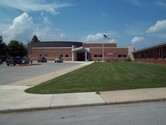
History of Rockville
Rockville - Then and Now
THE HISTORY OF ROCKVILLE
.jpg)
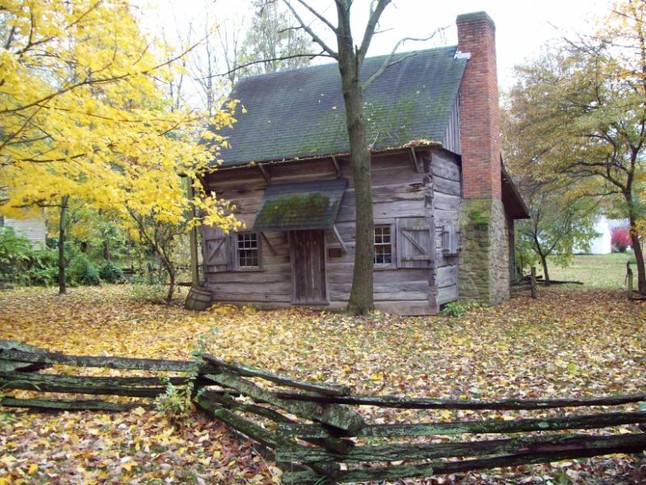
BEFORE THERE WERE BUILDINGS
BEFORE THERE WERE HIGHWAYS
BEFORE THERE WERE BRIDGES
BEFORE THERE WAS ELECTRICITY,
THERE WERE A FEW GOOD MEN
100 ACRES SURROUNDING A HILLTOP
RAY'S TAVERN AND A NEARBY ROCK
THEN CAME
THE BIRTH OF A TOWN
ROCKVILLE, INDIANA
FEBRUARY 20, 1824
Our small town theater made its debut as the Rockville Opera House in 1915. In 1935, the first overhanging marquee was displayed for the first time with the feature titled “Curly Top,” starring Shirley Temple. As time progressed and as our community developed, the second overhanging marquee was presented to the town in 1948 and remains the building’s symbol today.
With weather, time, and age, our little theater and its marquee began to suffer. In 2003, the first major restoration of the building and the marquee took place. It carried us through sixteen years of memories and community entertainment that has brought us to where we are today. Over the years, the historic marquee has begun to drop slightly and has suffered from water and other weather damage. It became a safety hazard for our patrons and employees.
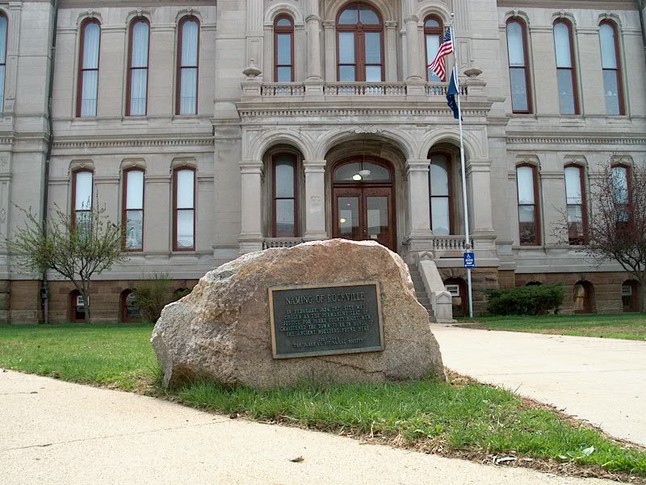
.jpg)
THIS SECTION IS DEDICATED TO THE CITY FOUNDERS AND TO ALL THE PIONEERS, VISIONARIES, BUSINESSMEN, EDUCATORS, LAWMEN, FIREFIGHTERS, PUBLISHERS, PUBLIC SERVANTS AND VOLUNTEERS THROUGH THE YEARS WHO HAVE UNSELFISHLY GIVEN OF THEIR TIME, FORTUNES, AND LIVES TO CONTINUALLY MAKE ROCKVILLE A BETTER, SAFER AND MORE PROSPEROUS PLACE TO CALL HOME.
THE PICTURE BELOW WAS TAKEN 125 YEARS LATER IN THE 1950's
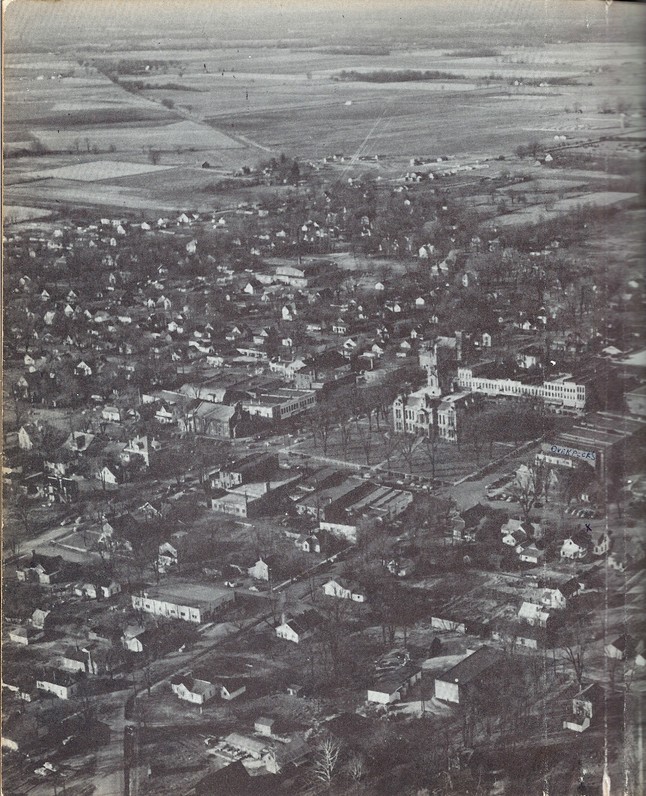
.jpg)
Rockville circa 1950's picture (above) appears inside the 1958 Annual looking to the northwest.
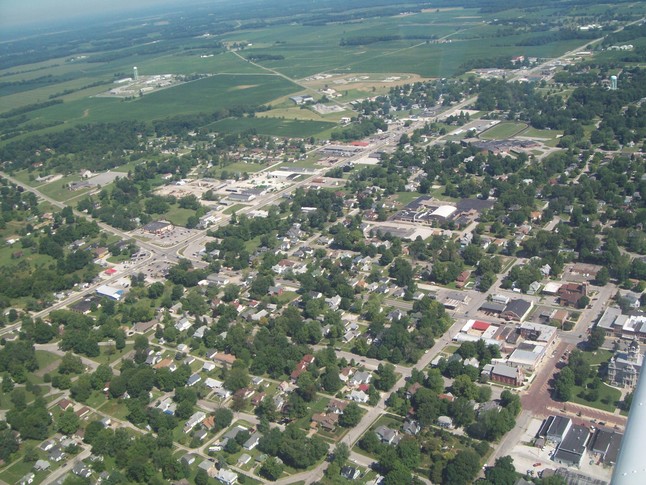
Looking northwest. Picture taken July 3, 2010 by Bill Hill 66
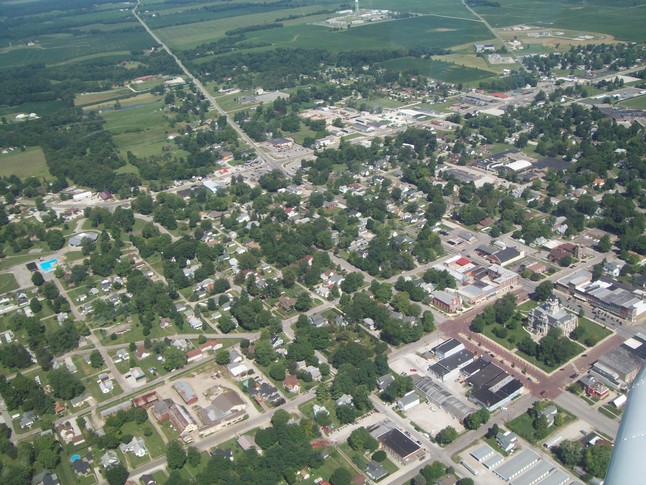
Looking northwest on July 3, 2010 by Bill Hill 66
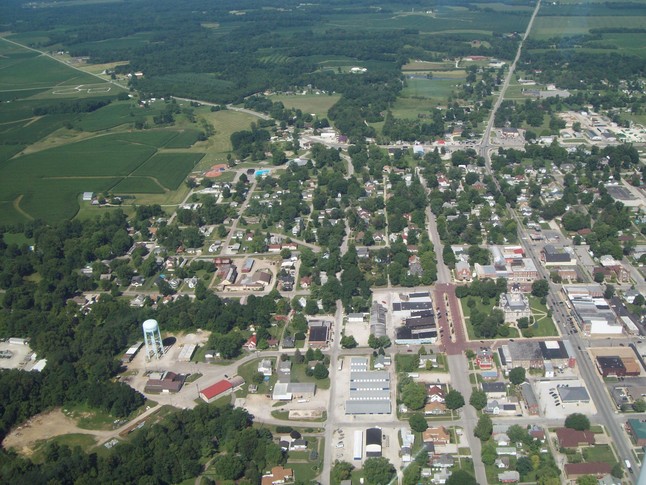
The south part of town looking west on July 3, 2010 by Bill Hill 66
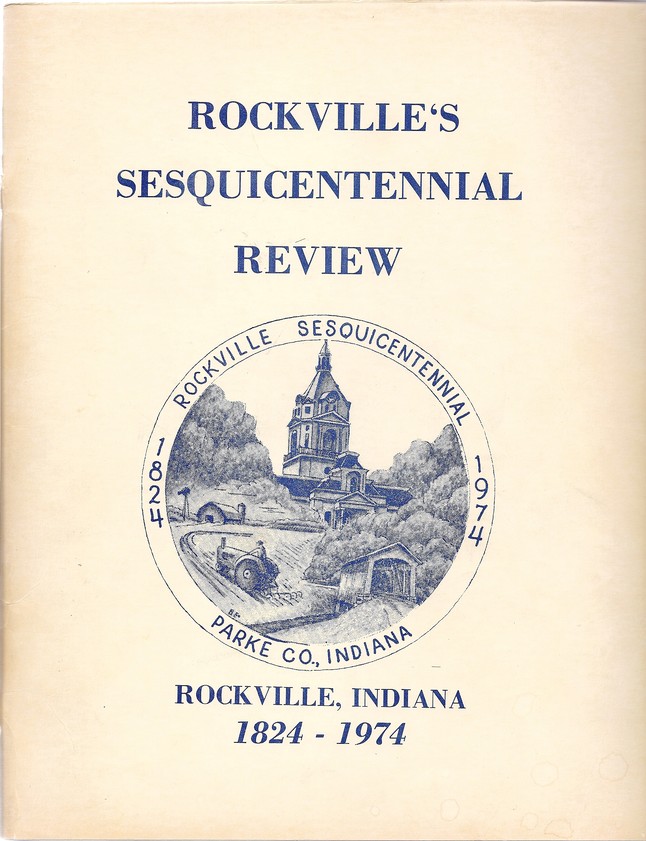
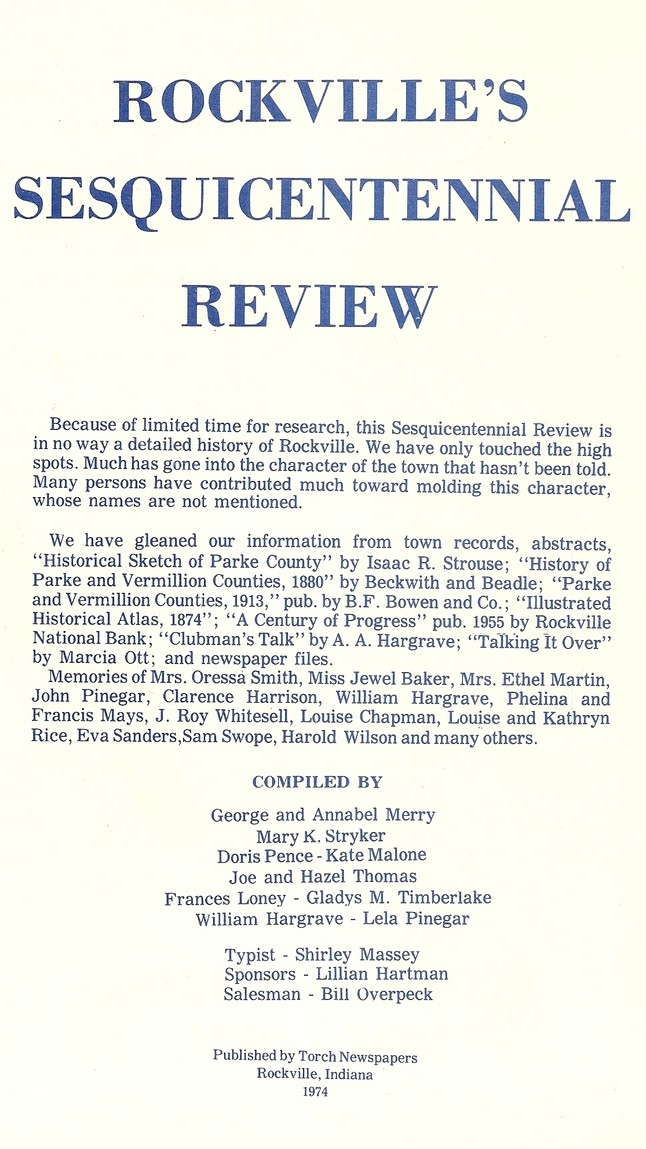
The Rockville Sesquicentennial Review of 1824-1974 (presented here in its entirety) provides an excellent foundation around which to present many snapshots of the History of Rockville. We have attempted to embellish its pages with pictures and other items of interest from other sources. Much of the additional information and drawings that have been added are from the Combined 1874 Atlas, 1908 Atlas, 1916 Isaac Strouse Centennial;Memorial; & Name Index of Parke County, Indiana Book located at the Parke County Museum (three books in one) and The Parke Place Monthly Magazines from 1981 thru 1988. You can see the cover page of all 85 Parke Place Monthly Magazines in the Parke Place Covers section of this website.
A special "thanks" goes out to Karin Shoemaker Woodson, Class of 1960 at the Parke County Historical Museum and the ladies at the Rockville Public Library, and Blaine Martin, Class of 1980, author of "Images of America-Rockville for sharing hundreds of photos from their collections. Blaine's book (cover and back pictured below) is now available for purchase in many Rockville establishments, The Variety Store and the Parke County Historical Society. It is a must have for your coffee table or gift.
.jpg)
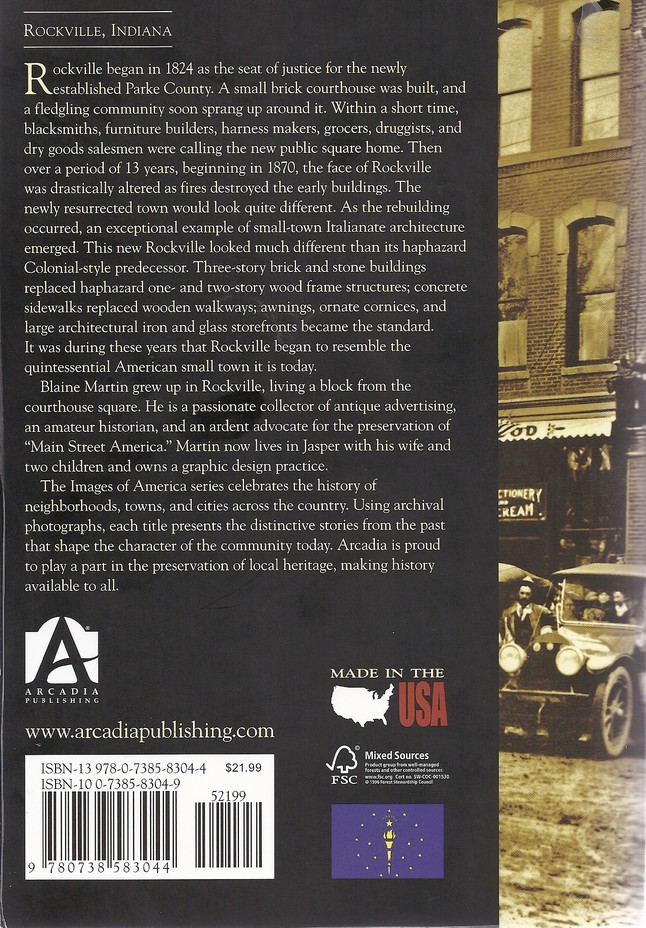
If you have photos or information that would enhance this History of Rockville section, please "contact us" through the Home Page.
.jpg)
.png)
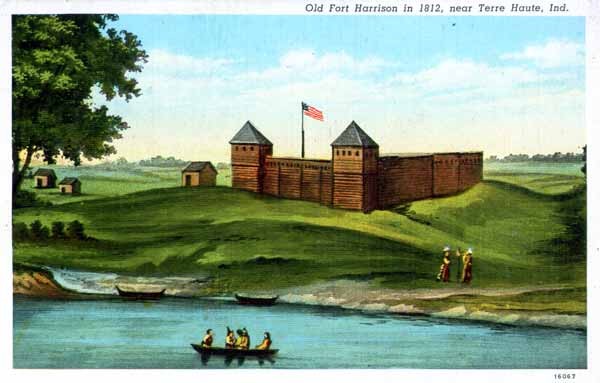
Ft. Harrison was located about 3 miles north of the present Vigo County Court House above the river west of the stop light at U.S. 41 and Ft. Harrison Drive. The area where the Vigo county court house now stands was a Wea Indian settlement along the Wabash River.
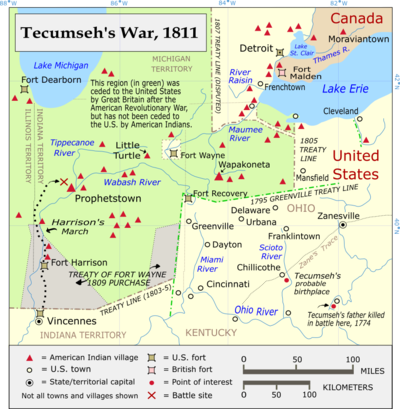
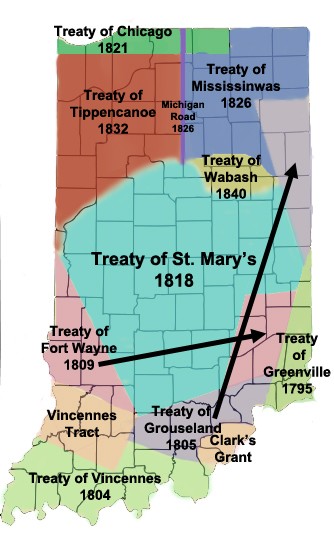
(Above Left) The 1809 Ten O'Clock Treaty of Ft. Wayne Boundary Line runs thru the southwest corner of Parke County from Montezuma about 60 miles southeast thru Catlin, Bridgeton, Van Buren and beyond, then back northeast to Ohio. There are markers on U.S. 41 near Mecca, at Bridgeton and near Van Buren that denotes the line. (See Markers Below)
(Above Right) The October 6,1818 Treaty of St. Mary includes the land underneath Rockville (and most of Parke County) and most of central Indiana, over 10,000 square miles. Payment to the Miami Indians would be an annual payment of $15,000 in silver along with 160 bushels of salt annually along with some farm tools and a few other concessions. The Treaty of St. Mary marker below(also known as The 1818 Treaty With The Miami, is located in Delphi, Ind.) Benjamin Parke was one of the signers. To read more about the different Treaties, see Parke County History or Google the different treaties.
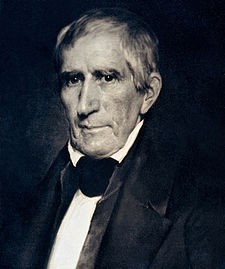

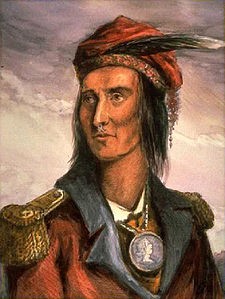
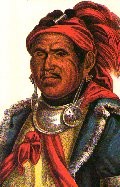
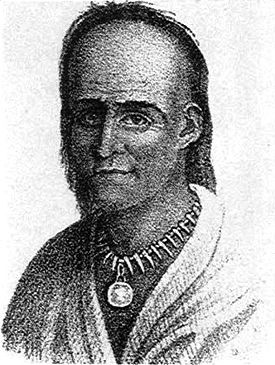
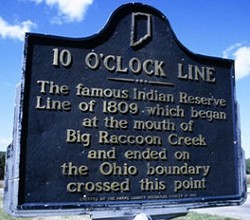
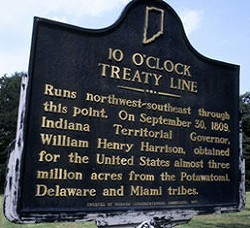
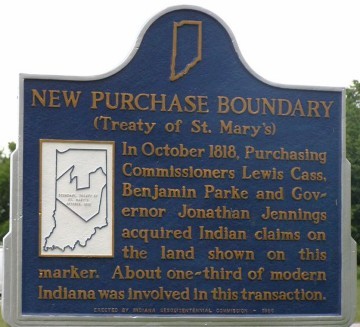
Gov. William Henry Harrison, Rev. Isaac McCoy, Tecumseh & his brother"The Prophet", and Miami Indian Chief Little Turtle. Before Indiana was a state, the Capital of the Indiana "Territory" was Vincennes.
The Ft. Wayne Treaty of 1809 along with other Treaty's with the Indians opened up the southern third of the Indiana Territory along the 10 o'clock Line to the U.S. Government and to settlers. The 1809 Treaty of Ft. Wayne opened up what is now Vermillion, Clay, Vigo, Sullivan, Greene and the southwest tip of Parke County to settlers. Tecumseh and his brother, the Prophet, never signed nor agreed to this treaty and rebelled. Many separate Treaties for the purchase of the different Indian land areas were signed with the Indians as the new country grew toward the Mississippi River.(See the maps above). Although the treaties granted certain Indian Reservations (one along the Wabash river at Montezuma) and small land grants to the chiefs, basically the Indians were pushed further and further west.
When Indiana became a State in 1816 the State Capital in Corydon was moved to Indianapolis in 1825, one year after the founding of Rockville.
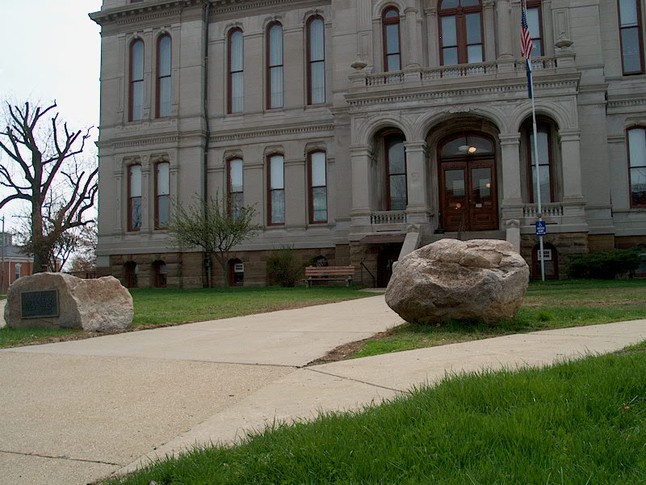
The Rockville Rocks (Rox)
Indian Johnnie Green was shot and fell ( or thrown) into Sugar Creek near the Narrows.
THE NAMING OF ROCKVILLE BY THE ALDEN LINEAGE
An account of the naming of Rockville was published in the Rockville Tribune, April 5, 1922:
"Joseph Ralston Sr., an old Jacksonian Democrat, named the town of Rockville (probably the landless bystander referred to in the Rockville Sequicenntenial Review history below). "Father was familiar with the hills of the area on which Rockville now resides before there was scarce a stick amiss. He was one of the party surveying the area for the new town site. One evening after they had finished their work for the day, and were sitting on some large, granite boulders in the shade on the plot of ground they had laid out for the public square, the discussion came up as to what the proposed town should be named. Where upon one Mr. Joseph Ralston Sr. stood up on one of the boulders and said "I suggest the town be called Rockville in honor of these big rocks." After a little discussion, the suggestion was agreed upon, and the town was so named." (From a letter written to Charles Lambert from Tighman Howard Swaim in California.)
Joseph Ralston Sr. left Ireland in 1784, moved to the newly declared USA, Parke County in the Indiana area before Indiana was a state. He died 50 years later in 1834 and is buried at Armiesburg Cemetery southeast of Montezuma. His son, Joseph W. Ralston, Jr. died in 1897 and is buried in the old Rockville Cemetery on East High Street at the far west side of the cemetery, marker facing west.
.jpg)
.jpg)
Joseph W. Ralston Jr. and his wife, Martha were the parents of Miss Belle Ralston, who married Thomas Knight Smith. Thomas K. and Belle Ralston Smith had a daughter, Mary Elizabeth "Lizzie" Smith, Class of 1903, who married Guy Alden. They later owned the Ford Dealership. Lizzie and Guy are buried in Memory Garden.
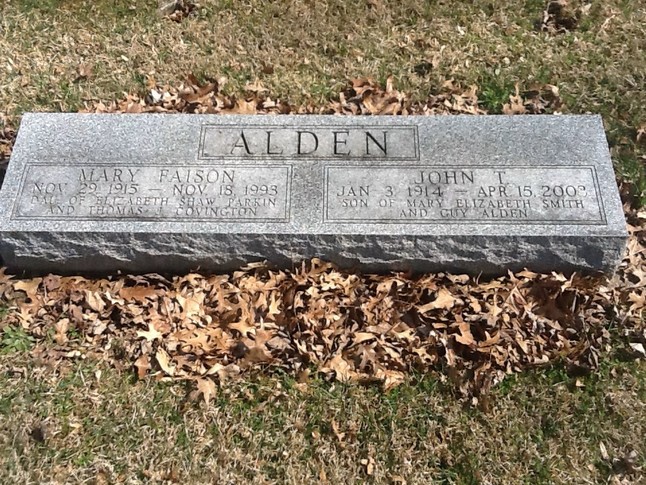
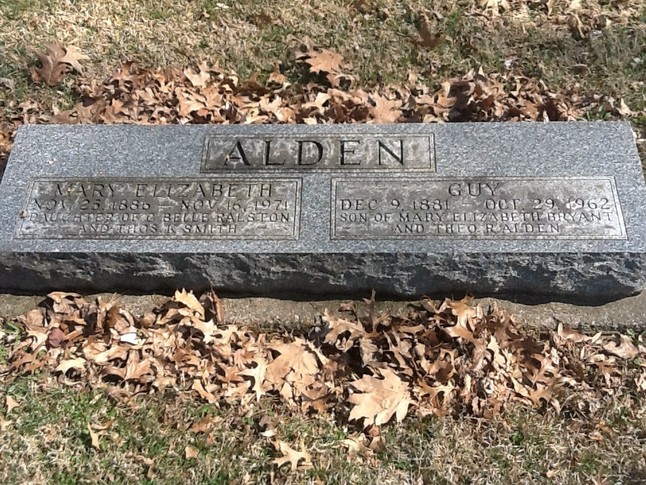
Guy and Lizzie had a daughter, Virginia, Class of 1925 and a son, John Alden Sr. Class of 1932. Virginia Alden married Rockville Attorney Hugh McFaddin. John Alden bought the Ford Dealership from his parents and operated it his entire adult life. John and his wife, Faison.buried in Memory Garden next to Guy and Lizzie, had three children that all attended Rockville High School during the 1960s-- Betsy Alden, Class of 1960; John Alden Jr., Class of 1963; and Robert "Bob" Alden, Class of 1964.
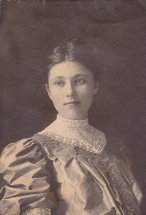
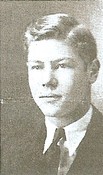
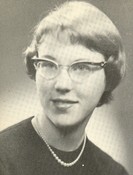
.jpg)
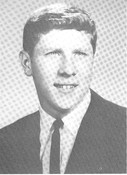 .
.
Lizzie 1902 John 1932 Betsy 1960 John Jr. 1963 Bob 1964
.jpg)
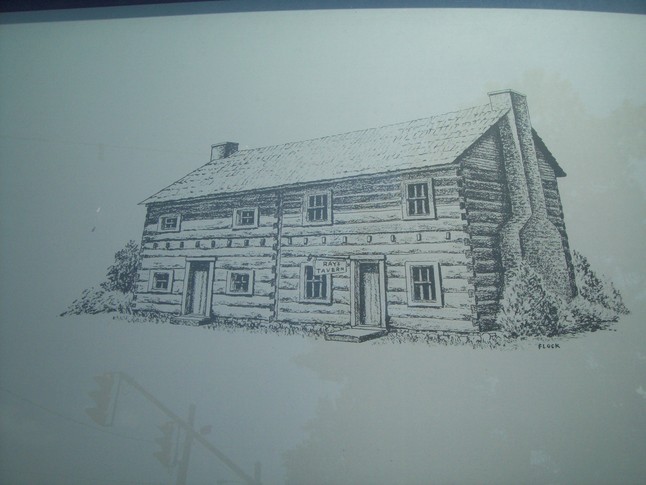
Before Rockville existed, this area of wilderness was known as "Ray's Tavern". Andrew Ray built a double log house/tavern in 1823 where the National Bank now stands on the northeast corner of what is now Market and Ohio streets. It was in Ray's Tavern on Feb. 20, 1824 that the official decision was reached for this area to become the county seat and a more suitable name was needed for the new town.
The log house/tavern stood 44 years until 1867 when a 3 story National Bank Building took its place. The 3 story bank building burnt and was replaced in 1906 with a 2 story bank building.
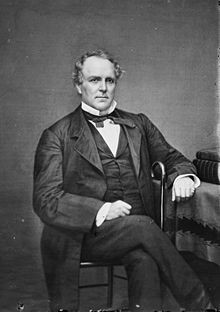
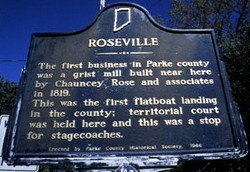
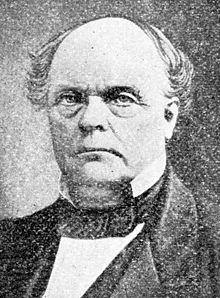
(Left) Parke County was named after Judge (Major) Benjamin Parke who died in 1835 and is buried in Crown Hill cemetery in Salem, Indiana. He was involved in the founding of the Vincennes Library and Vincennes University and served on the staff of Gov. Harrison as a Judge of the Indiana Territory. He was a signer of the 1818 Treaty of St. Marys which obtained from the Indians the central Indiana Territory land on which Rockville sits. After statehood, he served as a Congressman and a U.S. District Judge. (See the History of Parke Co. Section)
(Right) Chauncey Rose moved to Dotyville (now Rosedale) in 1819 for six years and built a mill northwest of that town at Roseville (now Coxville). He later moved to Terre Haute and speculated buying land east from 7th street that Terre Haute would grow eastward. He guessed correctly. He built the Prairie House, later named the Terre Haute House on 7th Street in 1855 so that the engineers building the new Cumberland Highway (U.S. 40) would have suitable living quarters. He later got into the railroad business and had difficulty getting scientists and engineers to come west to Indiana so in 1875 he endowed a fund to start preparations for a new college (Terre Haute School of Industrial Science) for scientists and engineers. The name was later changed to Rose Polytechnic Institute against his objections, and later Rose-Hulman Institute of Technology. He donated 9 acres at 1275 3rd Street in Terre Haute for his new college. (This location later became Gerstmeyer Tech High School when the college was moved to the far east side of town.) He died in Terre Haute on Aug 13, 1877 five years before the college officially opened on March 5, 1883. The school was moved farther out to East Terre Haute to its present location on 123 acres donated by the Hulman Family in 1918 east on Cumberland Rd (U.S. 40.) now called Wabash Ave.
The streets for a new town around Ray's Tavern (Rockville) were laid out in the fall of 1823 in a 25 block, square grid with a Public Square at the center of 100 acres individually donated by three land owners Andrew Ray, Aaron Hand, James McCall. Each block was divided into quarter section lots and numbered, from 1 thru 106. The yet to be new town was declared the permanent county seat a few months later on February 20, 1824 and an appropriate name for the yet to be new town was chosen.
.jpg)
North/South streets of the "Original Plat"were named (starting on the eastern city boundary) Erie, Virginia, Jefferson, Market, Michigan, and Beadle. East/West streets were named (starting at the northern boundary)Howard, York, Ohio (later becoming U.S. #36), High, and Pennsylvania. The Original Plat called for a Public Square with the town blocks radiating outward two and a half blocks; both to the east and west, two blocks to the north and one and a half blocks to the south. The Original Plat is bordered on the east by one half block on the east side of Erie Street, the northern boundary by Howard Street, the west by Beadle Street and the continuing alley southward, and the southern border one half block south of Pennsylvania Street. Each full block, except for the Public Square was divided into 4 quarters. The half blocks around the perimeter were divided into 2 quarters making for a total of 106 platted numbered quarter section Lots. The Lots then get further divided into smaller residential and business size parcels. The alleys running east/west through the middle disects most of the blocks into a north half and a south half.
.jpg)

(Above) After Andrew Ray moved to his new home, his log cabin on the square became the first building used as a schoolhouse.
.jpg)
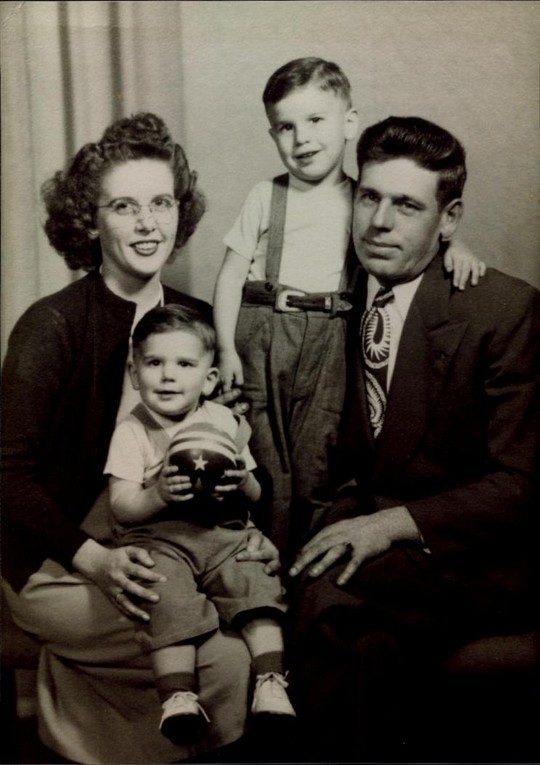
(Above) As of 2013, an old log house still stands south of Pennsylvania and Virginia on part of Lot 87. A young married couple, Ernie and Margaret Hill with their two young sons, Bill (RHS 1966)& Jerry (RHS 1964) rented this home from 1947 thru 1953 at which time they bought and moved into their own home in Catlin where Ernie and Margaret resided until 1989 when they moved to 202 East High. According to Margaret Hill, in 1950 the log home was owned by a Mr.Don Collings and the rent was $30 per month, about one weeks salary for most young workers. Ernie died in Oct. 2005, Margaret in May 2013. The cute little boy holding the ball assembled this History of Rockville Section in 2011 for your enjoyment. At the age of 64, I'm not so cute anymore.
The Hill family photo above was taken approx. 1950.
.jpg)
.jpg)
.jpg)
.jpg)
Reportedly, these stones were part of the foundation of one of the earlier courthouses in the southeast corner of the public square. Both pictures look northeast across the southeast corner of the public square.
.jpg)
.jpg)
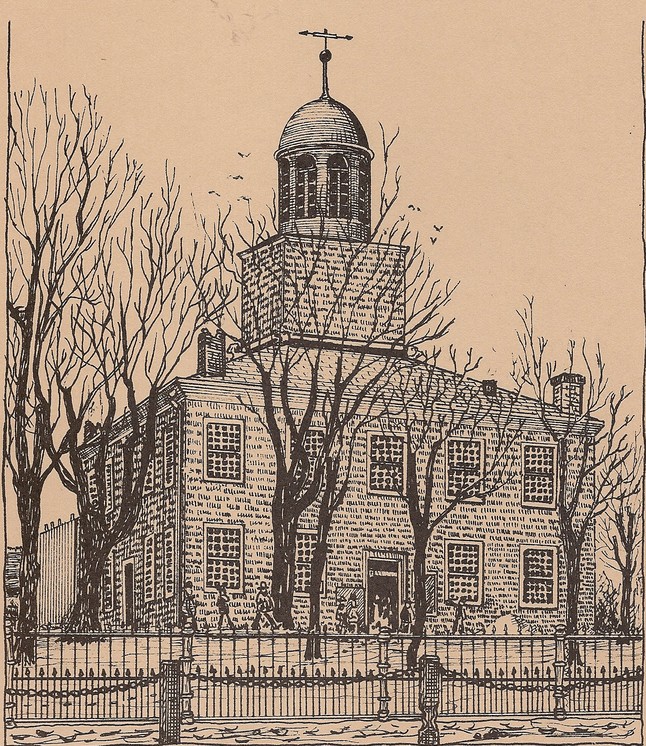
Look closely and you can see people walking out in front of the court house windows and door. Notice the chimney's in each corner of the roof.
The"Log" court house stood from 1826 for 35 years before it burned in 1861. In 1829, as more space was needed, the second court house above was started. It was built of brick. In the month of November 1832, a fire consumed the Clerks records before the records and deeds were moved into the new brick structure. All deeds, records were burned except those recorded in book D, which was opened November 12, 1831 the year before the fire and was only about half filled.
The 60' X 60' two story "Brick" structure stood for 50 years until the third and present court house of limestone was dedicated in 1882. On the second floor on the east side, there were three rooms. The south east room was used as the Masonic Temple. The Odd Fellows Lodge used the northeast room. The middle room, which was smaller, was used as the countys first public library. The pen and ink drawing by Sam Swope.
By 1863 more space was needed. For better protection for the records against fires, a brick building called the "Clerks Office" was built inside the southwest corner of the court yard. It housed the offices of the clerk, treasurer, recorder and auditor. A WW I statue now stands on this location.
.jpg)
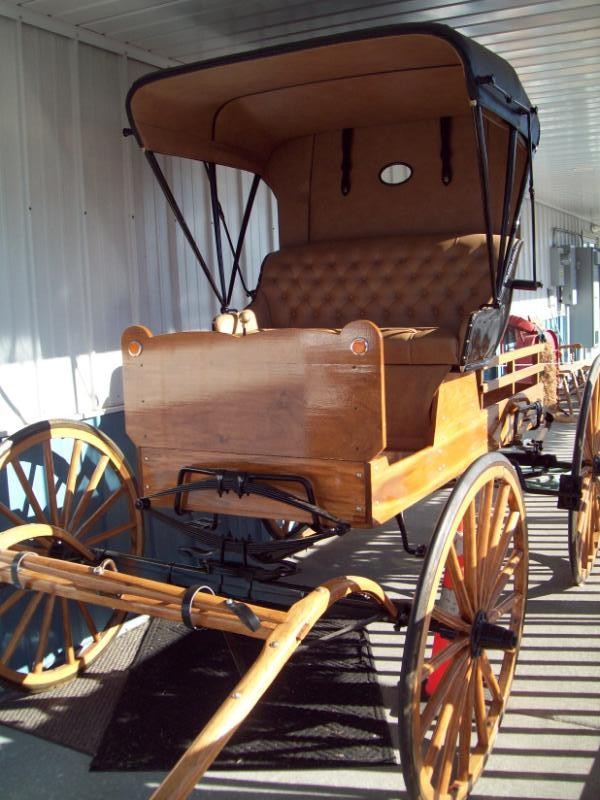
Part of the original wrought iron court house fence now encircle a small court yard at Billie Creek Village.Fences were a necessity in the early days to keep wondering livestock and chickens from entering into the yards and eating the grass, gardens and flowers. An ordinance was past in 1870 prohibiting pigs from roaming freely. Cows continued to roam freely for ten more years.
.jpg)
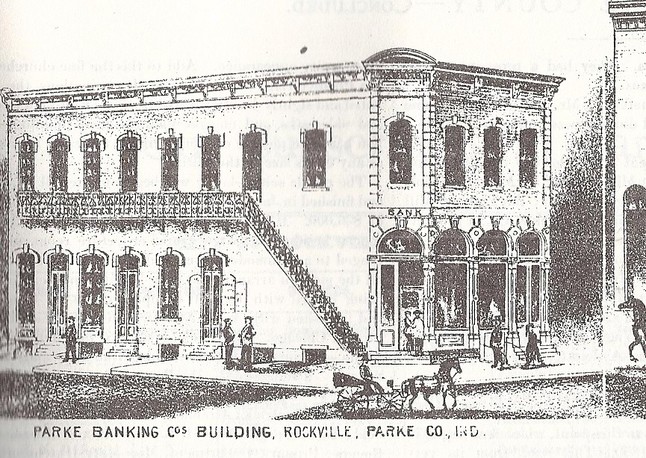
(Left) The Bates Drug store burnt in the eastside fire of 1871 and was replaced by the Parke State Bank Building illustrated on the right.
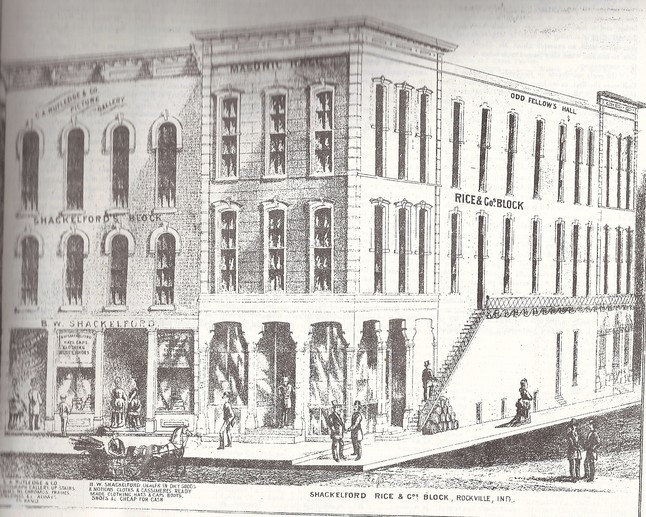
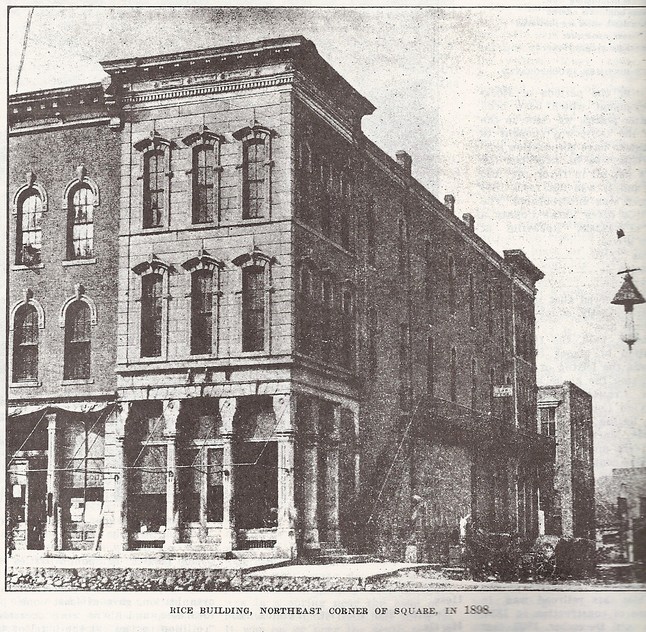
(Above) The corner Masonic Building on the north side of the square. Notice the words "Masonic Building" in the front near the top of the building.
(Below) The Innis Building completed in 1871 on the north side of the square, with the 2nd floor now painted maroon.
.jpg)
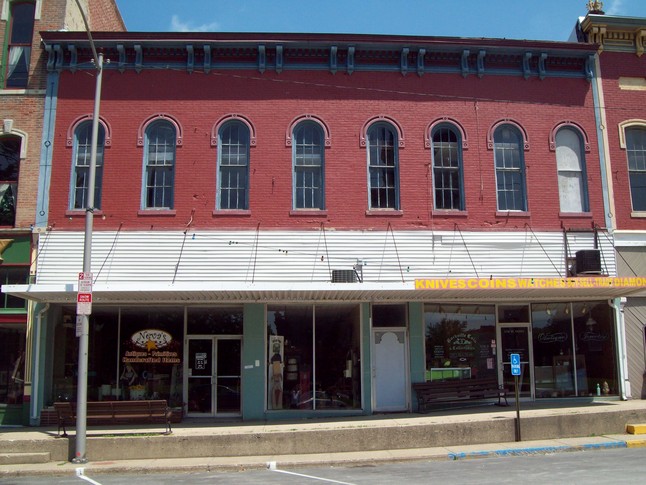
The National Bank started in the middle of the block and later built it's own building on the NE corner pictured below.
.jpg)
.jpg)
(Above) The 3 story brick National Bank Building was built on the site of Rockville co-founder Andrew Ray's log Tavern.
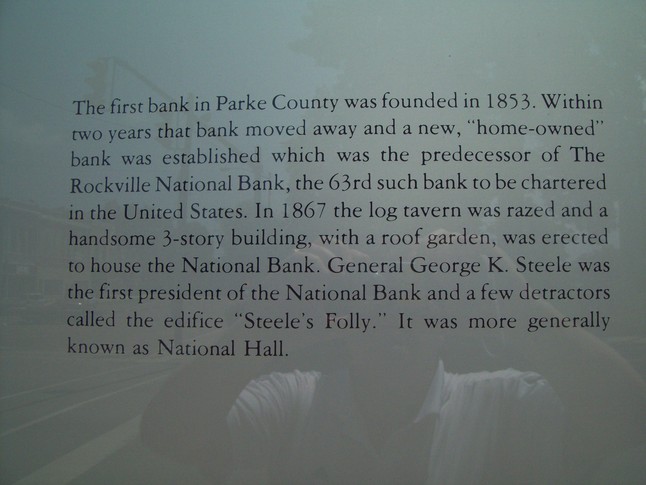
The third floor was a large area called "National Hall" as was used for plays, banquets, meetings and dances. The second floor was offices. This building burnt in 1906 and was replaced with the present two story brick building.
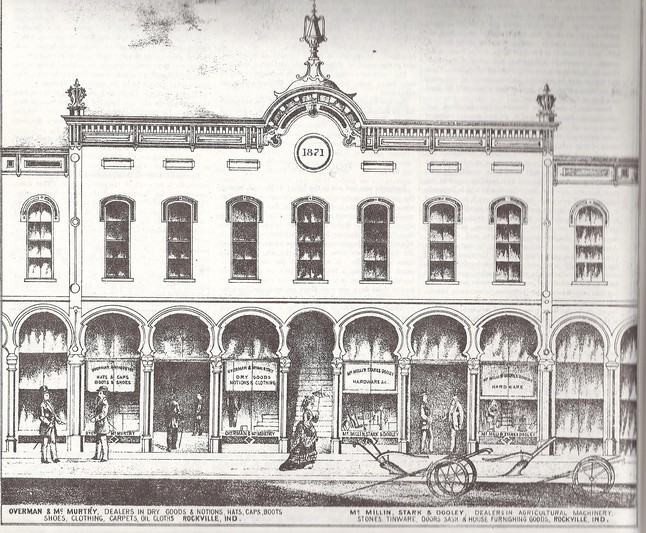
.jpg)
(Above) The Overman Building built in 1871 still stands today on the northside of the square. Then and now.
.jpg)
.jpg)
.jpg)
.jpg)
.jpg)
(Left) The Chas. Aydelotte House was built at the outside south west corner of the court yard (Lot 70). It replaced a wooden house owned by a Mr. Beard as a boarding house.It later served as the home and office of Dr. Collings. Today it is an apartment building. DDS Allen "Buck" Welch RHS 1942 and Dr. Basil Merrell once had their offices in this building in the late 40's and early 1950's before they built a new office building on E. York Street where Bucks daughter still practices dentistry today.
(Right) Built 1838, the Dr. P.Q. Stryker home on the outside of the southeast corner of the court yard on Jefferson at High Street on Lot 67. This home was later owned by Mr. Joiner, and then Mr. Skelton. You can see the Barnes/Rice Funeral Home on High Street is behind the Stryker home.
.jpg)
.jpg)
(Above) The Tenbrook Planing Mill was located about 100 yards south of Pennsylvania Street on Virginia Street just outside the original city limit beside the old train tracks. (See Plat below)
.jpg)
50 years later in 1874, eight Additions had been platted and added to the Original Plat, and the corporation line had been extended in all directions. Platted Additions included North Rockville Addition, Stark Addition, Alden Addition, Cornthwaite Addition, Houghman Addition, all north of Howard Ave. The West Addition extended out to College Ave, the Nyes Addition and the Highland Addition out east past the old cemetery. The 1874 Plat map of Rockville is shown below.
The 25 block Original Plat is outlined below as the middle box.
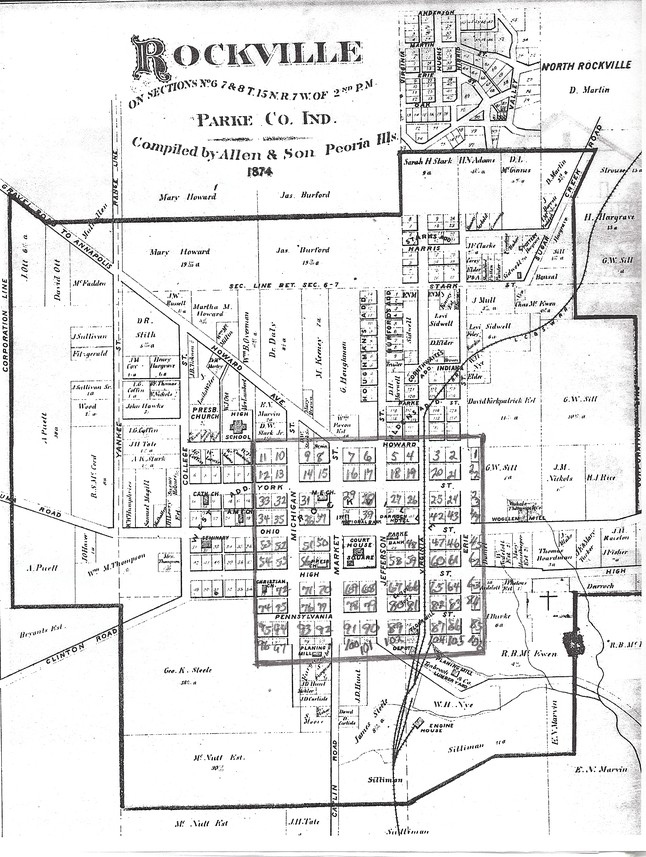
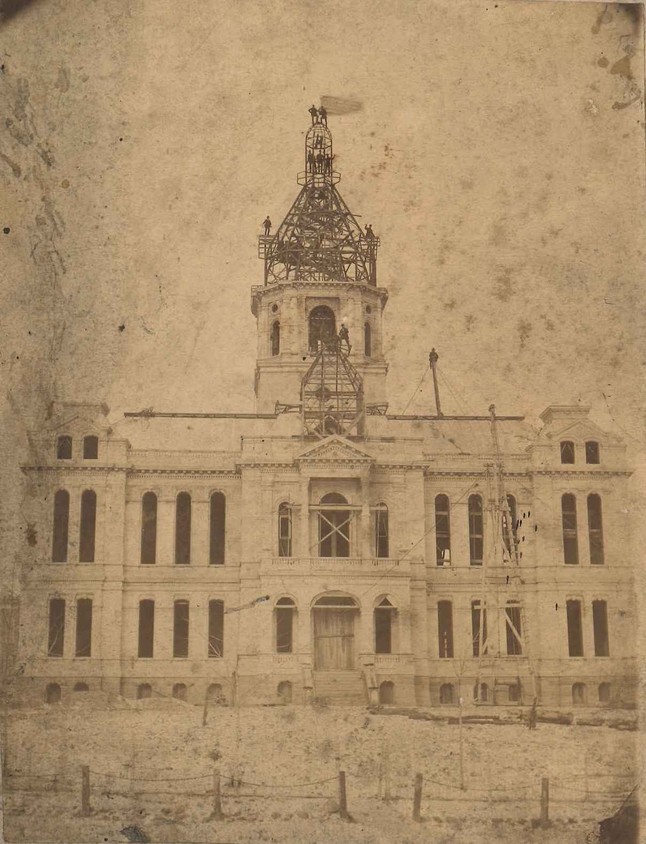
.jpg)
By 1908 below, over the decades as Rockville grew, approximately 17 new neighborhood "Additions" had been developed and platted around the Original Plat. Some of the added additions include the McCune 1st, 2nd and 3rd Additions (southeast) from the back of the Ferguson Planing Mill west to the park.Howard Bryant Addition and Coffin Addition around College Ave., Aldens Addition, Cornthwaith Addition, Sills Addition, Hunt's Addition, Burfords Addition, Kirkpartricks Addition, Stark 1st & 2nd Addition, Asbury Addition, Houghman Addition, Asbury Addition, North Rockville Addition (all north and northeast of Howard Street),Highland Addition (east), Nyes Addition (east) have all been added and platted. The railroad was re-routed behind the Tenbrook Planing Mill and two blocks east as to bypass Virginia Street and a new depot was built.
.jpg)
.jpg)
Notice the railroad tracks have been moved two blocks east and no longer run up the middle of Virginia Street. The old woolen mill stood where the old grain silo's now stand on the north side of E. Ohio Street. The old train depot still stands on the south side of E. Ohio and serves as the Welcome Center.The train tracks are now gone.
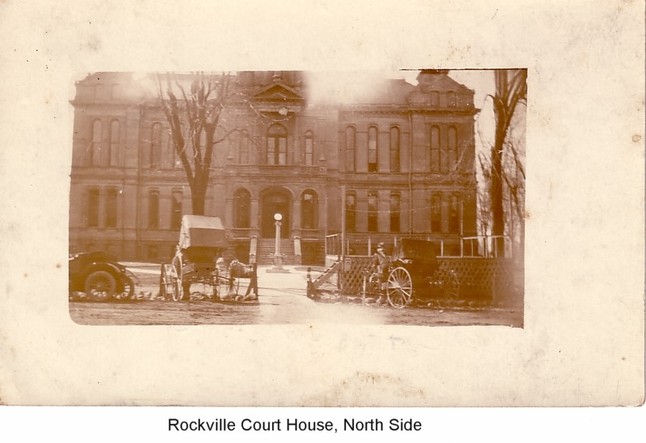
.jpg)
.jpg)
The first Catholic Church in Rockville was built in 1867 on the south side of W. York near College Avenue on Lot 4 of the West Addition.
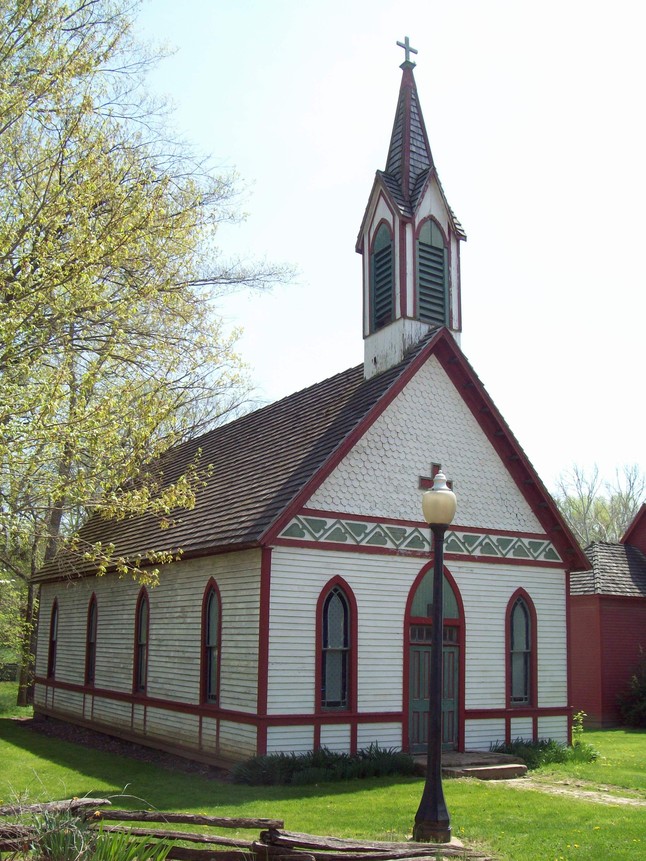
.jpg)
(Left) This Catholic Church was built in 1886 facing West onto Virginia Street between Ohio (U.S. #36) and High Streets on Lot 47 just north of the Rockville House. It was moved to Billie Creek Village in 1972 after a 1969 fire next door at the Sinclair gas station cinged the north side of the church. A beautiful new Catholic Church was then built on the same corner but facing north onto Ohio Street. (Right) The new St. Joseph Catholic Church built in 1972 facing Ohio Street (U.S. 36). The parking lot in front of the church is the very site of a house fire on Friday evening, May 3, 1963 that claimed the life's of five retarded children. Six other retarded children were rescued. The nativity scene pictured above is where the Sinclair Gas Station burned in 1969. At the time, there was a small Shell Gas Station across the street to the west.
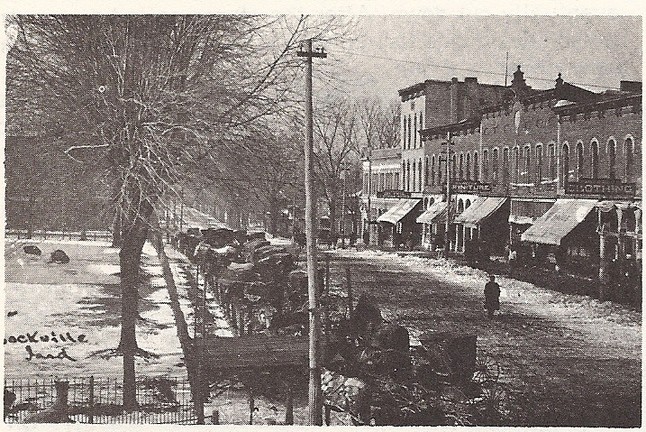
Looking west down U.S. 36 (Ohio St.), notice the two rocks on the north side of the court house square to the left, early 1900's. This picture would have been taken sometime after 1906 after the three story Rockville National Bank building had burnt and rebuilt as a two story building. Part of the court house fence now encircle a small court yard at Billie Creek Village.
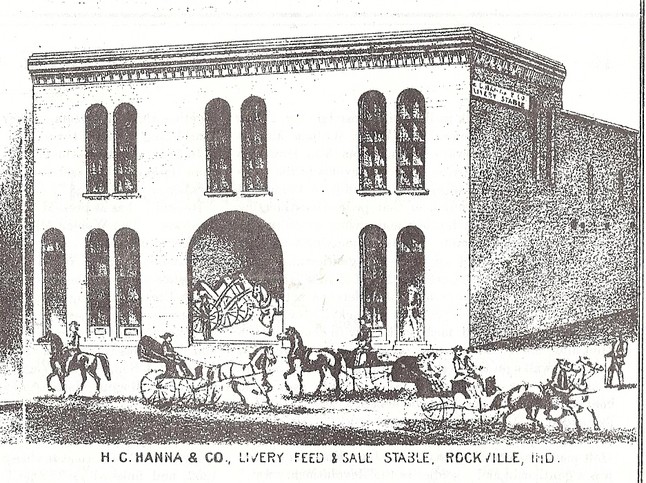
.jpg)
The present brick Methodist Church was built in 1865 where the Hanna Livery once stood at Market and York Streets. The Methodist's first built a house called the Old Church in 1837 on the north side of West Ohio Street (U.S. 36). It was sold to the African Methodist (A.M.E.) congregation in 1865 and torn down in 1900. The Negro students used the Old Church House on west Ohio Street as their school, and later the Seminary Building on the southside of W. Ohio a half block further west.
(Right) The Methodist Church replaced the Hanna livery barn in 1865. The house beside the Methodist Church was replaced by Boardman's livery and later, the Library in 1916. The Methodist Church picture above was taken from the roof of the National Bank Building then known as the Harris Building, named after one of the Bank co-founders.
.jpg)
.jpg)
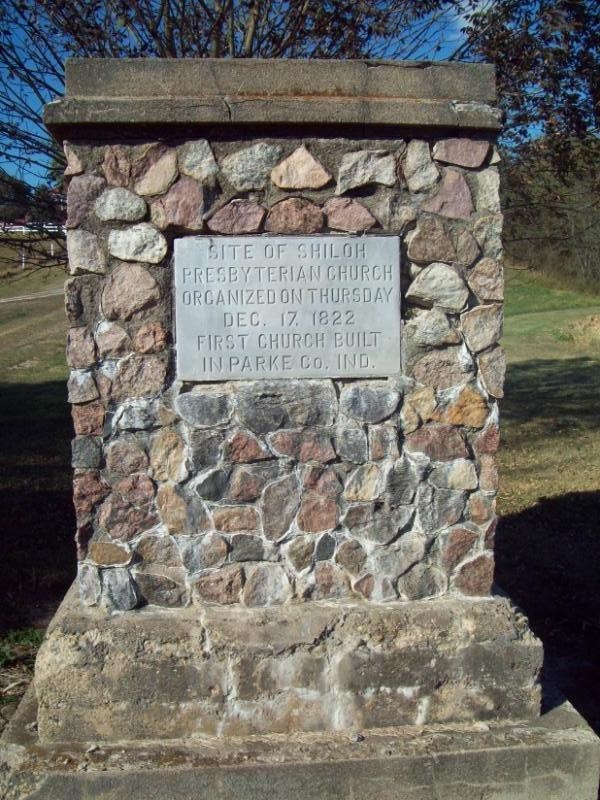
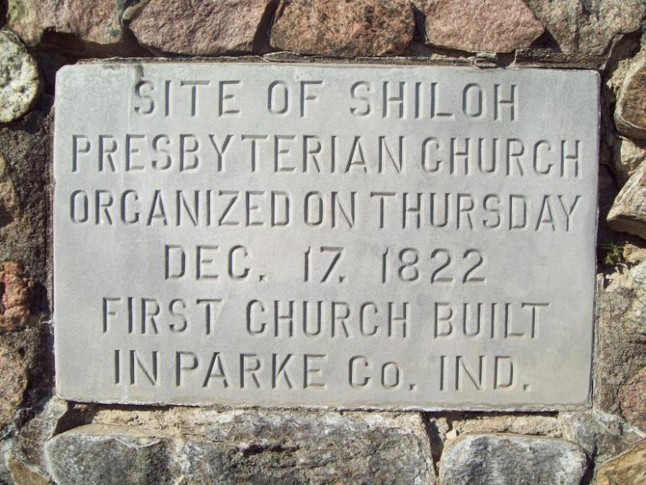
The Church marker above stands between the Sanatorium and Nyesville at the foot of the hill of the old Adams Farm just west of Raccoon Creek Covered Bridge and about two miles north of highway 36.
.jpg)
(Above) This picture was taken looking northeast. This flour mill opened in 1896 at the railroad tracks and East Ohio (now U.S. 36), the present site of the old Co-op grain towers. There was a pond on the back northeast side of the building. A woolen mill stood here prior to this Flour Mill. The woolen mill was started by Mr. Nichols and Mr. Thompson in 1866.
.jpg)
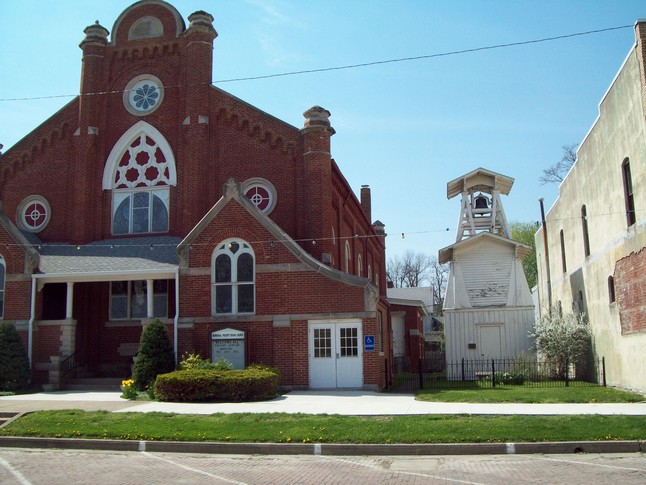
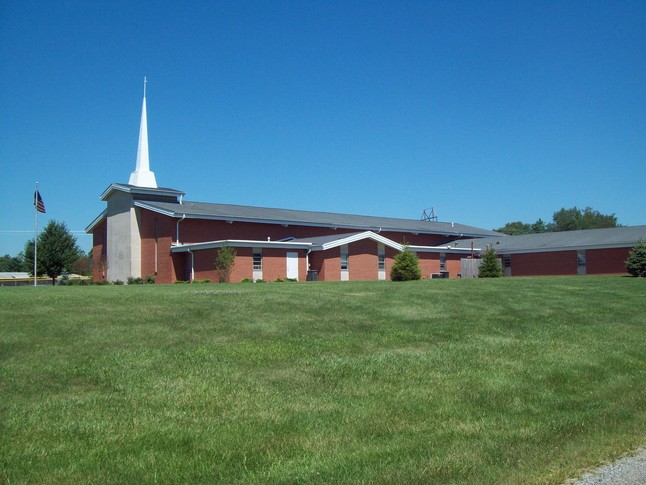
(Left) The Bell of Reuniting the two Presbyterian churches in 1870 is located in the white bell tower on the north side of the church.One of the first Rockville stores was opened by Author Patterson and James McCall in 1824. It was eventually replaced by the Presbyterian Church pictured above. The store was housed in the first wooden framed building in Rockville and also housed the first post office. This corner was called "Steele's Corner".
(Right) The Rockville Christain Church on U.S. 36 West dedicated in Nov. 1973.
.jpg)
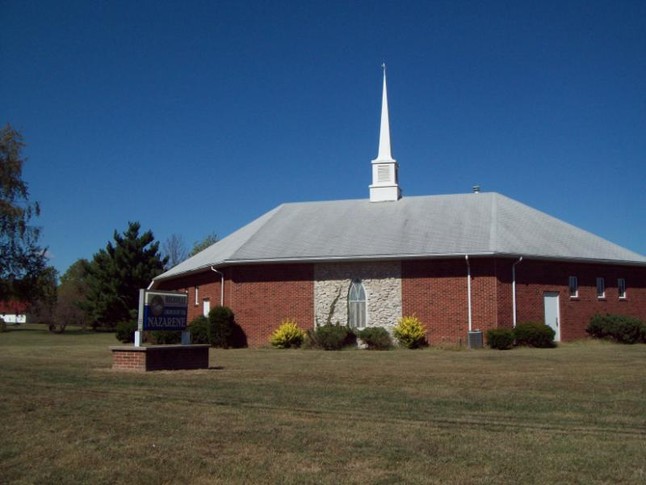
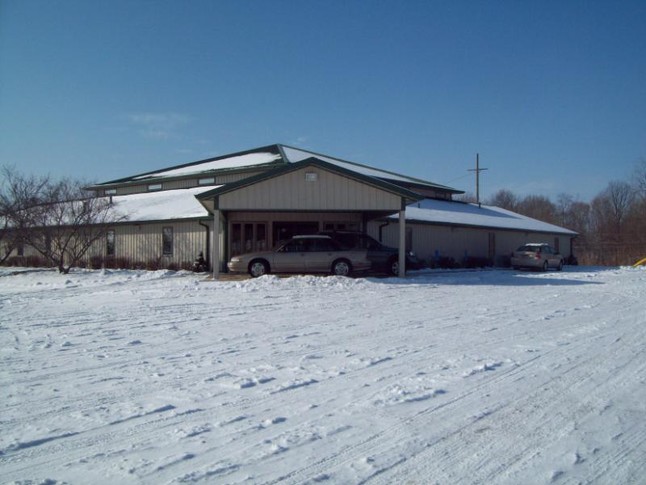
(Left)The new Church of the Nazzarine is now located on west U.S. 36. (Right) The First Assembly-Evangelistic Center on west U.S. 36.
Lot 1 of the Original Plat faces west on Erie at Howard Street and comprises the northeast corner of the Original Plat of Rockville. It was purchased by James Strain. The lot is now vacant.
.jpg)
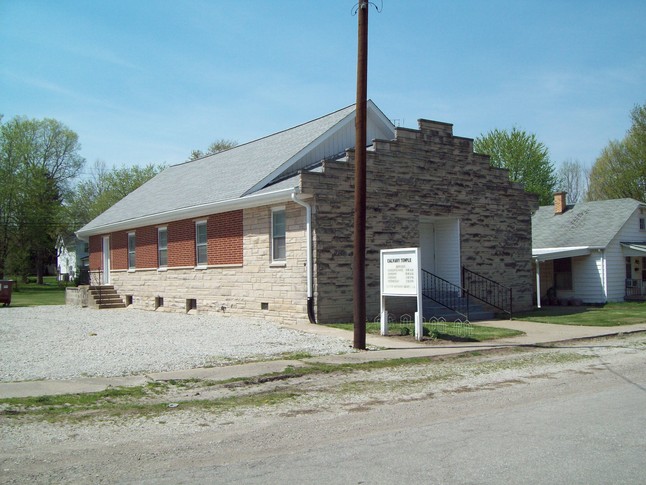
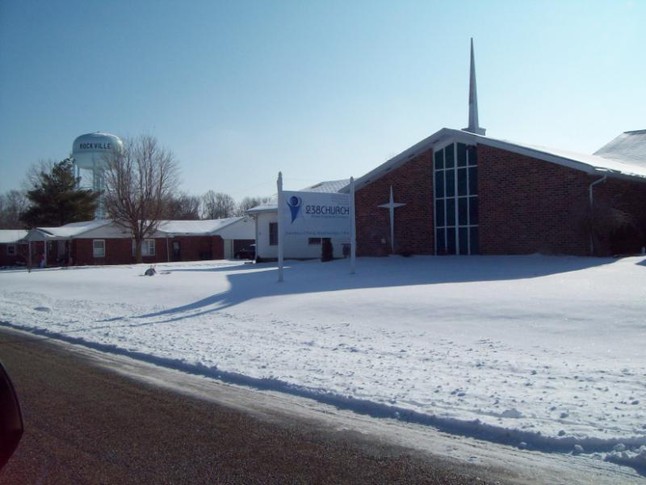
(Left) The Calvery Church at 410 N. Erie. (Right) The 528 Church behind the Ace Hardware.
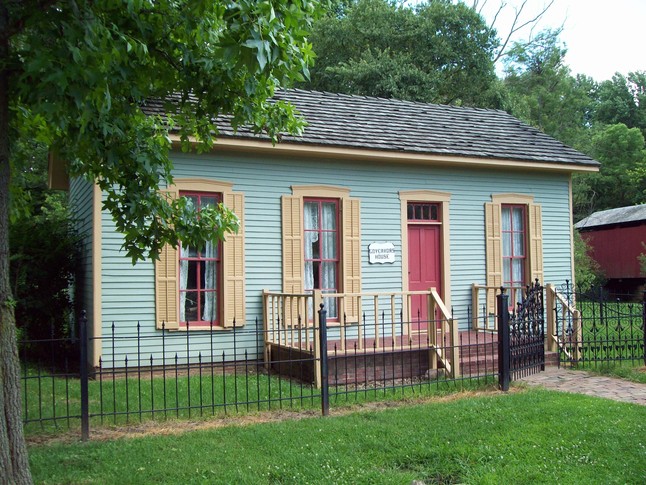
(Right) The former Rockville home of Gov. Joseph Wright from York and Michigan Streets is now located in Billie Creek Village. In 1916 this home served as the Christian Science Society Church Edifice at Michigan and York Streets.
.jpg)
A "Brick" school was located on Lot 1 at Erie and Howard Street beside the Second Baptist Church. It could accommodate between 200/300 students. The third school was held in a vacant house at the northwest corner of Pennsylvania and Virginia.
In 1839, the Seminary School was built on West Ohio (US 36) after Rockville lost the bid for Asbury College (later named DePauw) to Greencastle. For the loss of DePauw, Rockville was awarded with the contract for the State TB Sanatorium 3 miles east of town.
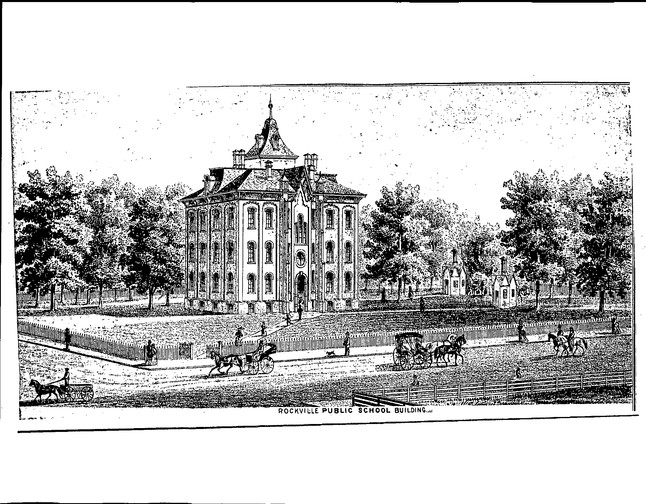
.jpg)
A new 3 story school was built in 1876 at Elm and Beadle. In 1941 a new grade school was built around the old building. The old building was torn down and replaced with the gym in 1949.
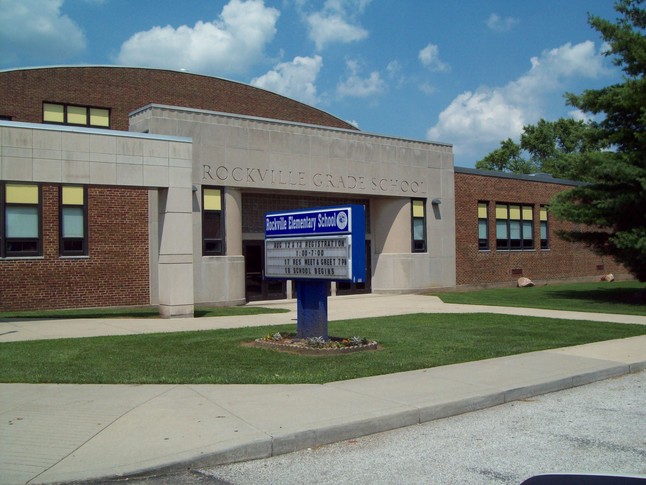
.jpg)
.jpg)
The first graduation class of 1909 from the new building before the sidewalks are installed.
Ernest B. Freed RHS 1926 decorated the stage in the old high school with a mural and later became a famous artist. His artist accomplishments are listed with his name in the Class of 1926. He died in 1974 in California.
.jpg)
.jpg)
.jpg)
(Above) School Supt.'s John Linebarger, and later Claude Noble from 1932 thru 1952. Claude Noble is buried in Memory Gardens.
.jpg)
Rockville High School's first yearbook was published in 1920. It was called the 1920 Rendezvous. The book reportedly covered athletics, school, social and academics. The yearbook, which sold for $1.50, was handsomely bound, with a gold and blue cover. The book contained 100 pages with more than 75 halftone photographs of students, faculty and school organizations. Seniors Buleah McCampbell and James Smiley were in charge of yearbook sales.
(This information taken from the Parke Place Magazine, Vol. 4 No. 8 August, 1984)
(Below) THE EARLIEST KNOWN COPIES ROCKVILLE HIGH SCHOOL ANNUALS
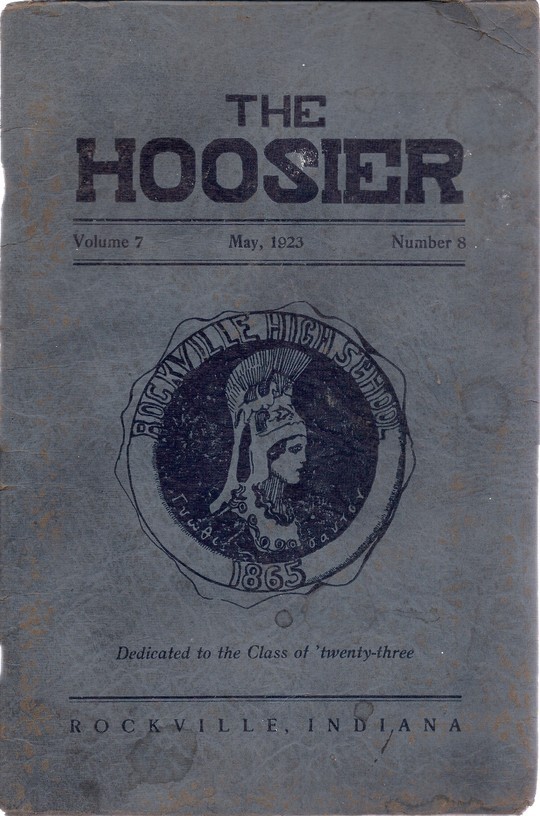
.jpg)
.jpg)
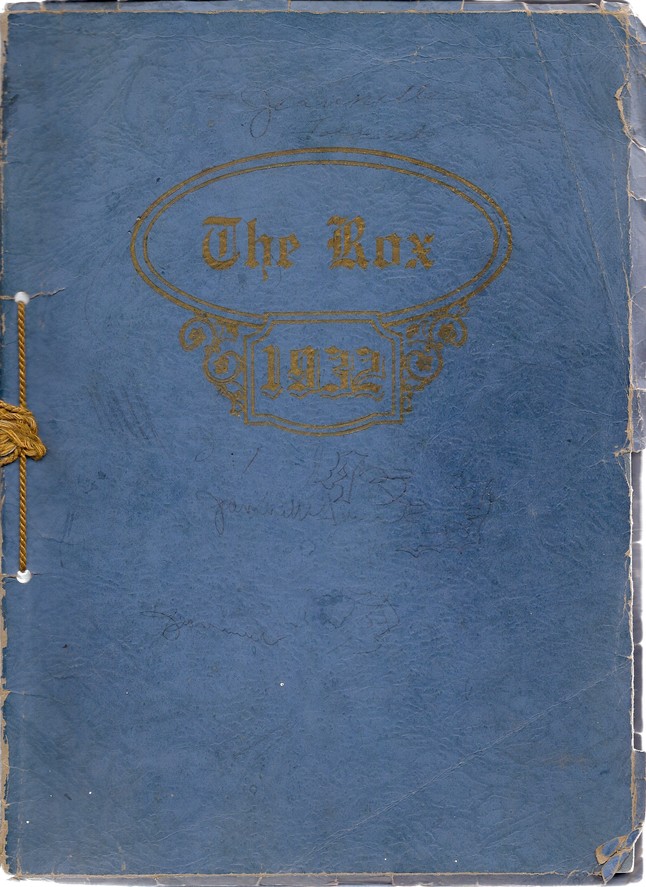
(Left) The complete copy of this edition of the 1923 Hoosier can be seen in the Class of 1923 roster. It is comparable to the Annuals of later classes.The Hoosier books were edited by Rockville High School students and published monthly by the Rockville Republican.
This copy was donated to the Rockville Public Library on Dec. 19, 2009 by Ken Hall RHS 59.
(Middle Left) The brown book is a 1930 Annual. A complete copy can be viewed on this website in the Class of 1930 roster. The original is at the Rockville Public Library. A second copy can be seen at the Parke County Historical Society Museum.
(Middle Right) The burgendy book is a 1931 Annual. A complete copy can be viewed in the Class of 1931 Roster. This copy belonged to Cecil Cook and his classmate wife, Sally Clark Cook, Class of 1931. The Annual was printed by The Benton Review Shop in Fowler, Indiana. The book was loaned to the website committee for scanning on April 26, 2012 by Janet West Hufford, RHS Class of 1972.
(Right) The blue book is a 1932 Annual. A complete copy can be viewed in the Class of 1932 Roster. This copy belonged to Jim Forrest (Forrest Motel) and is now the property of his daughter, Sandra Forrest Bemis RHS 59. Betsy Alden Rutledge RHS 60 also has her father, John's (Alden Ford Sales) copy.
The covers of all the annuals from 1946 through 2011 can be viewed in the Annuals/Cords/Rings section of the website.
.jpg)
.jpg)
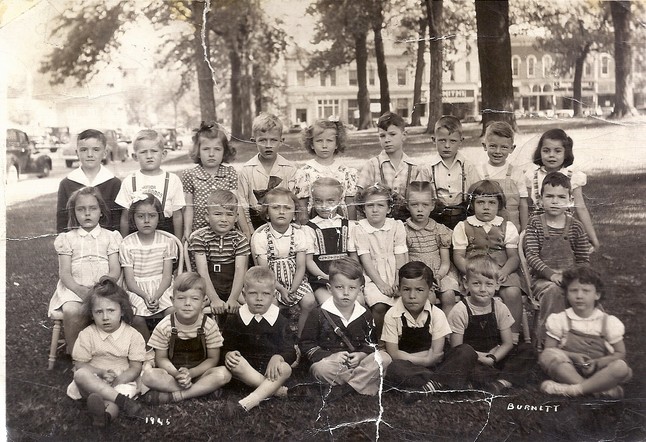
Mary Brown held kindergarten in the back of the Presbyterian church at High and Market Street Lot 57 in the 1930's, 1940's and 50's. Pictured above is her 1940 class (the RHS graduating class of 1957 & 1958).
.jpg)
.jpg)
.jpg)
.jpg)
.jpg)
.jpg)
(Above) Supt.'s John Linebarger, Claude Noble 1929 thru 1952, Russell Garrigus 1952 thru 1976 and Dr. Larry Gambaiani 1976 thru 1991 and Richard Schelsky 1991 thru 2004. Dr. Randall Kerkhoff was the Supt. until December 2011.
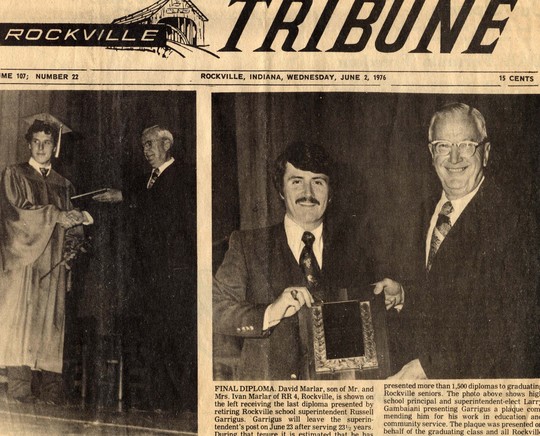
(Above Left) Supt. Russell Garrigus presents his final Diploma to David Marlar 1976. (Right) Incoming Supt. Larry Gambaiani presents a Plaque of Appreciation to retiring Supt. Russell Garrigus.
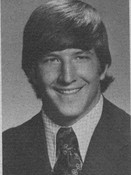
.jpg)
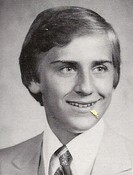
Gerald Kinion RHS 1974 was listed in "Who's Who in National High School Athletics."
(Middle) Dennis Carnine "66" police ID card issued 6-20-1996.
(Right) Blaine Martin RHS 1980 published "Images of America-Rockville" in 2011. The book shows hundreds of historic Rockville photographs and interesting narrative. The book can be purchased at many Rockville businesses and the Parke County Historical Musuem.
.jpg)
.jpg)
.jpg)
The Seminary School was built on land donated by Rockville co-founder Andrew Ray. It occupies Lot 32 & 33 of the West Addition Plat. The original building was two stories tall with a bell in the cupola.
.jpg)
The Old School Presbyterian Church was located on West High Street near College Avenue somewhat behind the Seminary School/Black School building. The Old Methodist Church on the north side of Ohio (U.S. 36) was sold to the Black Methodist (A.M.E.) congregation to use as a church and a school for black students.When the new school of 1876 was built at Elm and Beadle, the black students moved their classses to the Seminary School Building down and across the street from the Old Methodist Church. The picture above of the black students was taken on the east side of the Seminary Building. The building still stands and is now occupied by the Parke County Historical Museum, operated by Karen Shoemaker Woodsen RHS 1960.
.jpg) .
.
(Above) This picture was taken beside a little Shell Gas Station that stood on the southwest corner of Virginia St. and U.S. 36. It was operated in the late 50s by Joe Nowling. It was operated by Harris Borden in the early 50's prior to his operating the Shell Station on the southwest corner of U.S. 36 and U.S. 41. Bill Brown, RHS 65 presently operates the station at 36 and 41. Bill learned the business from his father who operated a station on the northwest corner of Michigan and U.S. 36.
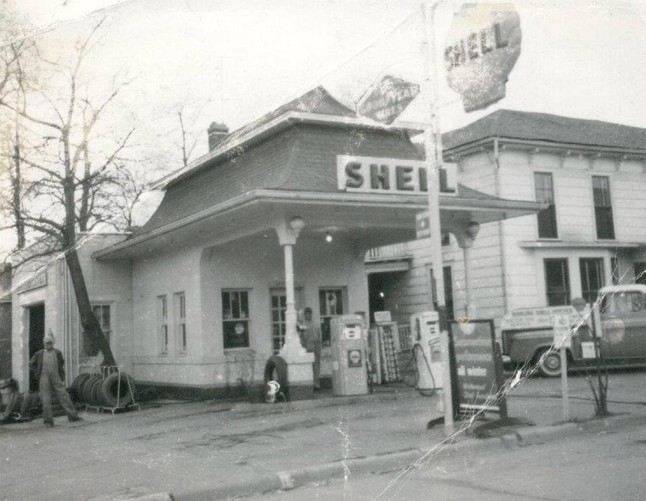
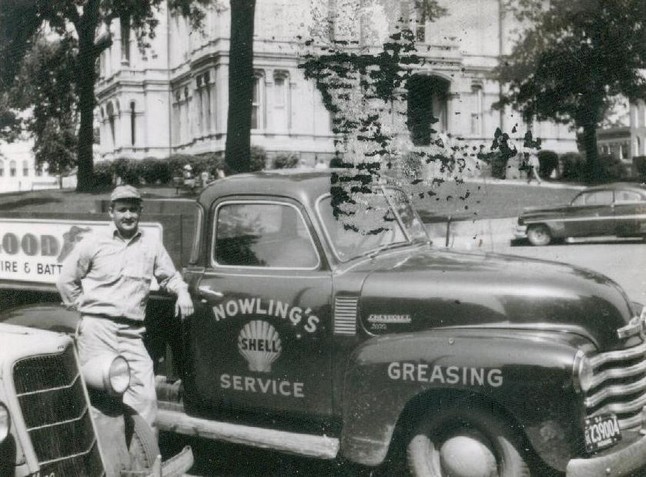
.jpg)
.jpg)
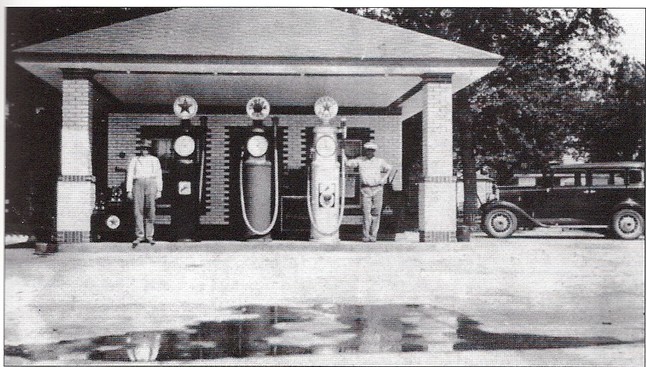
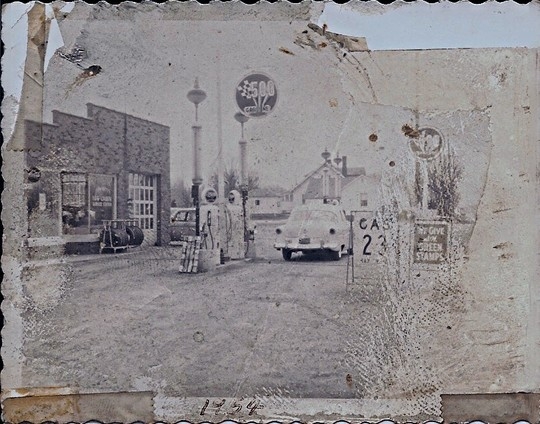
(Above) The Texaco station stood on the northwest corner of 36 and 41. Aaron Lewis stands to the left, Charlie Welch is on the right. Later it became an Imperial station. The CVS Drug Store now stands on this corner. The Old Log Cabin 500 station on the right was located on the east side of highway 41 where a car wash now is located.
.jpg)
The Phillips 66 once operated by Kenny Swaim and later by Danny Kerr, Class of 1962.
(Below) The Rockville Police Department & Reserve Officers
.jpg)
.jpg)
The names of the police pictured above are in reverse order.
.jpg)
The Rockville House (above) at High on the east side of Virginia was built as a jail and Sheriffs residence in 1832 on Lot 60. It replaced the first log jail that was erected in 1824 across the street on the northwest side of Virginia and High Street on Lot 59. .
The original railroad track came northbound right up Virginia Street in front of the Rockville House Jail before it was later re-routed two blocks to the east.
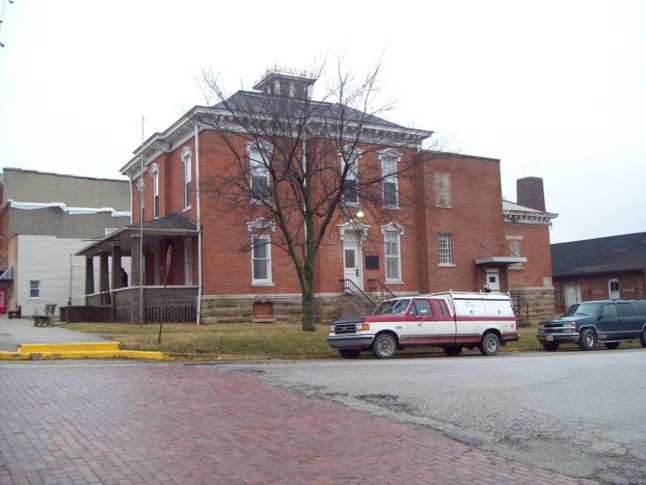
.jpg)
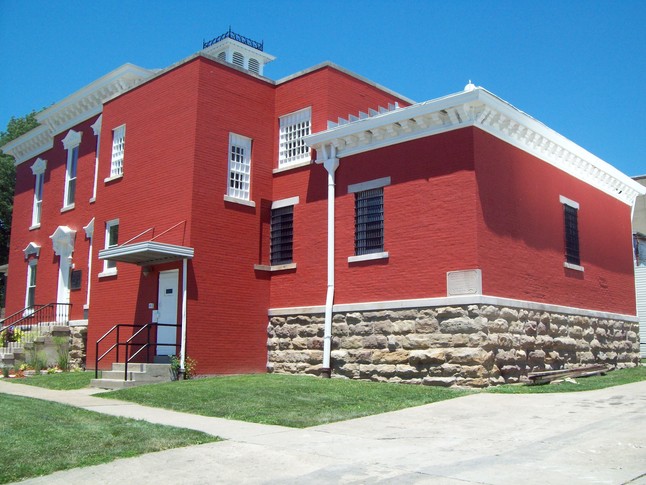
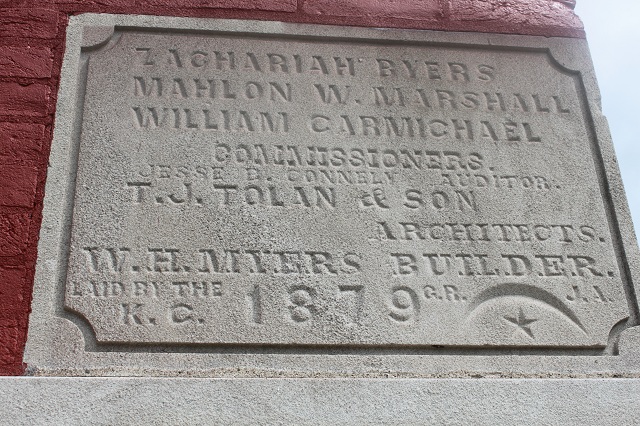
This jail and Sheriffs residence built at Jefferson and High Streets on the on Lot 58 in 1881 was used until 1998. Based on the pictures above, the porch was apparently added later.The heating plant and boilerhouse garage for the court house is located behind the jail and heat is transferred to the court house thru an underground tunnel. (See Below) The 3rd Rockville jail was built outside the court house square in 1881 in conjuction with the building of the present court house. The previous (2nd) jail and Sheriffs residence built in 1832 and served as the jail until 1881. It is one block east at High and Virginia Streets and is now the Rockville Boarding House. It replaced the first Rockville jail, a log structure built in 1824 that served for eight years. The first log jail was located on the northwest corner of Virginia and High across the street from what is now the Barnes/Rice Funeral Home.
The first legal execution in Parke County was that of Noah Beauchamp, on Friday, February 18, 1843, in the timber southeast of the Old Rockville Cemetery (on east High Street), by Sheriff Jesse Youmans. People came from far and near to this execution, even Illinois and surrounding counties in this state. It was a bitter cold day and several women with babies in their arms were present and drank whiskey freely, with the men, in order to "drive out the cold".
The second execution in the county was that of Buck Stout, on August 8, 1883, by John R. Musser. His was a case transferred from Montgomery County, but was tried in the courts of Parke County. The hanging took place behind the courthouse jail boiler building during Sheriff John Musser's term between 1882 & 1886. The alley was fenced off and only four reporters standing on the ground were allow to witness the event.
.jpg)
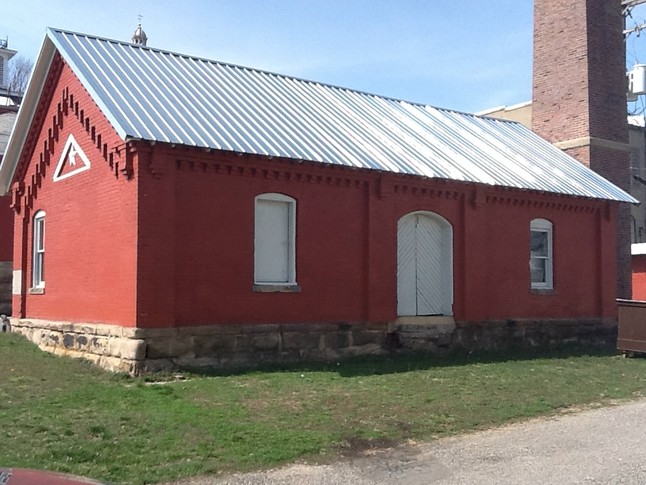
.jpg)
Above is a side by side comparison of the building on the east side of the boiler room where the 1883 hanging took place. Convited murderer Buck Stout.
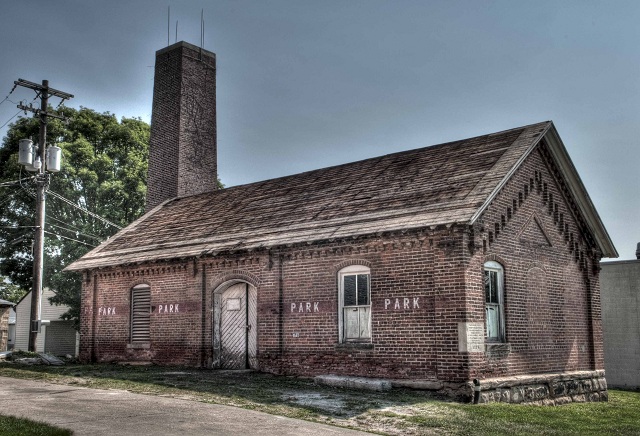
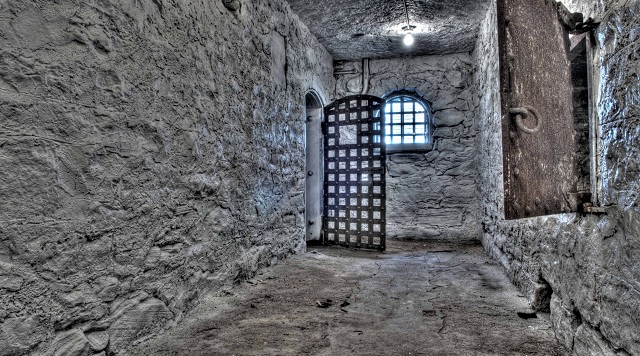
(Left) The courthouse boiler room located behind the old jail house also heated the jail house. (Right) The drunk tank under the main cell house
(2).jpg)
(1).jpg)
The new 1998 county jail (the 4th Parke County jail house) complex on Strawberry Road as it appears in 2010.
.jpg)
(Above) A Fall Parade. Notice there are no leaves on the trees. This picture was taken prior to the 1906 fire of the three story National Bank. The bank was rebuilt as a two story building.
.jpg)
(Above) A Summer Parade. Notice the leaves on the trees. The picture would have been taken prior to the fire of the three story National Bank on Nov. 16, 1906.
.jpg)
.jpg)
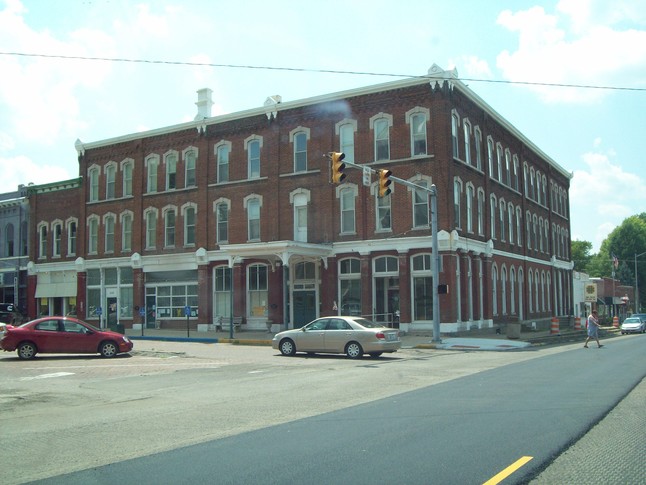
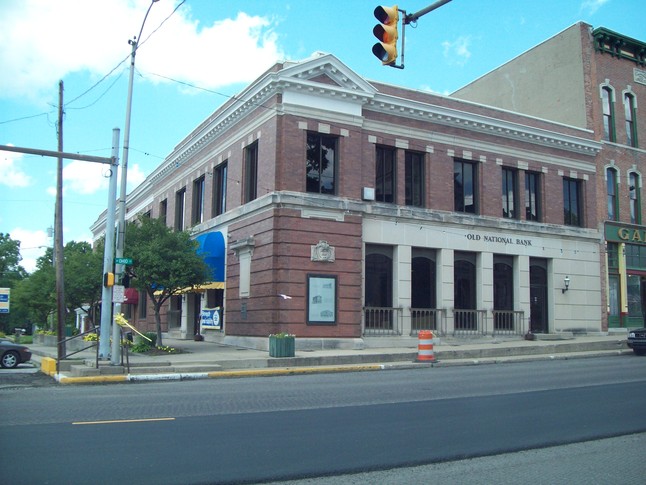
(Left) The Parke Hotel as it appears in 2009.
(Right) The original 3 story National Bank building replaced the first log double house tavern owned by town Co-founder Andrew Ray in which the decision was made in Feb. 1924 to make this area the county seat.
After the three story Rockville National Bank building burned (Lot 38) in 1906, it was rebuilt as a two story building shown above. Andrew Ray had an ajoining livery stable that was later moved around the corner on the south side of York Street between Market and Jefferson. It was later converted to the Baker's stoneware/pottery facility.
.jpg)
.jpg)
.jpg)
(Above) Fire in the Innis Building August 1946 north side square. A young married couple, Ernest and Margaret Hill and their first son, Jerry RHS 1964 lived in an apartment upstairs above the fire at the time and had smoke damage.
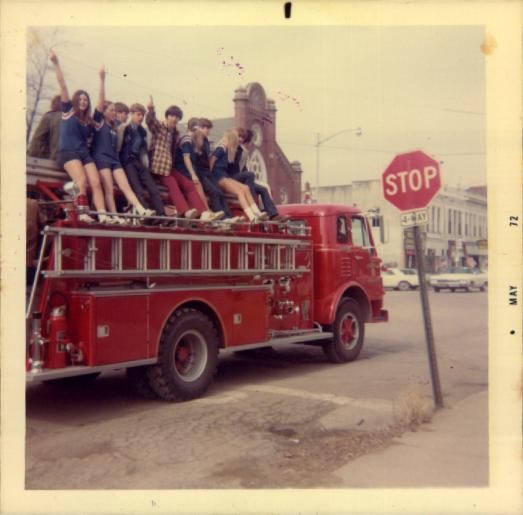
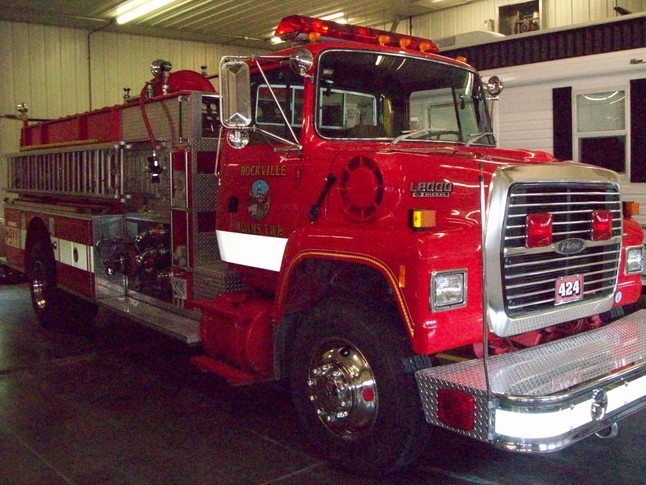
(Left) Fire truck picture taken May 1972. (Right) Taken 2010
.jpg)
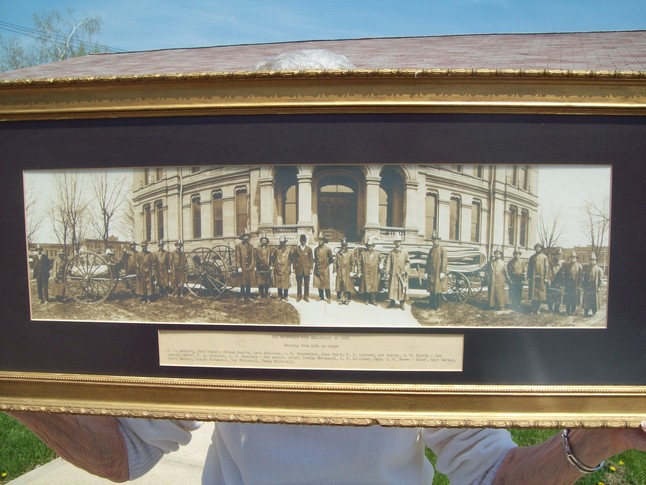
A Rockville Fire Brigade was organized in 1906. Pictured above is the Brigade with hoses in 1908. This picture hangs in the fire station. Margaret Hill holds up the picture.
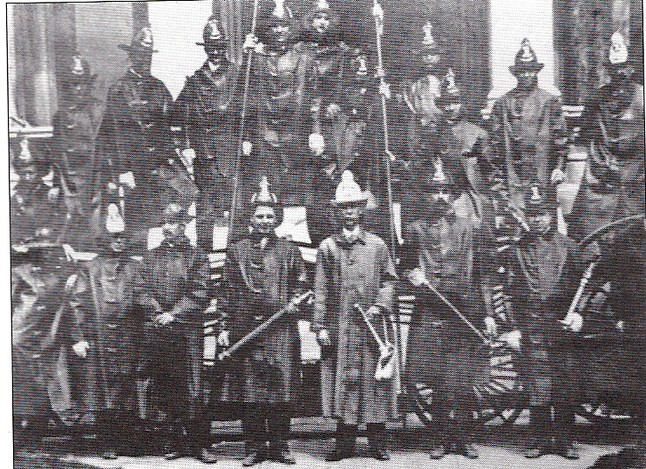
.jpg)
.jpg)
Jack Wilson RHS 44 and his little sister Lois Wilson McGrannahan RHS 1949 attended this ceremony where Jack played the trumpet. Their father, Carl Wilson worked for the post office for over 30 years until his death in 1946.
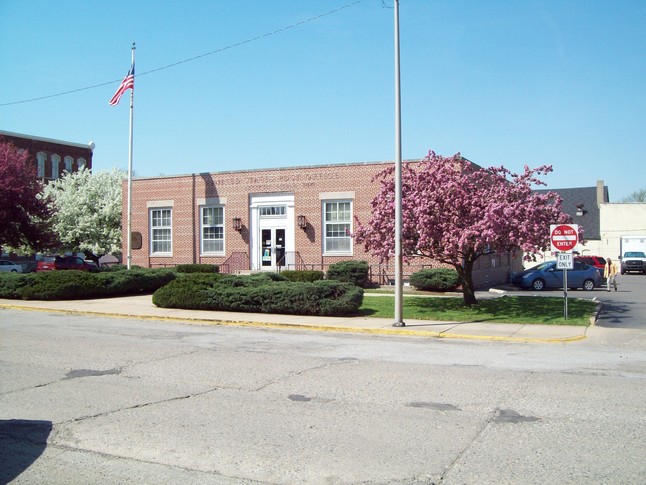
.jpg)
The Whipple House once stood on the northwest corner of the square where the post office now stands on Lot 37. H. J. Skelton's Funeral Home also stood on this quarter block and moved to the Joiner House on the southeast corner of the square.
The Whipple home was moved to East York Street on Lot 27 where the now vacant lot on York Street is used as the parking lot behind the 36 Saloon. The cement lamp post that stood in front of the Whipple home is now located in the old cemetery. Per Lois Wilson McGrannahan RHS 1949.
.jpg)
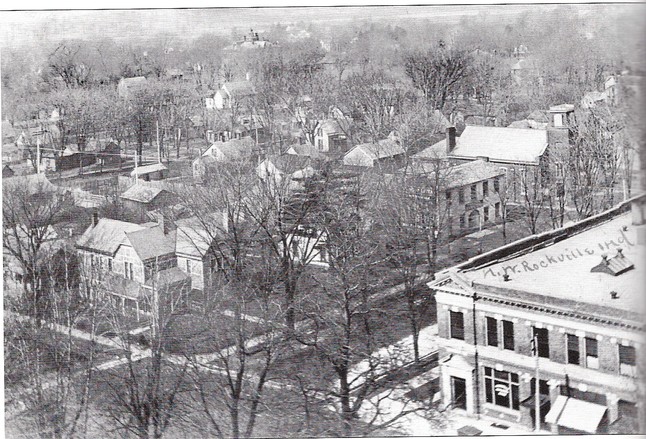
.jpg)
Electricity came to Rockville in 1891, the telegraph in 1870, the railroad in 1860 and the dial tone on Feb.15, 1959.
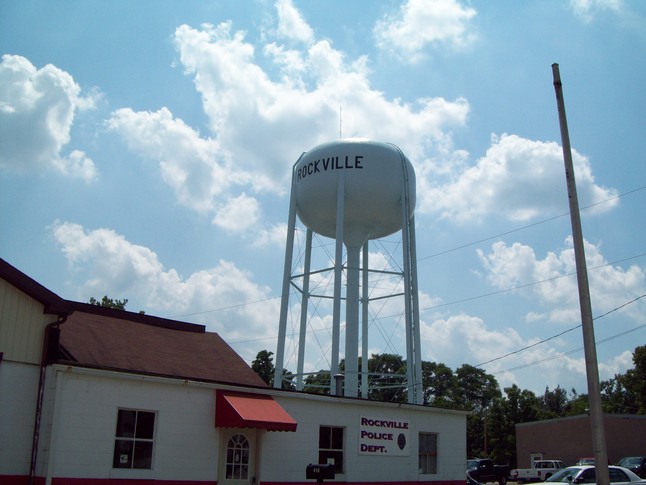
.jpg)
.jpg)
The water wells are east of town near U.S. 36.
The first baseball diamond in the late 1800's was located west of North Jefferson Street on land owned by John L. Noel. Mr. Noel later donated the 5 or 6 six acres the be the first park. It became known as Noel Park. It eventually proved to be too small for a city park. Mr. Noel later bought back the property he had donated and the town used the money to buy about 15 acres from Capt. Wallace McCune on the southwest part of town. Elwood Hunt suggested the new park be named after the Beechwood trees located within.The name stuck.
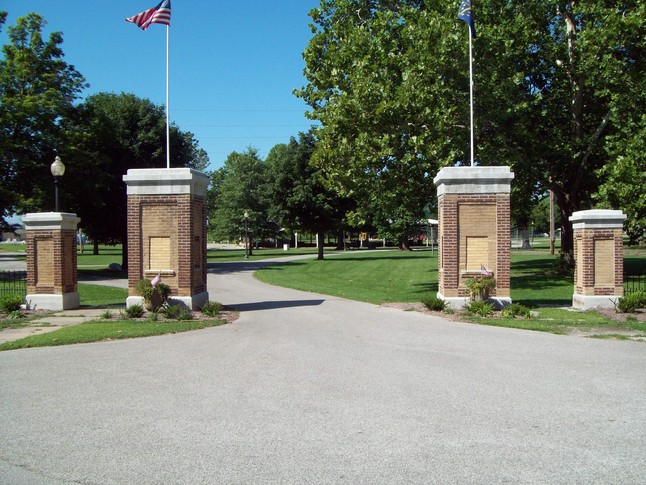
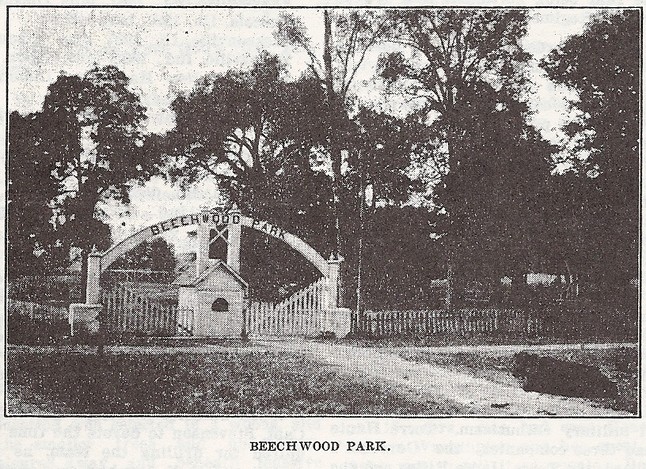
Entrance to Beechwood Park then and now. The park was named for the many beech trees within.
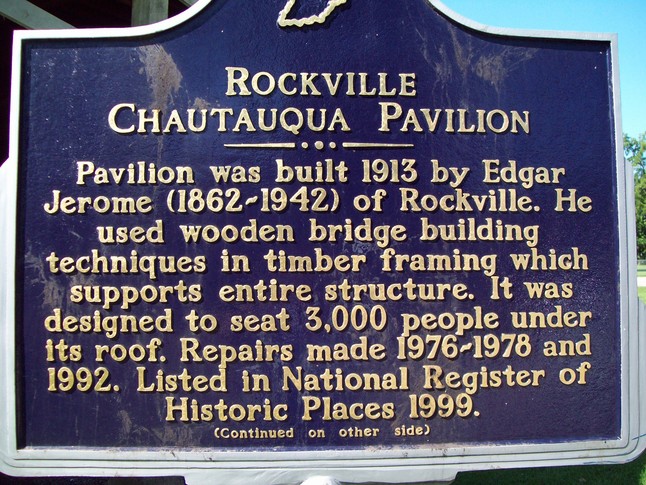
.jpg)
There was a roller rink under the Pavilion roof in the late 1950's.
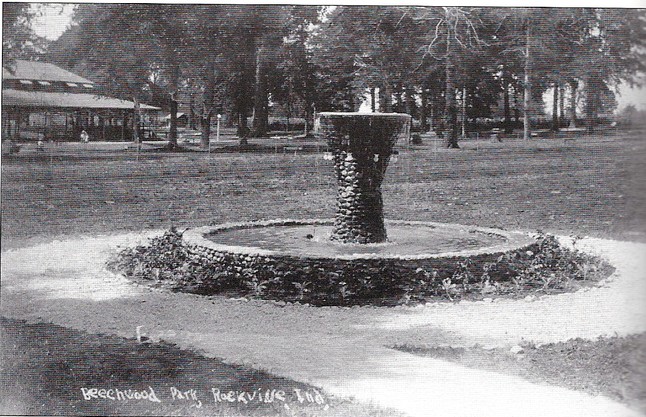
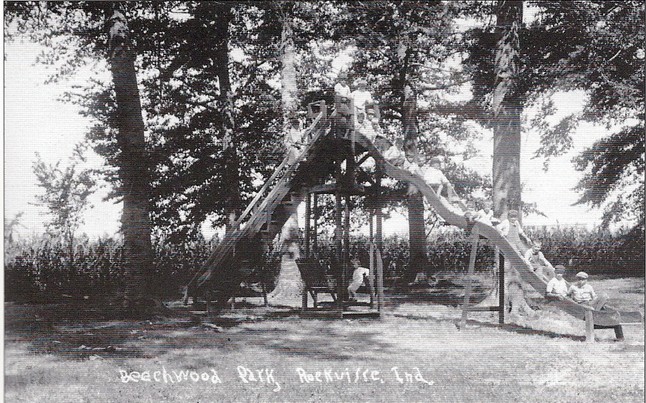
(Left) A fountain once stood in the triangle of ground north of the park entrance. (Right) The old original park slide.
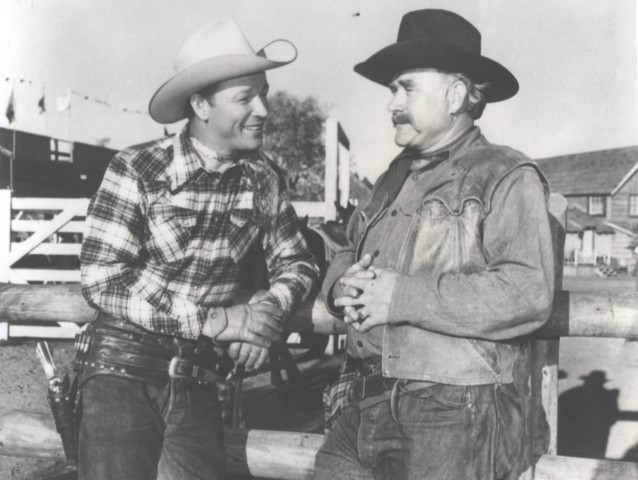
.jpg)
(Left) Coxville's Tex Terry with famous TV cowboy star Roy Rogers. Tex Terry played "the bad guy" on TV and in many movies opposite Roy Rogers and Gene Autry in the 1950's. After retirement from Hollywood, Tex owned a restaurant in Coxville. He was often seen around Rockville in the early 60's driving his bronze colored Cadillac adorned with rifles mounted on the front and rear fenders, horse shoes as door handles, longhorn steer horns mounted on the roof, and saddle type engraved leather seats. Tex is buried in Coxville.
A tennis court and a pool were installed in the park in the 1950's.
.jpg)
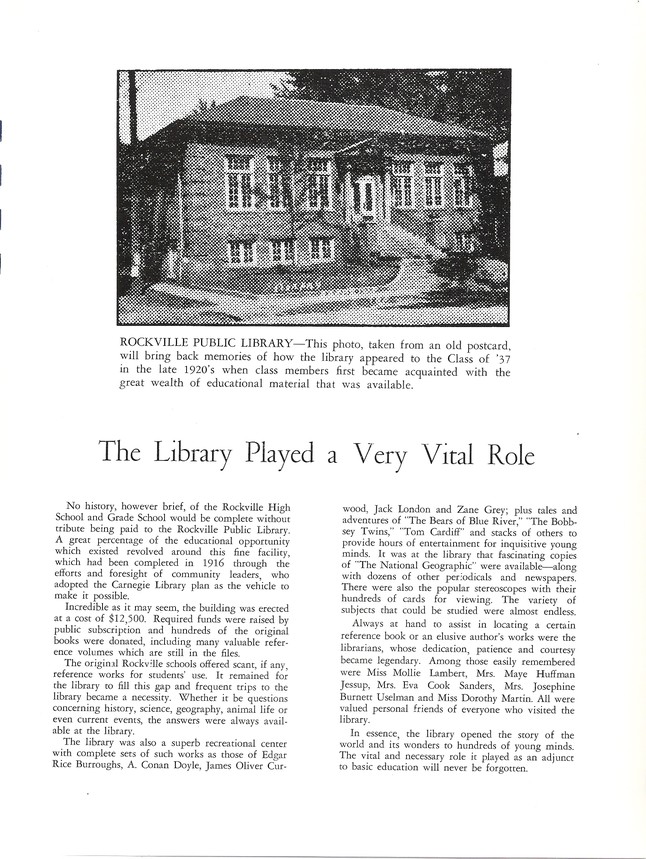
.jpg)
.jpg)
.jpg)
.jpg)
.jpg)

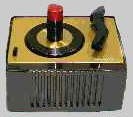

The "dial tone" and rotary phones came to Rockville on Feb. 15, 1959. Rockville was assigned the prefix 569- and everyone was assigned a new number. Many families still have their same number today. "45" rpm records played our music. Coke came in glass bottles designed right here in Indiana.
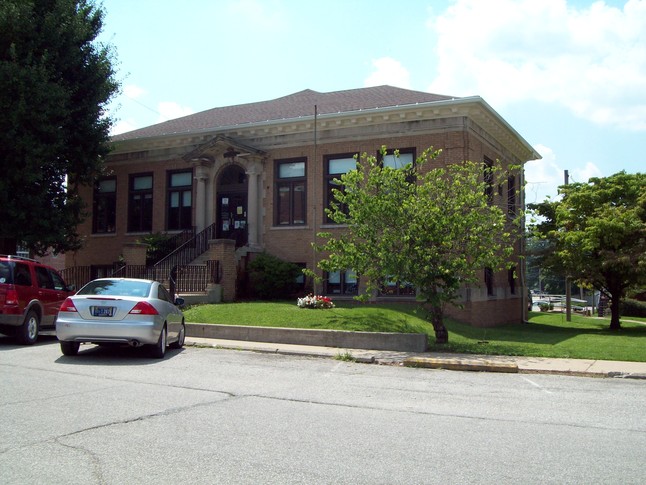
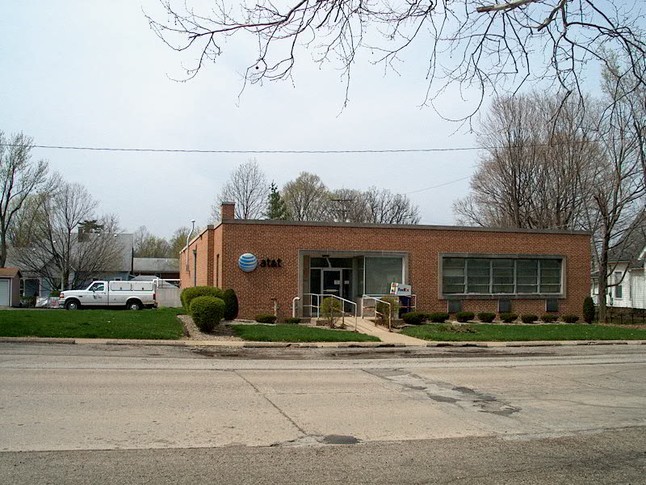
(Left) Rockville Library replaced the Andrew Boardman Livery Stable purchased for $2500. (Right) The Phone Company Building. Prior to the dial tone, previous phone company switching offices were on the west side square and in the back part of the National Bank Building. This phone building was built in the early 60's.
.jpg)
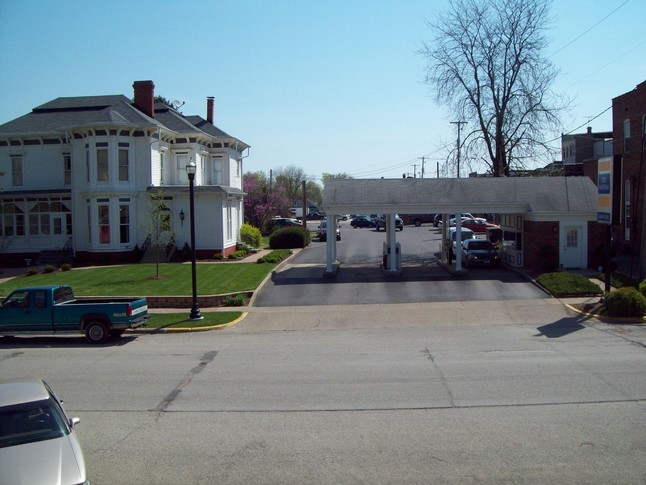
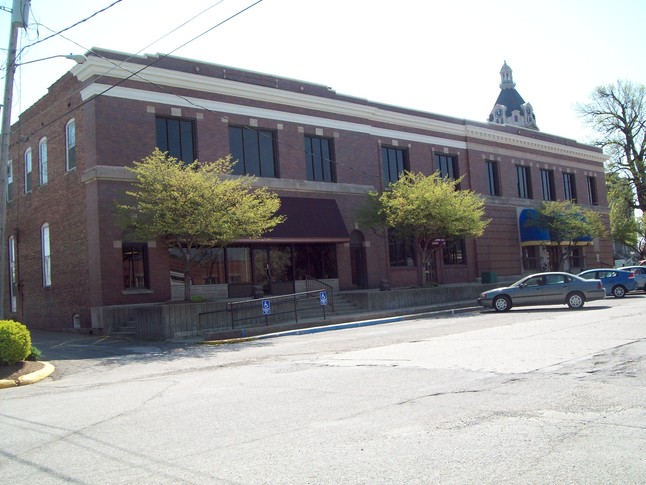
(Left) Drive- thru banking and parking between Market and Jefferson Streets occupy the lot where the Don Lucas family home once stood before it was moved to Harris St.(Right) The Rockville National Bank, pictured left, was rebuilt as a two story building after the old three story Harris building burnt in 1906. The phone company and operators were once housed in this building as was the postal service. Freda Collings was one of the operators.
.jpg)
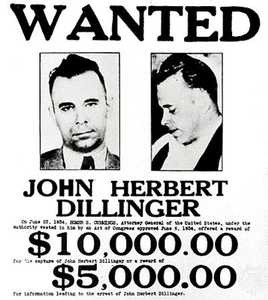

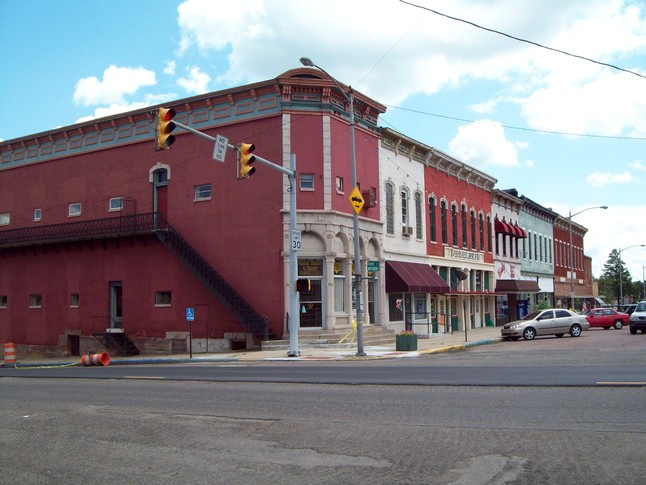
.jpg)
The Parke State Bank Building and the east side of the square.Most of the old wooden buildings on the east side burnt in 1871.
.jpg)
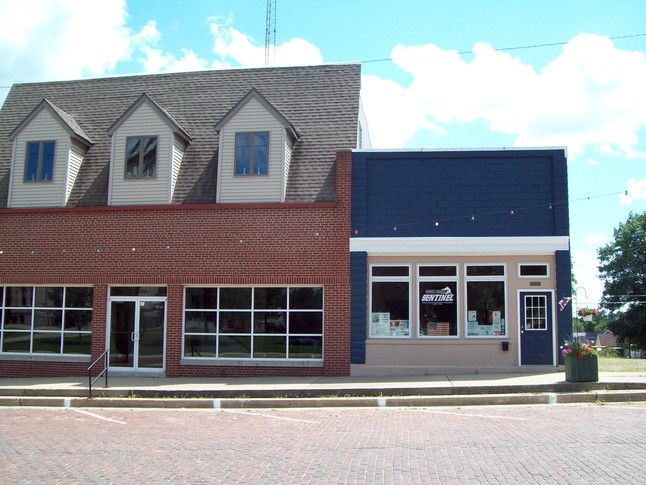
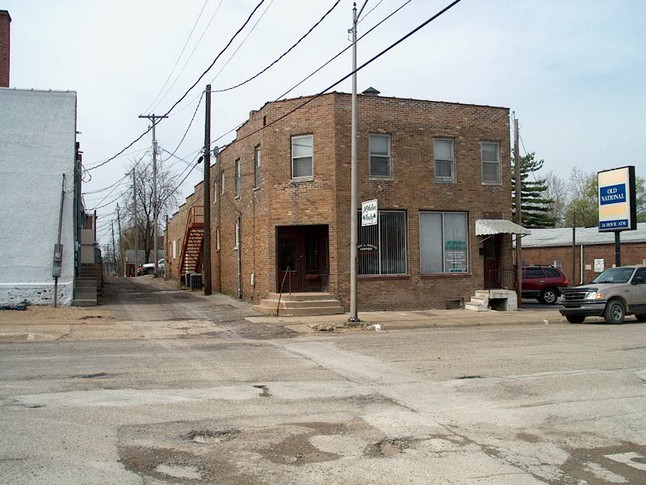
(Left) The Rockville Republican Building on the southwest corner of the square. (Right) The Rockville Tribune Building on north Jefferson Street.
Purchased in 1970 by Dick and Mary Jo Harney, the newspaper has changed appearance and publishing methods drastically in the ensuing 38 years. Initially the Harney's purchased The Rockville Tribune, a Democratic newspaper, which was soon followed by the purchase of the The Rockville Republican in 1971. Through the years the family also owned The Kingman Star, and The Clay County Today papers. They also published the very popular "Parke Place" magazine. Copies of the Parke Place can be viewed at the library.
In 1833, Indiana had 29 newspapers. One of them was the Wabash Herald published at Rockville. It was sold in 1835 and the name was changed to The Rockville Intelligence. In 1839, the name was changed to The Olive Branch and in 1856 the name was changed to The Parke County Whig. Shortly after this the name was changed to the True Republican and in 1860 it became the Parke County Republican. In 1873, a name which would stick was given to the paper, The Rockville Republican and it remained that until the Harney's consolidated the paper with the Rockville Tribune and called the new publication The Parke County Sentinel. This was done in 1977, and the rest is history.
Dick and Mary Jo Harney published the first edition of the Parke Place Magazine in August 1981. There were 85 editions between 1981 and 1988.`
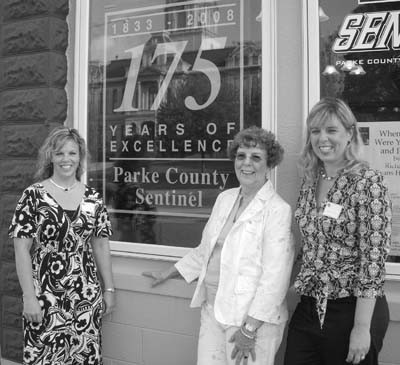
.jpg)
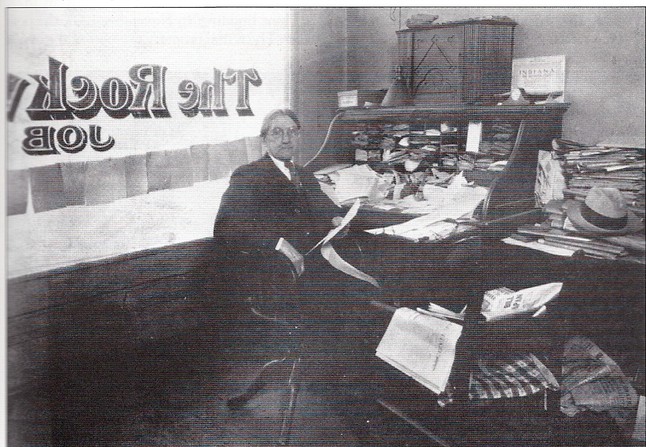
.jpg)
Dick and Mary Jo Harney and daughters Megan and Jessica moved to Rockville in October of 1970 having purchased their first newspaper, The Rockville Tribune from George and Dorothy Schwin. Shortly after, in February of 1971, they purchased The Rockville Republican from Billy Hargrave who had owned the paper for years with his father, A.A. Hargrave pictured above, right.
Dick Harney died in November of 1999, and the paper is currently being published by Mary Jo Harney.
.jpg)
The highway program for U.S. 41 (Lincoln Road) started in 1923-1924.
The first train arrived in Rockville in 1860. The first depot was the home of Capt. Dowd on Virginia Street for one year. The tracks ran north up the middle of Virginia Street before it was eventually re-routed two blocks further east where the present depot (now a visitor center) now stands. The first railroad of 1860 ran from Evansville and terminated at Rockville. Before the telegraph, the train was the main source of the outside news. The train delivered the first news of President Lincoln's death.
.jpg)
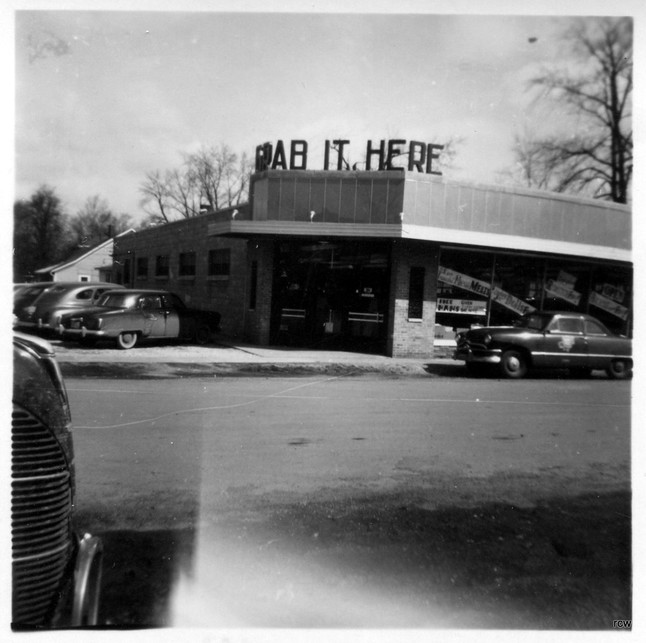
.jpg)
(LEFT) The old Grab-It-Here Grocery Building at York and Jefferson.
(RIGHT) The old Coca Cola bottling plant on U.S. 41
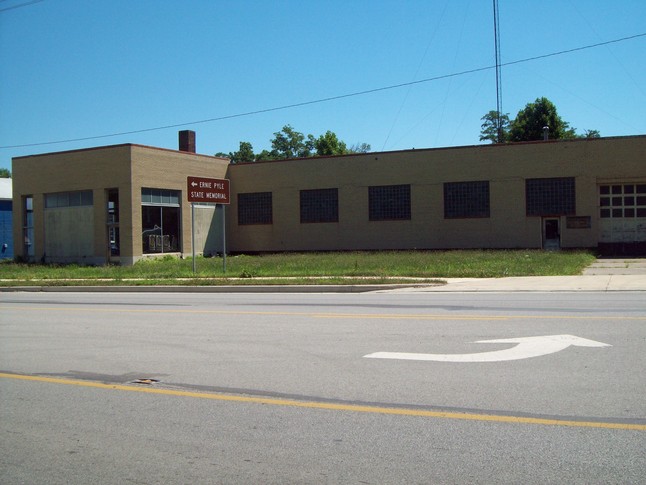
.jpg)
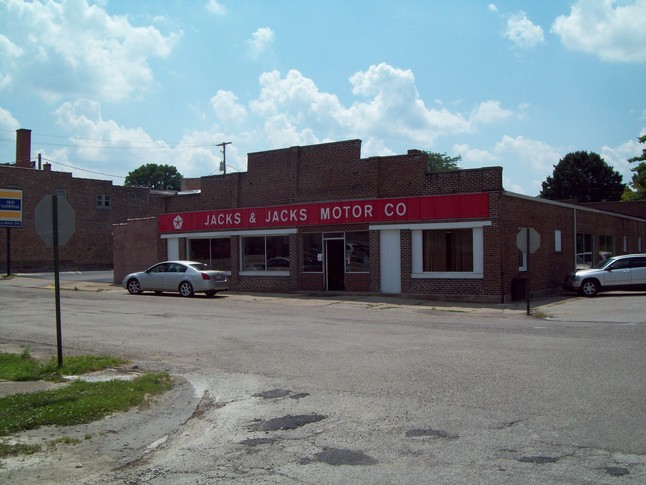
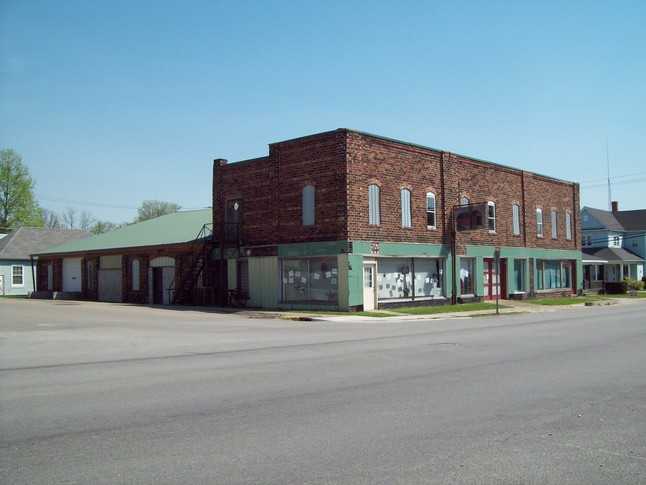
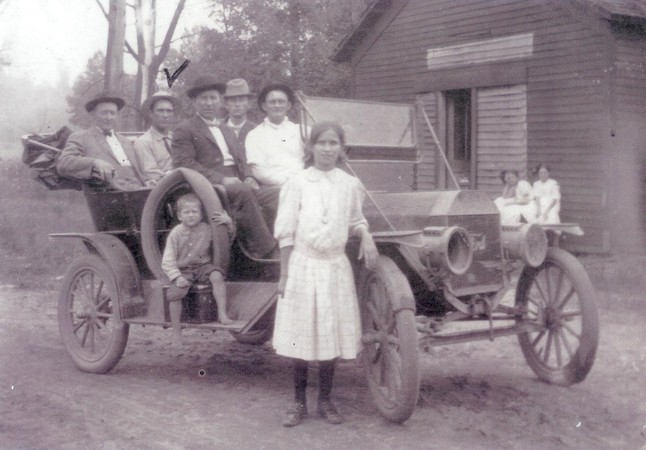
(Right) The guy with the check mark is unknown. Pictured are Jacob A. Fisher, John A Cottrell, Charles Lambert and Scott Wheat (his car, that looks like he needs new tires). Seated on the tool box is either Ray or Wallace Wheat. Girls seated in the background are Mabel Wheat and Hazel Wheat, standing in front of the auto is Addie Wheat.
THE FIRST KNOWN TWO SEATER AUTOMOBILE TO BE PURCHASED AND BROUGHT TO PARKE COUNTY OCCURRED IN AUGUST 1903, WHEN F.R. CALVERT AND MAX PRUETT WENT UP TO CHICAGO AND PURCHASED A TWO SEATER '"FREDONIA" AUTOMOBILE FOR MAX'S FATHER. THE TRIP HOME TOOK 15 HOURS DRIVING TIME. (PARKE PLACE MAGAZINE, APRIL 1985 VOL. 5 NO. 4. PAGE 31)
.jpg)
.jpg)
(Right) When Sam Spencer's livery burned at the southwest corner of York and Jefferson about 1922, the Bramblet's built a brick building. The Broaderick and Hayworth Dodge auto dealership leased part of the building and Raymond Bramblet and his father sold auto parts and gasoline. Sid Jacks managed the Dodge car business from 1934 to 1954 when he and his brother, Aarol Jacks purchased the dealership. The building housed Jacks & Jacks Motors run by Aarol's sons, Steib and Kevin until it closed in 2011. There was a livery stable across York Street that is now the parking lot for the old Grab-it-Here Grocery Store. The livery stable later became the Baker Brothers Pottery Shop.
(Right) The Chauncey Smart building at 202 E. Ohio and Virginia was later owned by Aaron Lewis and then Norman Miller. The building was built by Chauncey Smart and former Sheriff Edward Nicholas. Dodge and Pontiac's were sold here. There was once a skating rink on this corner. The license branch was located in this building during 1928/1929.
(Below right) Bud and Lucy Washburn owned this 58 Triumph convertable. It could be often seen parked in front of the Ritz Theatre, the business they operated for years. The car is pictured here parked in their driveway on North Michigan.
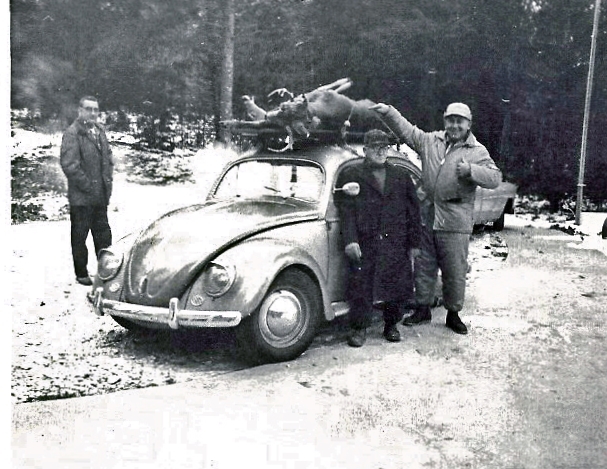
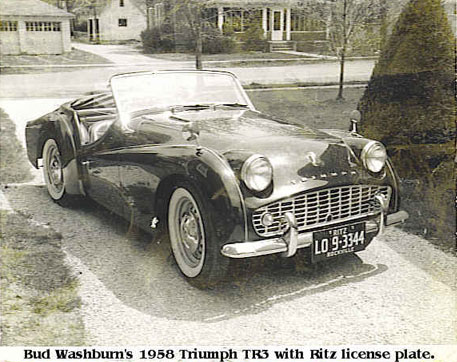
The Green VW (above left) was purchased in 1959 at Mikes Motors in Clinton by Jim and Mary Barnes and driven by their daughters Mary Catherine, Class of 1958 and Billie, Class of 1959 in the late 50s early 60s back and forth to the new swimming pool where the girls were both lifeguards. It had a big toy wind up key stuck on the back for humor. The pictures above is of the actual automobile. Jim Barnes (Barnes Funeral Home), his father Tom Barnes, and Ray Spaw (who owned the Sale Barn) once drove this VW to Canada to hunt deer. They returned with two deer tied to the top of the car. It was a green 2 door bug with German writing on the dash. It eventually got traded in for a white VW in Evansville, Indiana. Jim Barnes later bought a VW Karmenn Ghia Convertable. To put a VW in reverse, you had to push straight down toward the floor with the gear shift and then back toward the passenger seat. Information provided by Mary Catherine Barnes Overpeck, Class of 58.
.jpg)
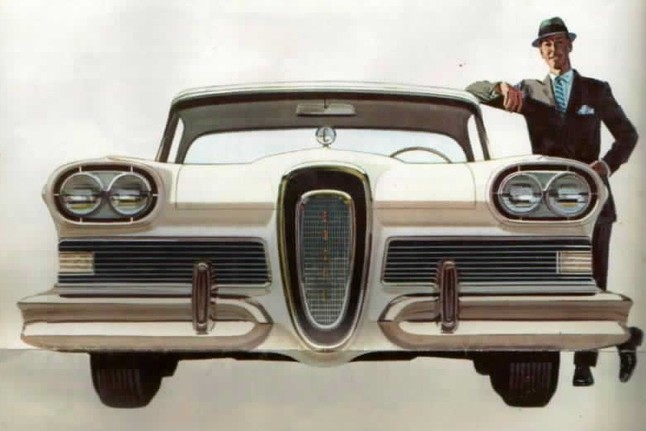
During the 50's, Jack and Judy Snowden (Co-founders of the Covered Bridge Festival in the early 50's) purchased a few MGs and Jaguars, among them a 1957 British Racing Green convertable Jaguar XK140 Drop Head Coupe in the late 50's. Pictured above is the actual XK140 Jaguar with Eric Snowden, Class of 62 at the wheel in front of their home on McCune Ave. During the 1950's Jack also owned a 1954 Corvette, a German DKW F89 and a 1956 VW. The VW was a drivable billboard for the Old Forge Gift Shop which they operated. Jack also owned a 1958 or 59 Ford Edsel (Stock Photo above). Pictured below in the red mg is Judy and her children Eric, Cynthia and Duncan. Duncan standing beside the green Jag XK140. Information provided by Duncan, Class of 66 and Andy Snowden, Class of 1972.
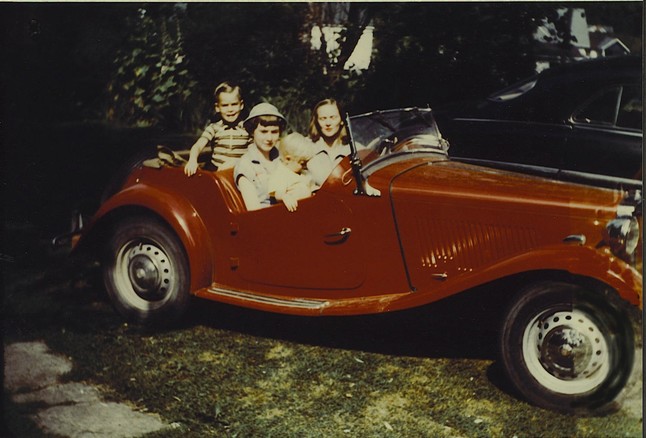
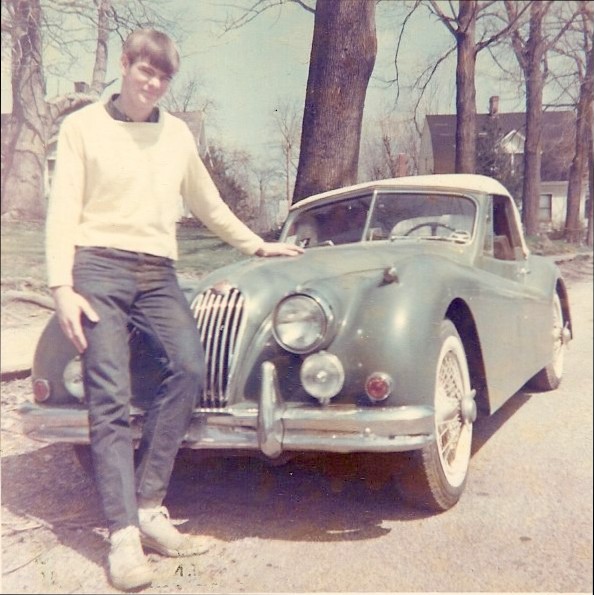
Pictured below is the first Mustang (white) off the production line. The blue Mustang was the 2nd.


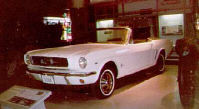
Ford Mustangs first debuted on April 17, 1964. The first Ford Mustang arrived in Rockville at the John Alden Ford Dealership. It was purchased by Dick and Freda Collings in 1964. It was a 1964 red, 3 speed on the floor, 6 cylinders. Other Mustangs sold in the early 60s were purchased by Glenn Andrews, Class of 63 (light brown), Bob and Kendra Newlin Kuhn (dark blue with a white top), Gordan Newlin (a green 5 speed V-8 289 cubic inch) and the Greens, brothers and sister Joe, Class of 65 and Susie, Class of 66, and Bill Green, Class of 68 (light blue). Bob and Mary Lohrmann (Lohrmann Jewelry)also purchased a Green Mustang for their sons, Greg 1964 and John 1966, to drive . Jim Barnes had a 1964 white Mustang convertable with red interior. Class of 77 David Hill's father, Orville Hill was a salesman at Alden Ford during the 50s,60s and 70s. Orville was married to Phyllis Mindermen, Class of 44. I remember walking up to the Ford Dealership after school to look at the first newly arrived 1964 Red Mustang Coupe and then ride home to Catlin with my uncle Orville, who also lived in Catlin, by Bill Hill 66.
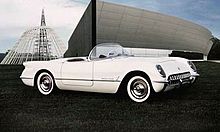
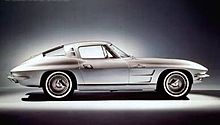
(Above are stock photos) One of the first Chevy Corvettes in Rockville was a 1954 owned by Jack and Judy Snowden. Dodd Porter, Class of 1956, owned a 1958 Maroon v-8. Corvette Stingrays debuted in 1963. One of the first Corvette Stingrays in Rockville was purchased in 1963 by the parents of Jill, Class of 64 and brother Joe Walter's, Class of 65 from Mecca. It was a silver, fast back, split window coupe like the one pictured above. 1963 Stingrays window stickered for about $3200..

Pontiac debuted their GTO model by John Delorian in the 60's. The model was immortalized by the Beach Boys in their song "My Little GTO". Frank Greene, Class of 65, and 60's English teacher and track coach, Steve Trueblood both had new GTO's. Steve bought a 1964 Red GTO Convertable like the one pictured above and Frank had a 1965 2 dr. Coupe.
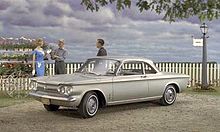
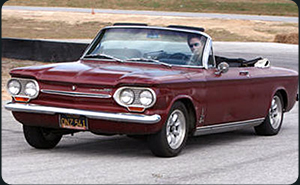
(Above are Stock Photos) John Hays, President of the Parke State Bank, and Marjorie purchased a used Dark Cherry red Chevy Corvair coupe in the summer of 1965 for their children, Jennifer, Class of 65 and Judi, Class of 66 and Johnnie, 67 to drive. The car was purchased from Paul Lucas Auto Sales located on U.S. 41 North as Paul cut John's hair. Corvairs debuted in 1960 and had rear engines at a cost of around $2000. Corvairs were immortalized by Ralph Nader's book "Unsafe at Any Speed." Bill Hill, Class of 66 had a mint green Corvair Coupe like the coupe pictured above.
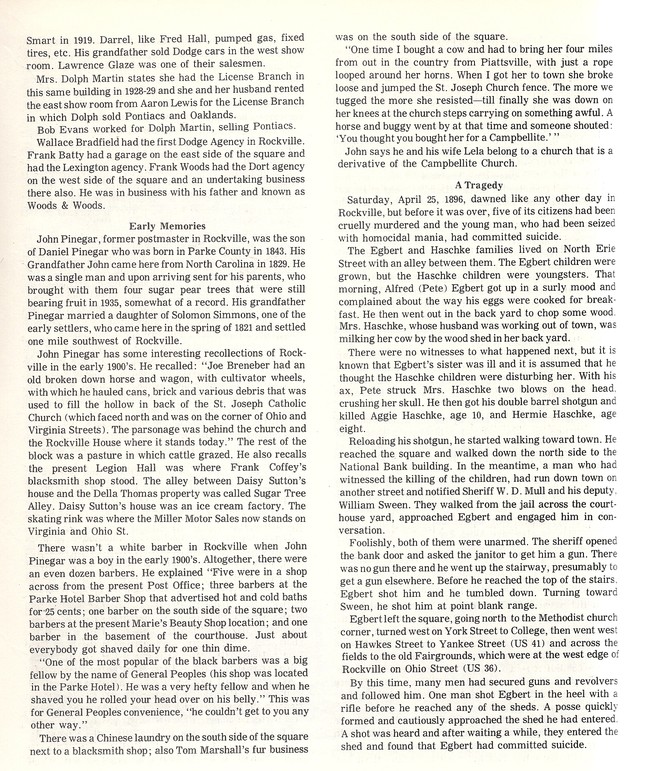
.jpg)
.jpg)
_1_.jpg)
(Above) Sheriff W.D. Mull and Deputy William Sween were murdered Saturday April 25, 1896 by Alfred Pete Egbert on the north side of the square.
.jpg)
.jpg)
.jpg)
On Saturday, April 25, 1896 a 14 year old teenager Marcia Strouse (Ott) Class of 1900, who later became Judy Ott Snowden's mother, was walking from the south side of the square across the court house yard toward her father's business on the east side of the square. She heard two gun shots coming from the north side of the square in front of the National Bank. Next she saw her father, publisher Isaac Strouse coming toward her. He told her to go home immediately and stay there. Later that day she found out that Sheriff Mull and his deputy were gunned down by Alfred Pete Egbert and that Pete had also killed his neighbor lady, Mrs. Haschke (on Erie Street) and two of her young children, children Marcia would have known from school. After being cornered by a group of armed men, Pete Egbert took his own life that day west of highway 41 in a building located on the old fair grounds on the northside of highway 36.
Another terrible evening occurred in Parke County on Valentines Day, Monday Feb. 14, 1977 three miles north of Hollandsburg just west of the old Greene township school when the Roger Drollinger Gang from Crawfordsville burst into the trailer home of Keith and Betty Jane Spencer brandishing shotguns. Keith and a daughter, Diane were not home at the time. Four of the Spencer brothers ages 14 thru 22 were brutally murdered and Betty was shot 3 times and left for dead but survived the attack. The boys are buried north of Hollandsburg in the Mt. Moriah Cemetary along with Betty who died 27 years later from lung cancer at the age of 71. The complete story is posted in the Parke County History section of this website.
.jpg)
.jpg)
.jpg)
.jpg)
(Left) The previous American Legion stood in this same location on East Ohio Street where Frank Coffey once had a livery stable behind the Parke State Bank. Buck Skelton had a barber shop on this site in the 1960's and a little Shell Station ran by Harris Borden once sat on the corner. They were torn down for the new legion building.
(Right) It was announced on March 17, 1960 that DDS. Koenig and Dr. Harstad had leased the Hinshaw Garage Building on US 41 in which to build a bowling alley.
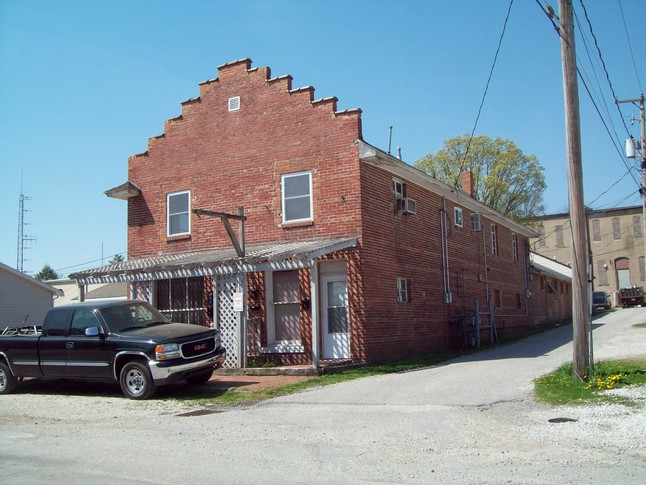
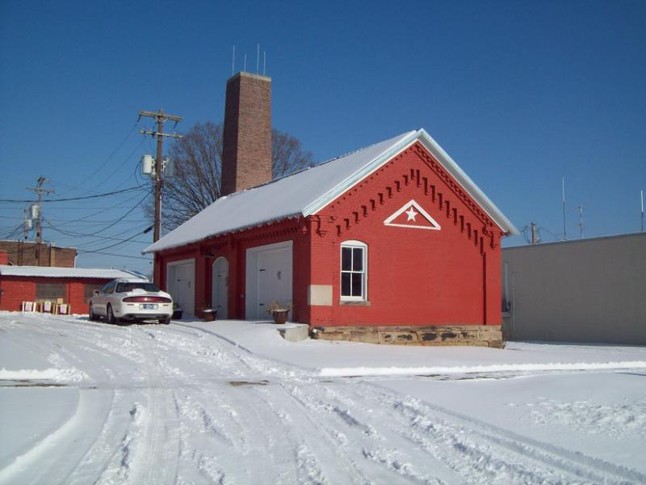
(Left)Poultry processing was a big business. This building facing east on Virginia behind Overpeck's Hardware Store was used to buy and dress poultry for shipment by Shannon and Haven. The poultry processing business was carried on in the old Bump Warehouse until it was replaced with this poultry processing building.
(Right) The old boiler-furnace building that supplied heat to the court house located behind the old courthouse square Jail. Buck Stout from Crawfordsville was hanged behind this building in 1883.
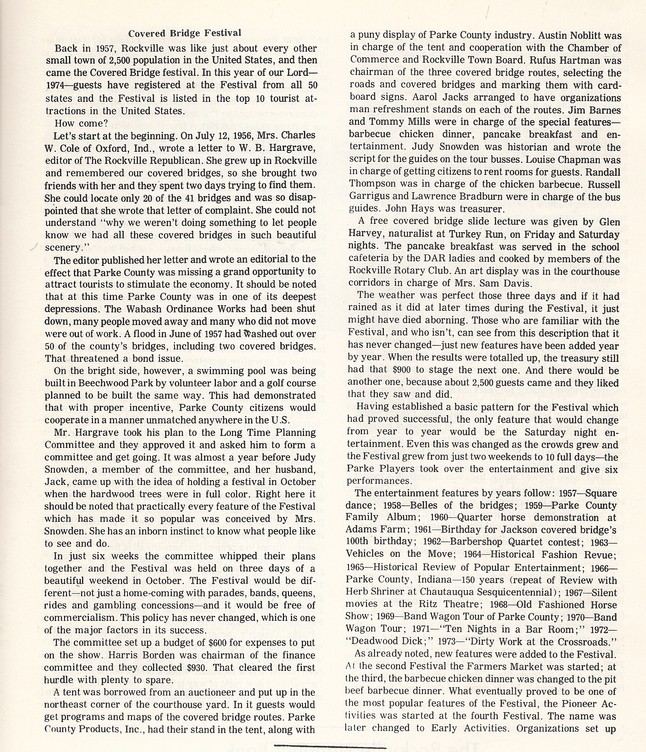
.jpg)

THE BIRTH OF THE COVERED BRIDGE FESTIVAL
Back in 1957, Rockville was like just about every other town of 2,500 population in the United States, and then came the Covered Bridge festival.
Let's start at the beginning. On July 12,1956, Mrs. Charles W. Cole of Oxford, Ind., wrote a letter to W. B. Hargrave, Editor of The Rockville Republican. She grew up in Rockville and remembered our covered bridges, so she brought two friends with her and they spent two days trying to find them. She could locate only 20 of the 41 bridges and was so disappointed that she wrote that letter of complaint. She could not understand "why we weren't doing something to let people know we had all these covered bridges in such beautiful scenery."
The Editor published her letter and wrote an editorial to the effect that Parke County was missing a grand opportunity to attract tourists to stimulate the economy. It should be noted that at this time Parke County was in one of its deepest depressions. The Wabash Ordinance Works at Newport had shut down, many people moved away and many who did not move were out of work. A flood in June of 1957 had washed out over 50 of the county's bridges, including two covered bridges. That threatened a bond issue.
On the bright side, however, a swimming pool was being built in Beechwood Park by volunteer labor and a golf course planned to be built the same way. This had demonstrated that with proper incentive, Parke County citizens would corporate in a manner unmatched anywhere in the U.S.
Mr. Hargrave took his plan to the Long Time Planning Committee and they approved it and asked him to form a committee and get going. It was almost a year before Judy Ott Snowden, a member of the committee, and her husband, Jack came up with the idea of holding a festival in October when the hardwood trees were in full color. Right here it should be noted that practically every feature of the Festival which has made it so popular was conceived by Mrs. Snowden. She has an inborn instinct to know what people like to see and do.
In just six weeks the committee whipped their plans together and the Festival was held on three days of a beautiful weekend in October. The Festival would be different —not just a homecoming with parades, bands, queens, and gambling concessions—and it would be free of commercialism. This policy never changed for years, which is one of the major factors in its success.
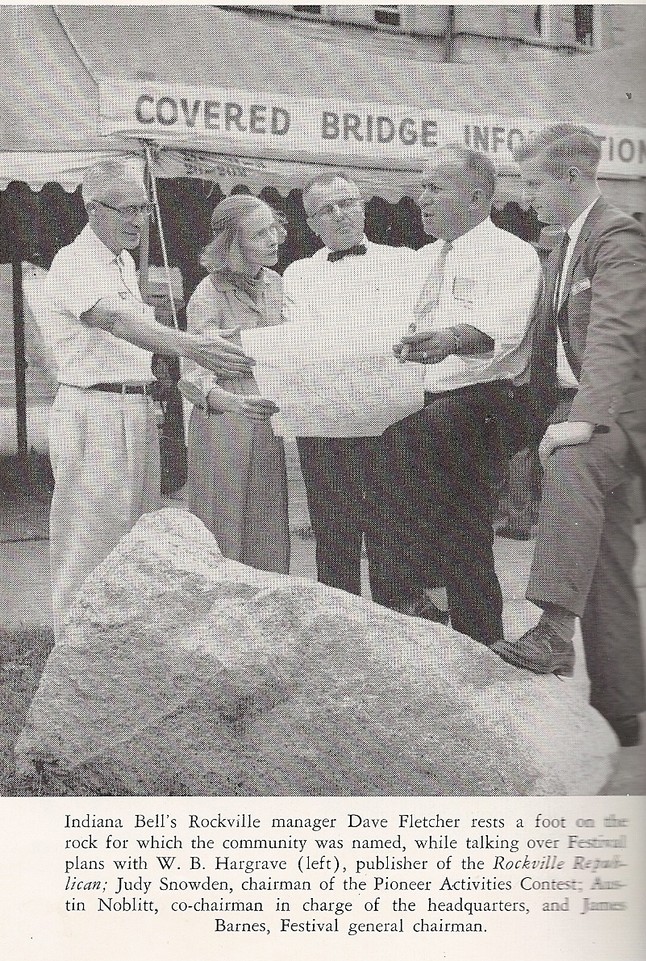
FOR MORE INFORMATION SEE OUR "LINKS AND TRIBUTES" SECTION REGARDING "THE HISTORY OF THE COVERED BRIDGE FESTIVAL"
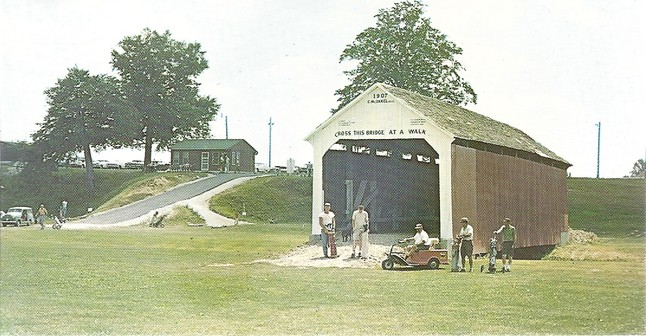
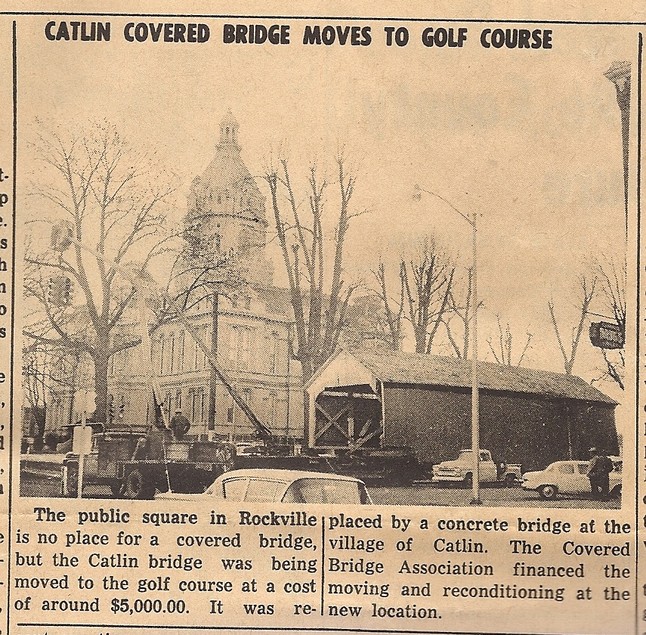
The Catlin Covered Bridge was moved to the Fairground Golf Course early 1960's. The Rockville county fairgrounds were originally west of town on the north side of US 36. The Commissioners leased the ground from the County Home/Farm for the 4-H Fairgrounds and then the Golf Course.
THE ROCKVILLE SWIMMING POOL OPENED IN 1958
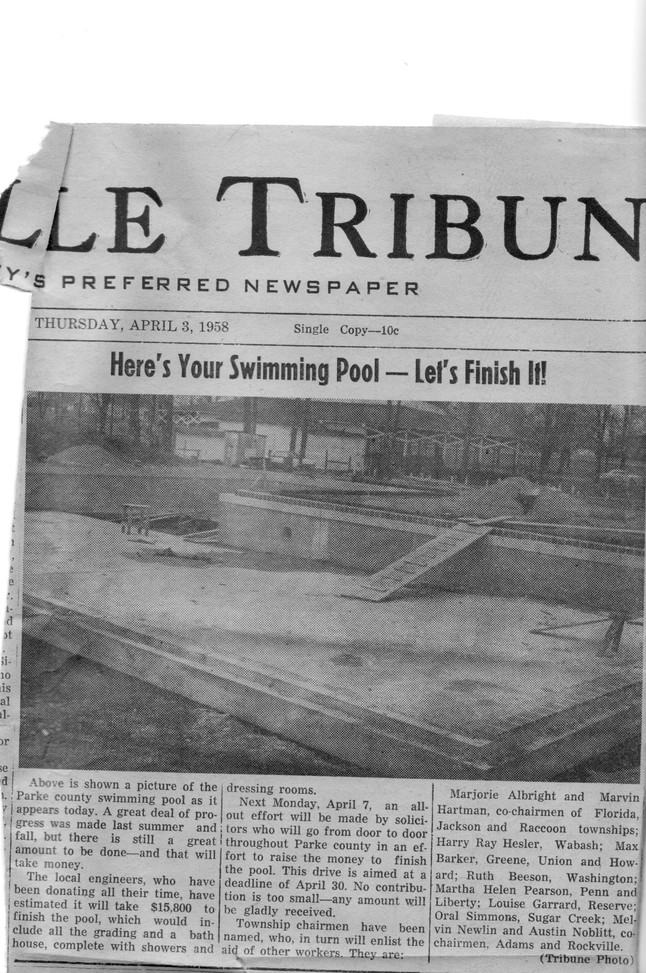
Rockville students Mary Catherine and Billie Barnes, G.G. Jacks, Becky Newsom, Gordon Newlin, Jim Rose, Kent Alderton,and Danny Merrell were among the first life guards at the new pool. Life Guards were paid $1.11 per hour. Omer (in the white shirt) and Hazel Smith ran the concessions. Jed and Mary Smith later ran the pool and concessions stand for many years. Kate Collings gave swimming lessons and Red Cross Life Guard Certification.The pool was built on the site of the old football field and baseball diamond at Beechwood Park. A new football field and baseball diamond were built at the new 1958 Jr. High School on North Beadle Street. Two pictures taken at the old football field and wooden bleachers can be seen further below.
.jpg)
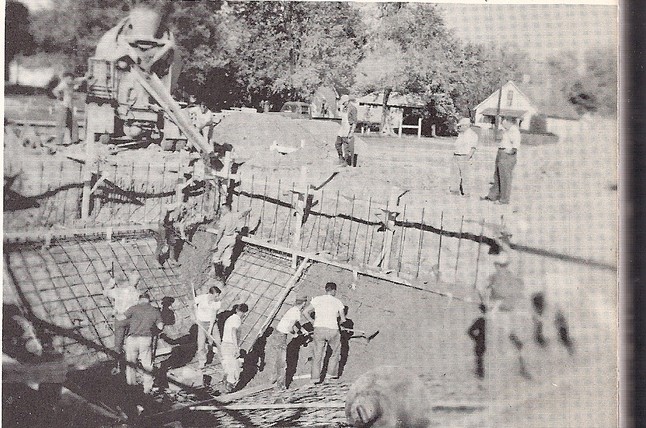

(Left) Digging, rebar and concrete in the deep end. (Right) The finished product. The corner of the pool nearest the photographer was about where home plate would have been. The little pump house and filter tank on the left behind the diving board would have been over 3rd base. The right corner of the shallow end would have been over 1st base. The baby pool is over right field.
(Below) The pool, bath house, & pool parking lots were built on the old football and baseball fields at Beechwood Park pictured below.
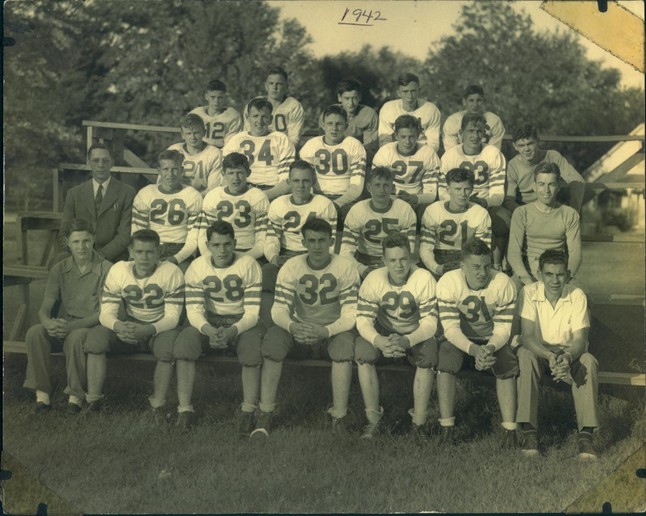
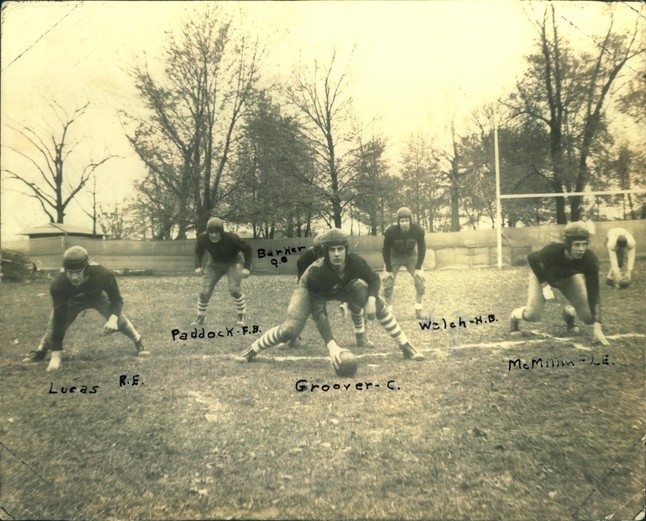
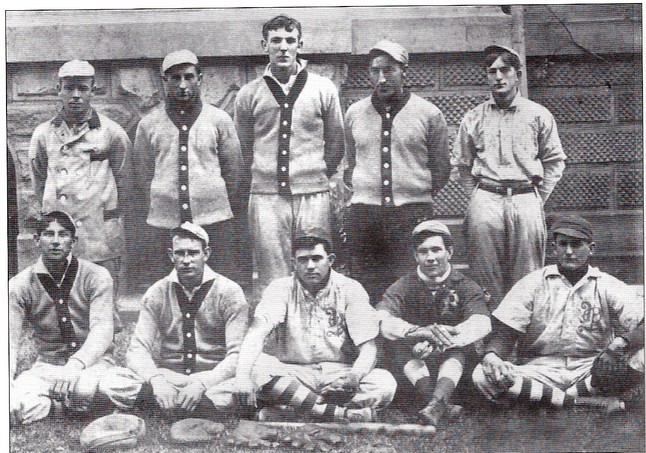
Pictured above is Pearl Sneath front left and "Shine" Elenech center rear. Pearl is the father of Margaret Sneath Hill, and grandfather of of Bill 1966 and Jerry Hill 1964 and Glenda Sneath Martin. Pearl died in 1948. The Sneath Heritage in Parke County goes back 8 generations back to the mid 1800s.
.jpg)
The picture above of the Coon Hunters shows the old grand stand at the park at the baseball field. Notice the coon dogs lining the front row. The swimming pool was built on top of the old baseball diamond. The concession/bath house and south parking lot were built on top of the old football field. The pump house and filter is over 3rd base. Below is the first Rockville Swim Team in 1959.
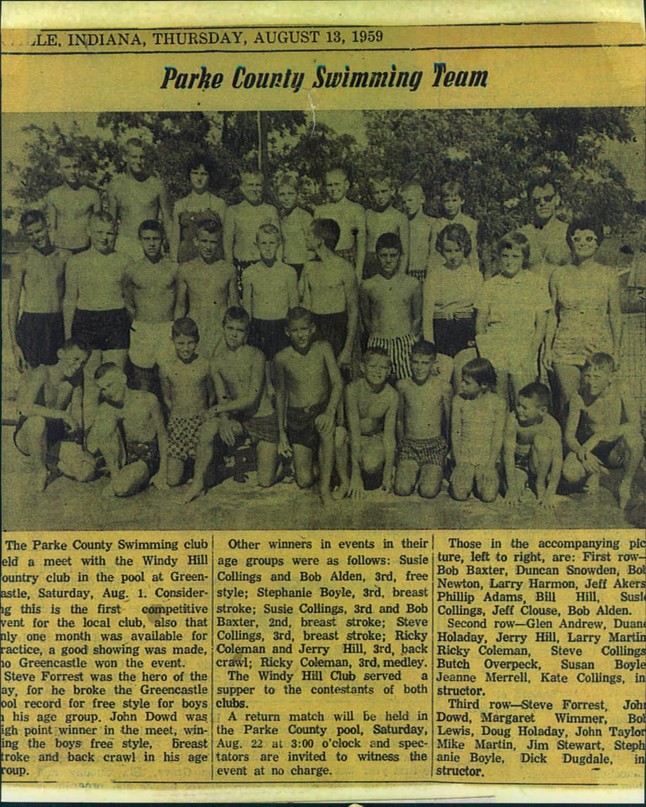
Most of the swim team above graduated between 1963 and 1969.
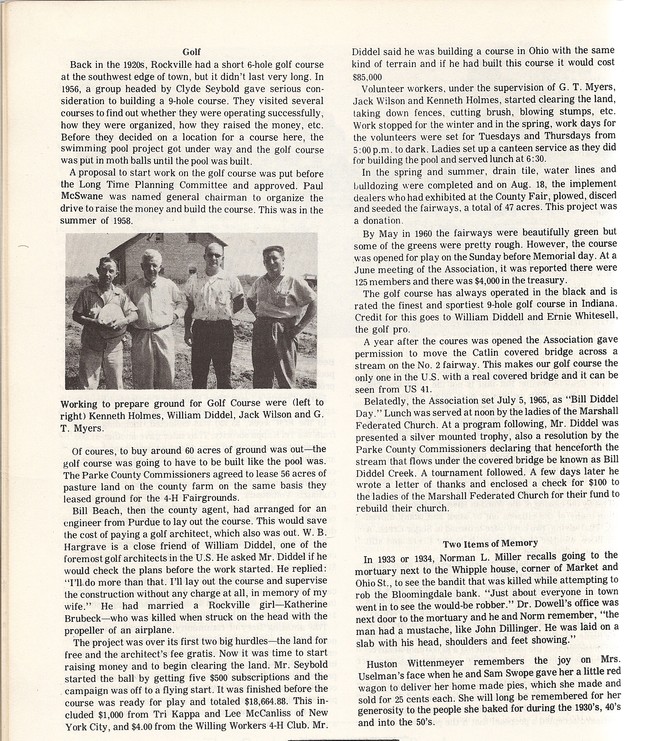

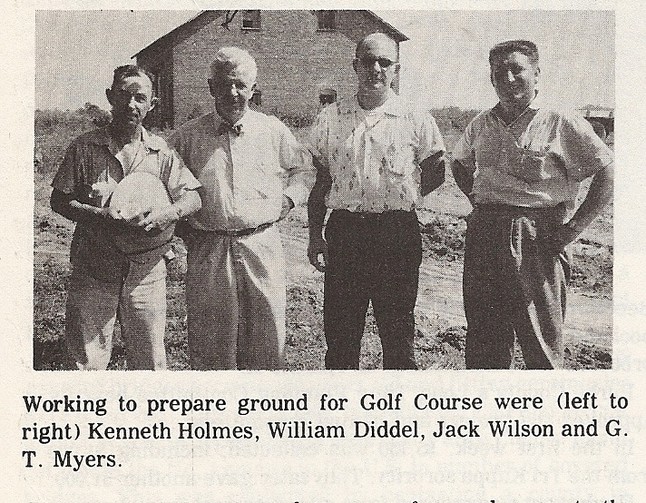
The Catlin Covered Bridge was moved to the golf course.
For a short period from 1916, Rockville had a 6 hole golf course club southwest of Beechwood Park organized by J.M. Johns and S.F. Puett. The membership included 18 ladies and 49 men.
.jpg)
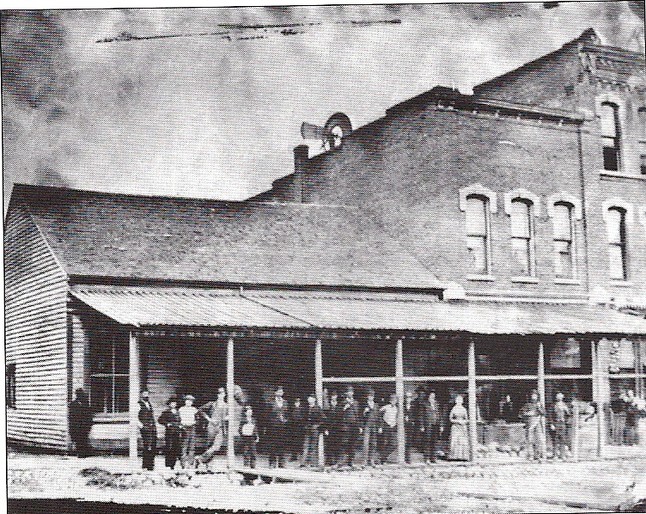
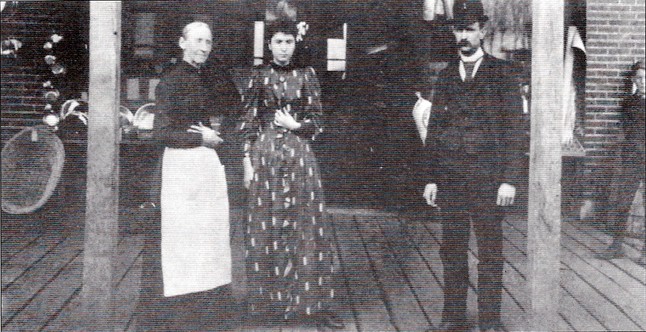
.jpg)
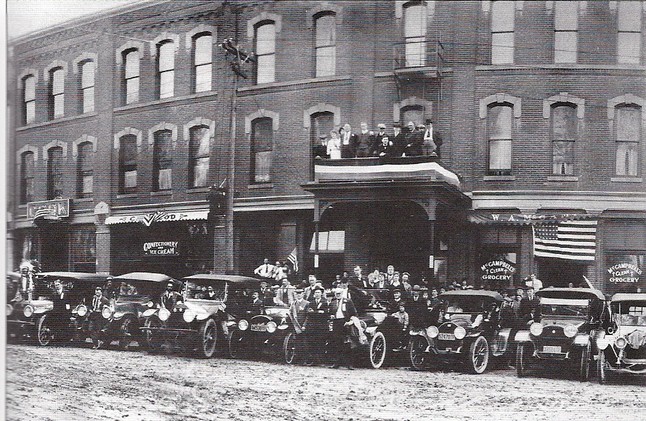
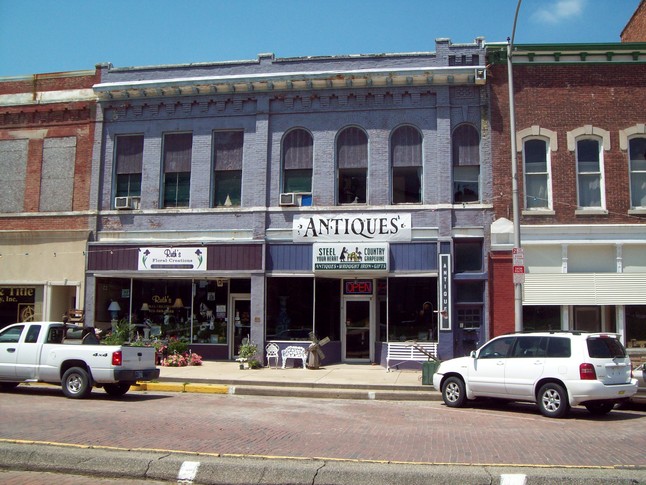
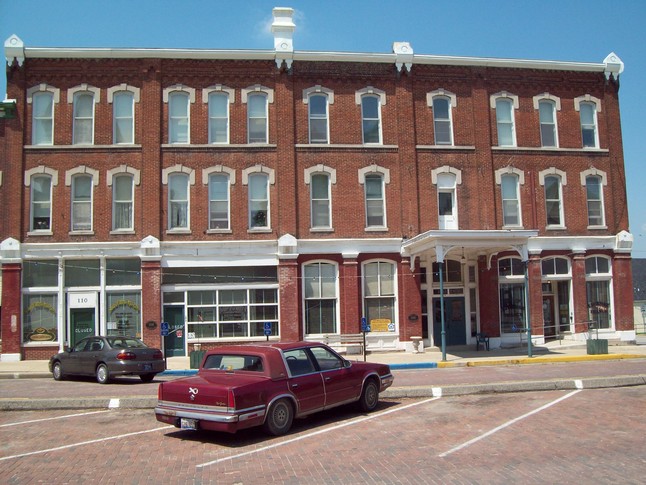
.jpg)
.jpg)
.jpg)
.jpg)
Then and now.
Many of the bricks used to build the buildings around the square were made right here in the Rockville brick yards on the northeast side of town.
.jpg)
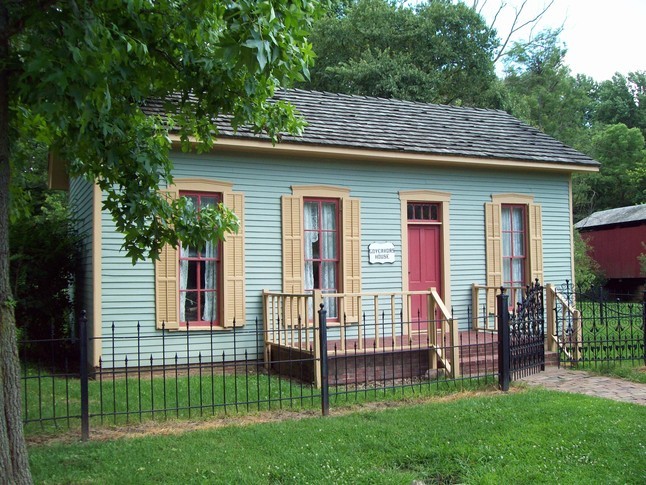
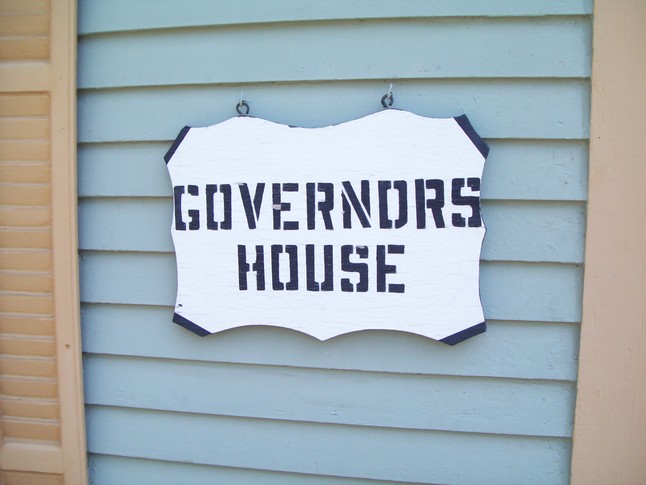
(Left) Gov. Wright's residence was moved from York and Michigan Street to Billie Creek Village.
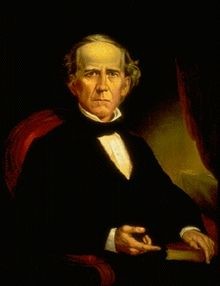
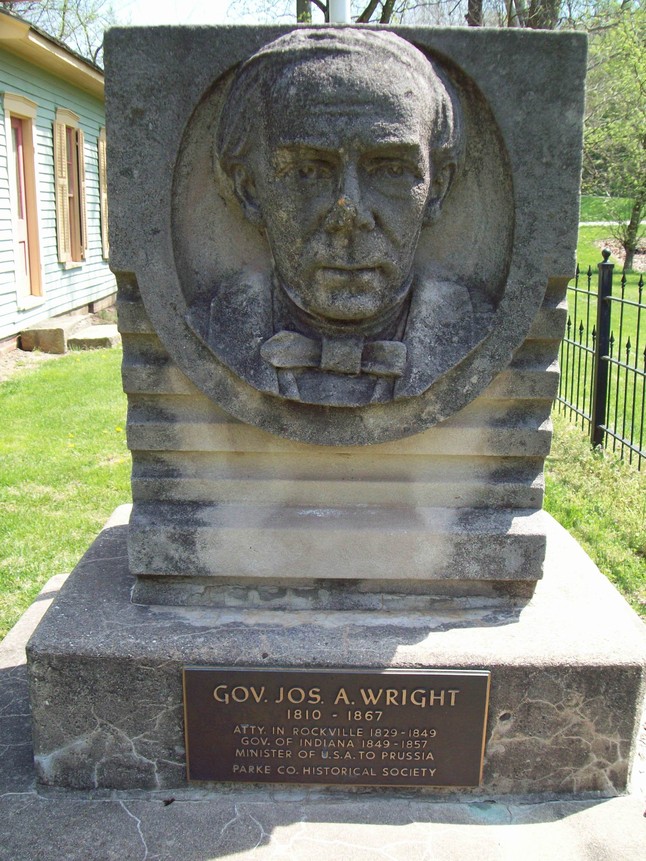
.jpg)
Rockville's Gov. Jos. Wright elected 1849 and 1852. The monument is located beside his relocated residence in Billie Creek Village.
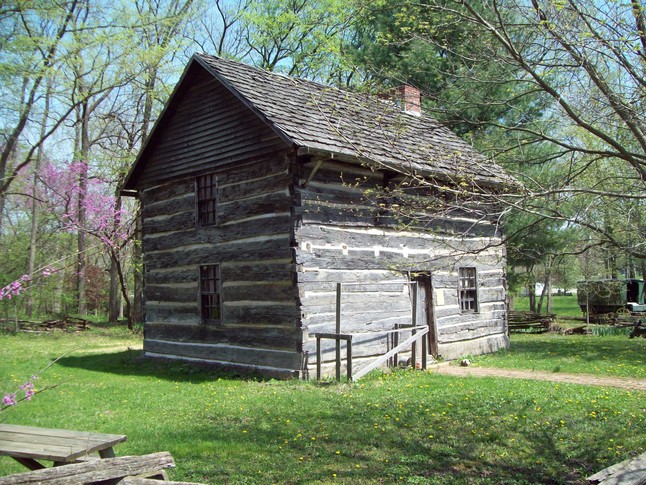
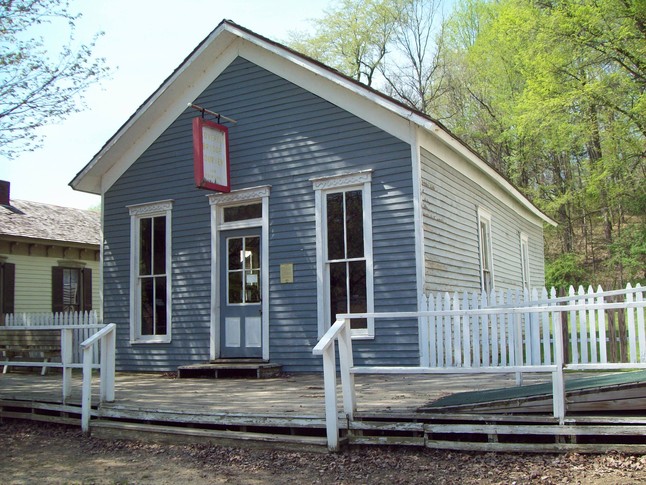
(Left) The Beeson Log Cabin. (Right) The blue Bellmore Telephone building was moved to Billie Creek Village and houses the old newspaper printing machines and metal type presses from the Rockville Republican and Tribune.
.jpg)
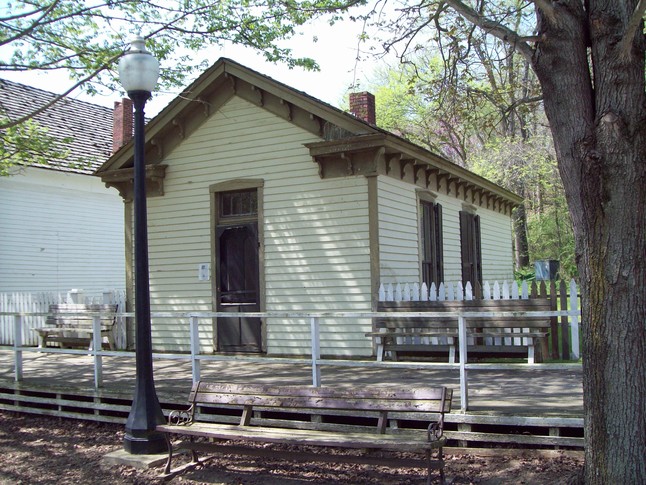
(Left) The old Catholic church moved in 1972. (Right) Dr. Rice office from Market St. It still looks like a doctor's office inside.
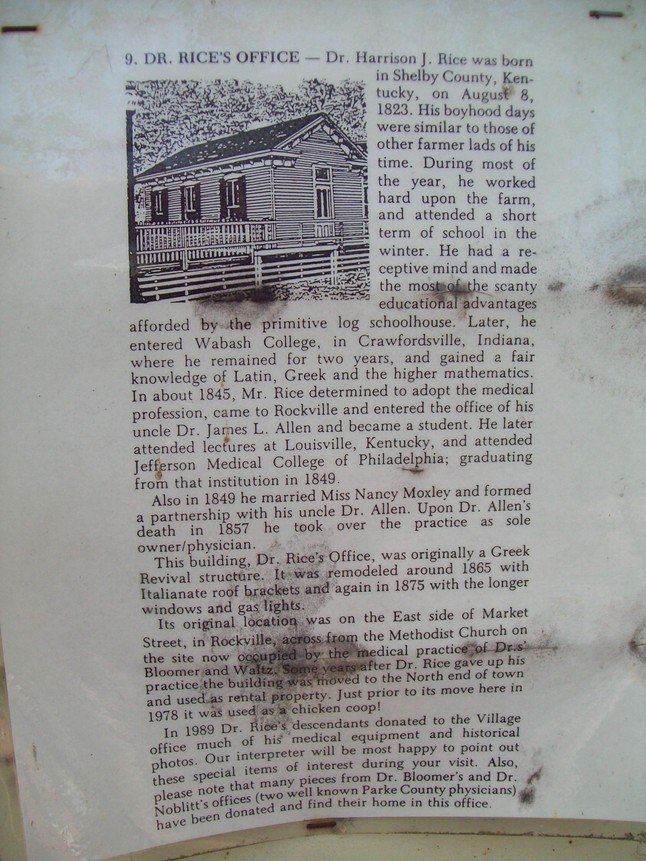
d.jpg)
See the Billie Creek Village Section
.jpg)
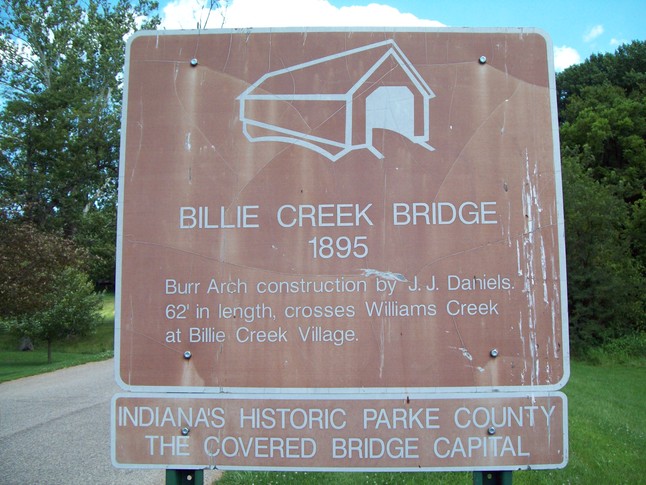
.jpg)
.jpg)
.jpg)
Most of the wooden buildings on the east side burnt on Dec. 8, 1871
.jpg)
.jpg)
Most of the old wooden buildings on the south side burnt on July 4, 1871. 1871 was a bad year for the court square fires. The south side of the square (High St.) was intended to be the main business area and the street was platted wider, including a divider, to accommodate all the horses, buggies and wagons.
.jpg)
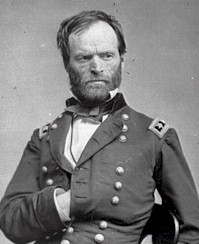
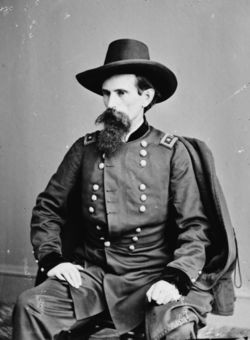
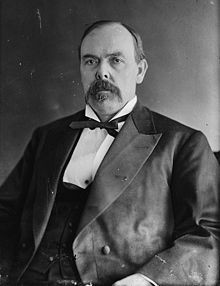
(Left) General William Tecumseh Sherman and (Middle)Crawfordsville's General Lew Wallace. Lew Wallace wrote the story "Ben Hur". (Right) Civil War Gov. Oliver Morton
.jpg)
.jpg)
.jpg)
.jpg)
.jpg)
(LEFT) WWI MEMORIAL ON THE SOUTHWEST CORNER OF THE SQUARE. THE COUNTY CLERK, ASSESSOR, TREASURERS OFFICE BUILDING ONCE STOOD ON THIS INSIDE CORNER LOCATION.
(RIGHT) A 50 YEAR TIME CAPSULE WAS BURIED ON JULY 5, 1974 ON THE WEST SIDE OF THE SQUARE AT THE BOTTOM RIGHT OF THE OUTSIDE STAIRS MARKED BY THIS STONE.
.jpg)
.jpg)
.jpg)
.jpg)
.jpg)
Most of the wood buildings on the north side burnt in 1871
.jpg)
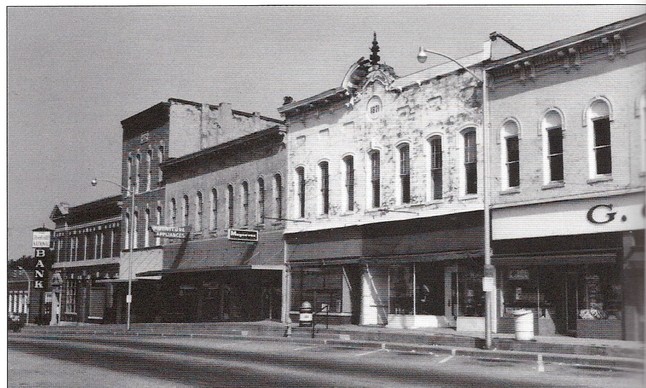
.jpg)
.jpg)
.jpg)
.jpg)
.jpg)
.jpg)
.jpg)
.jpg)
.jpg)
.jpg)
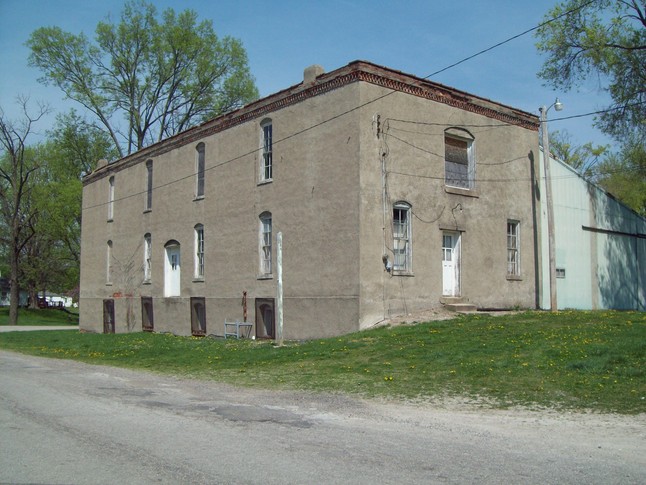
(Above) The old Armory Building on N. Erie.
(2).jpg)
(1).jpg)
(Left) The quonset hut on Michigan Street once served the National Guard and later housed Borden's Boat Shop in the 50's.Later came the Western Auto Hardware Store in the 1960's operated by Jesse Richey. Mr. Richey moved the Western Auto Hardware Store to this location from the west side of the square, basically right out the back door into this building.
(Right) The present National Guard Armory was built in 1956 on Strawberry Road.
.jpg)
.jpg)
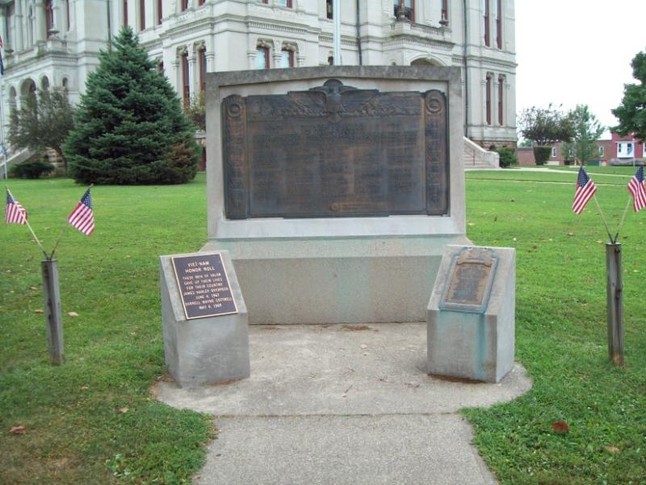
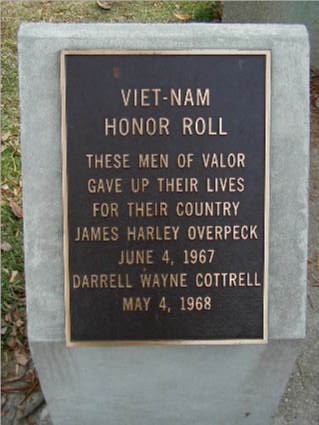
(LEFT) WW II MEMORIAL STONE (RIGHT) Vietnam NAM MEMORIAL
Visit the impressive "Killed In Action" Memorial Section of the Website. "Taps" have been added.
.jpg)
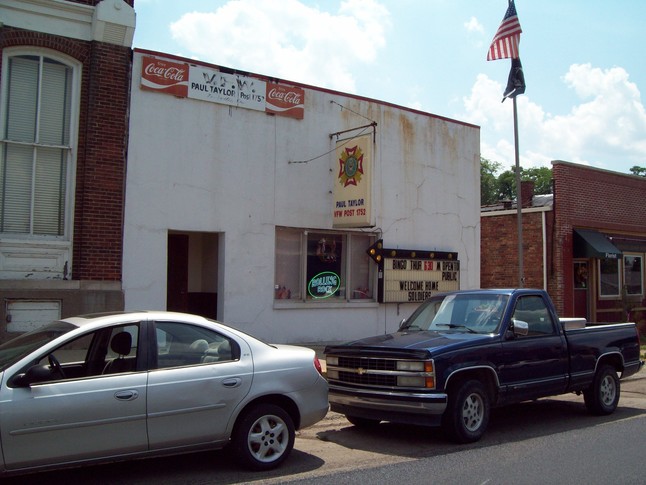
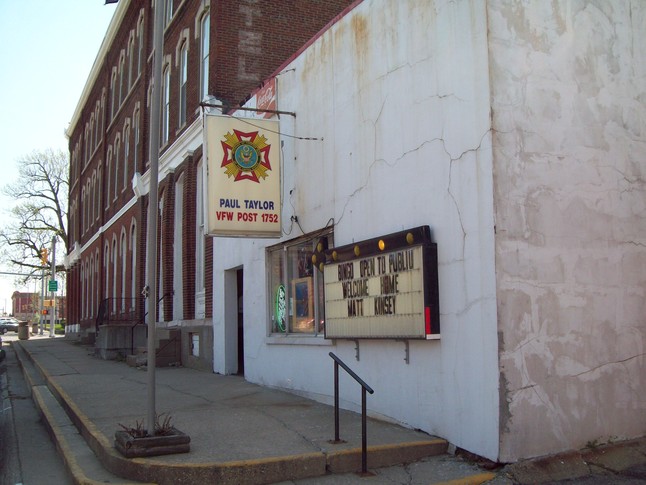
VFW at 23 West Ohio (US #36) in 2009
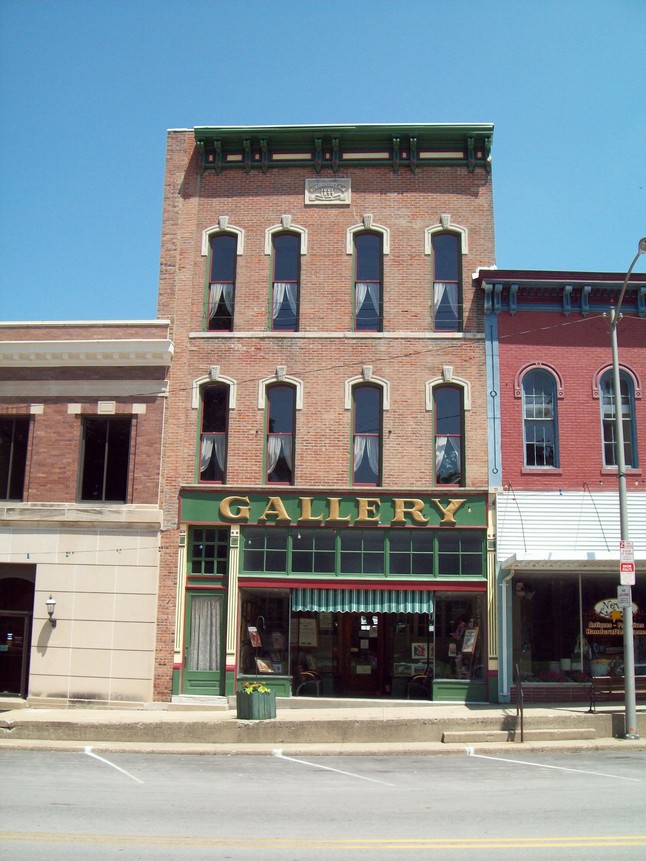
(Above) The Howard Lodge Building
.jpg)
(1).jpg)
.jpg)
(Left) Rockville Elks sign (Right) On July 25, 2009 Supt. Larry Gambaiani and Supt. Russell Garrigus became the first two inductees into the RoxAlumni.com Website Hall of Fame. The following year Rox Fight Song composer Richard Shores, Class of 1935 and Research Pilot Tom McMurtry, Class of 1953 were inducted.
.jpg)
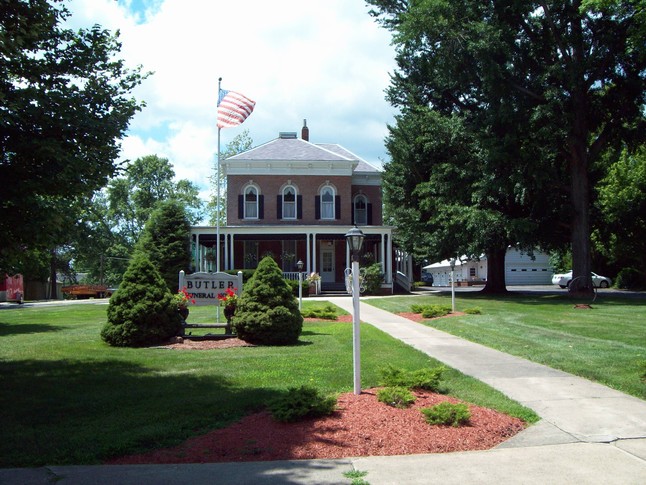
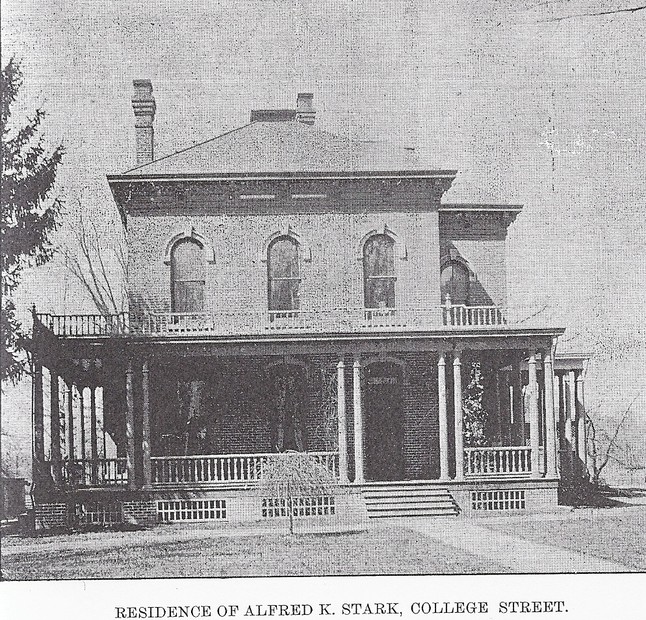
(Above) The College Avenue home of A. H. Stark, founder of the Parke State Bank, later became the Butler Funeral Home. The picture of the Womans Club costume party above was taken in this home in 1942.
Pictured below are Mr. and Mrs. Alfred Stark.
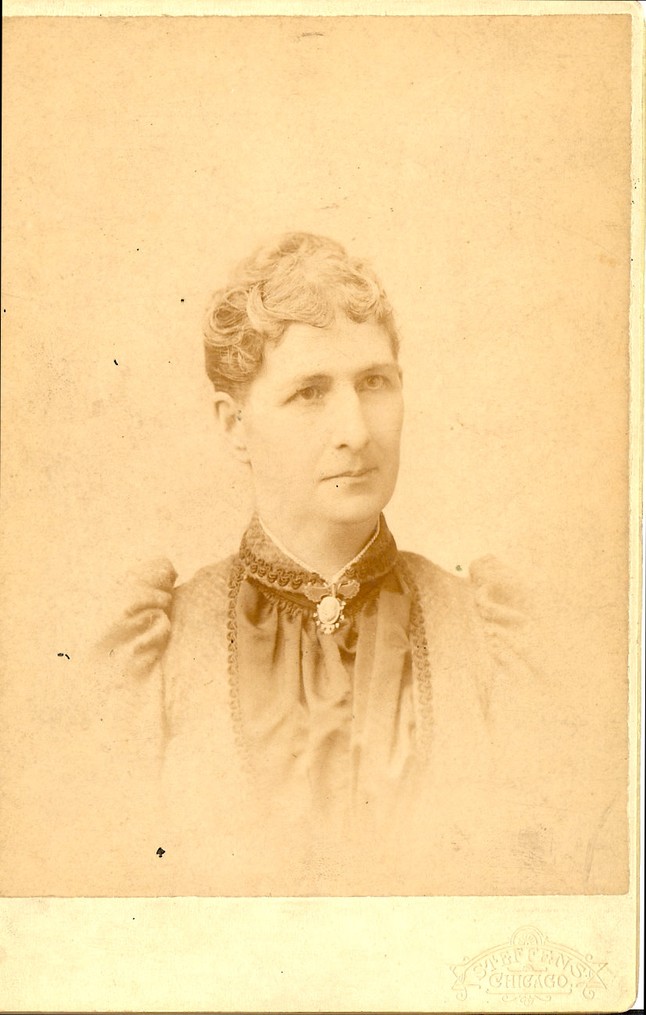
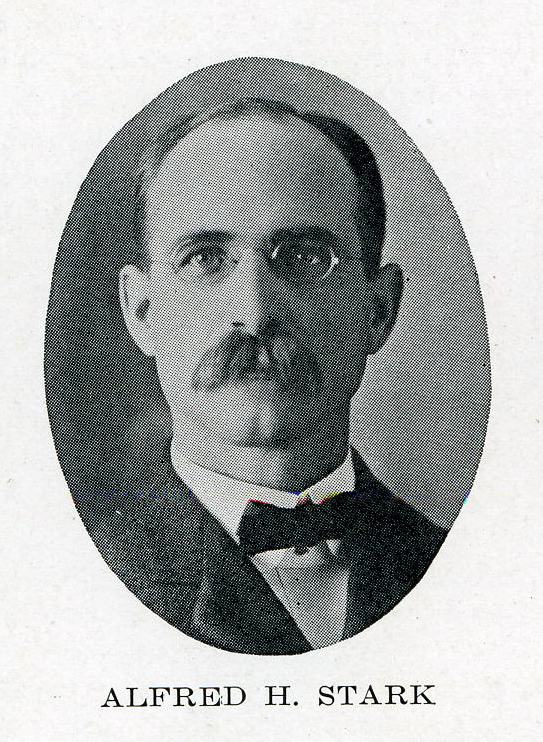
.jpg)
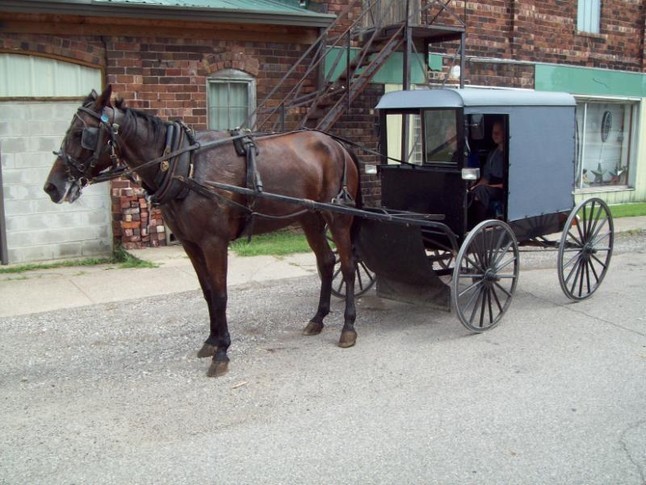
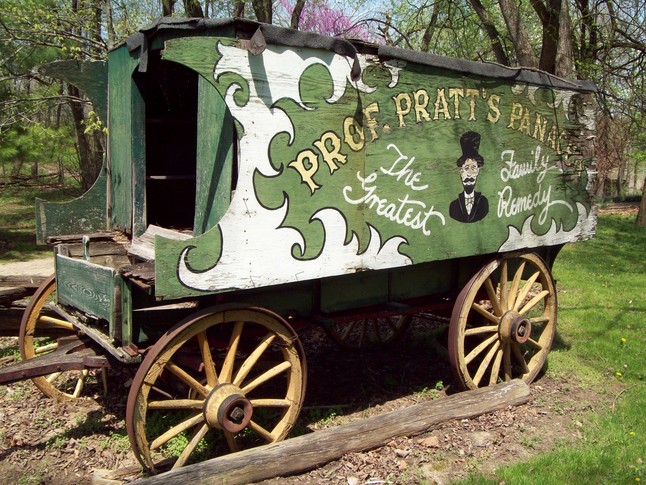
.jpg)
.jpg)
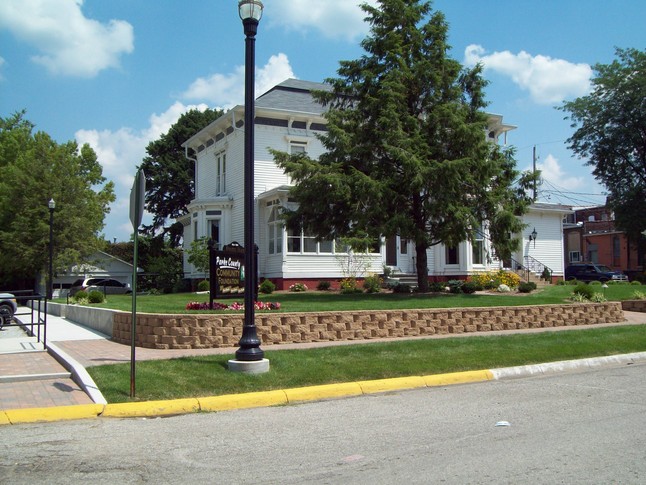
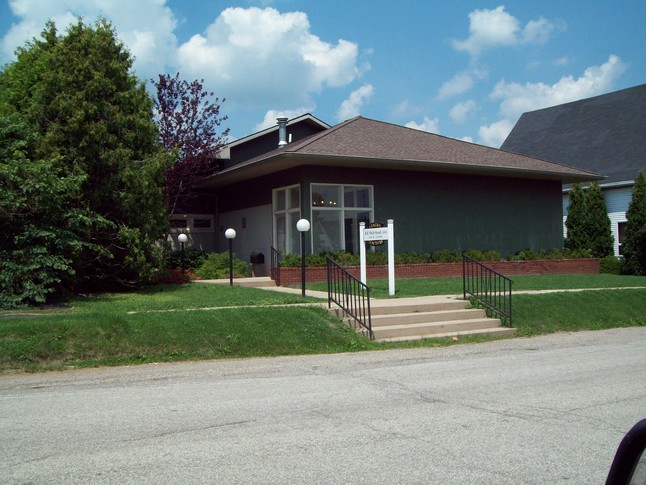
(Left) The white house at Market and York was built by Dr. Harrison Rice. His office was next door where the Bank drive-thru is now located and is now in Billie Creek Village next to the General Store. The Dr. Rice residence later became the Dr. Joseph Bloomer residence and office and later the office of his son Dr. Richard Bloomer RHS 1932.
(Right) Dr. Basil Merrell and D.D.S.G. A. "Buck" Welch's office on East York. Today it is the office of Bucks daughter who follows in his footsteps. Buck graduated from Rockville in 1942. His daughter, D.D.S. Mary Ruth Welch Staadt graduated in 1975. The Baker pottery factory once stood on this property.
Dr. Basil Monroe Merrell was born and raised on a farm in Waynetown, Indiana as one of 8 children. He graduated from Franklin College and returned to his hometown to teach high school and coach the local basketball team while saving money for Medical School. He once played basketball for the Converse All-stars.
He graduated from IU Medical school, married and joined the Army/Airforce and served during World War II as a Doctor in North Africa, Egypt, India and Burma before moving his wife and three young children, Danny RHS 55, Bill RHS 57 and Jeanne RHS 64 to Rockville in 1946 to practice medicine. He served as Coroner, as well as the physician for the local Air Force Base and the Rockville basketball team.
.jpg)
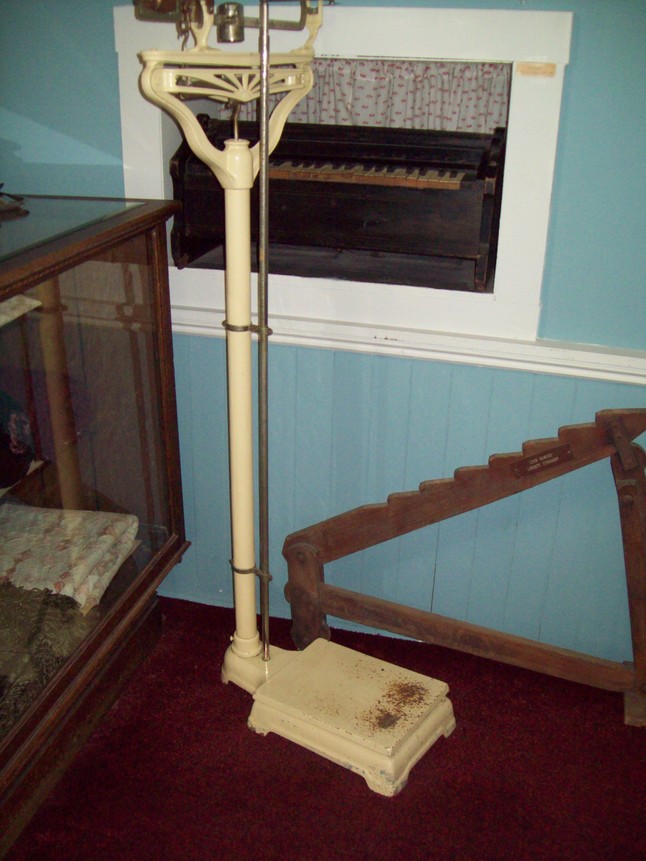
Dr. Richard Bloomer in uniform and the scales from his office.
.jpg)
.jpg)
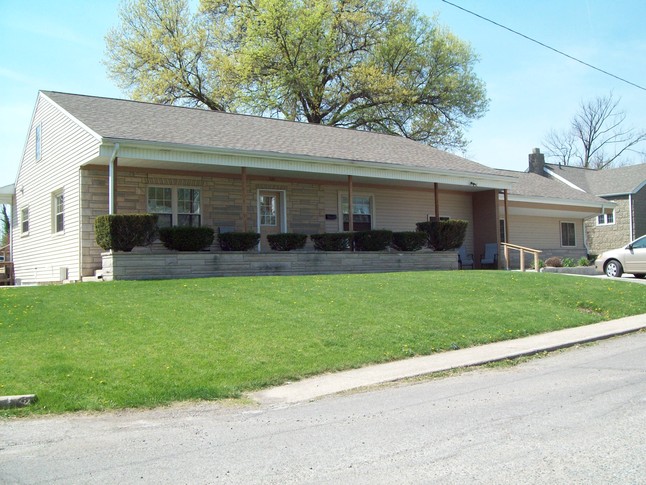
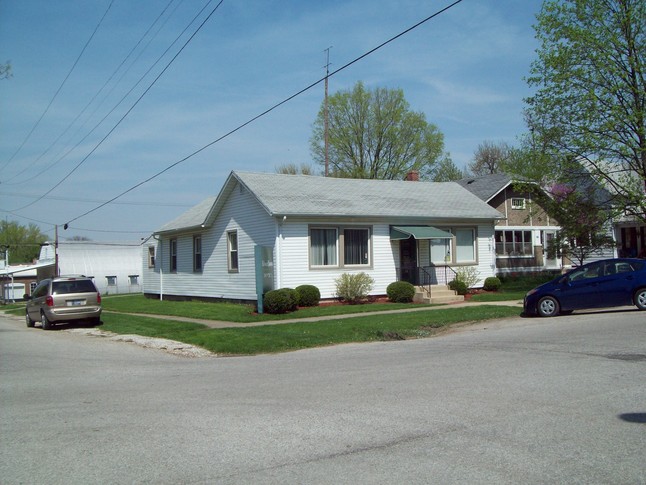
(Left) Dr. Koenig's home on College Ave. (Right) Dr. Harstad's and Dr. Koenig's Office on W. High St. Dr. Koenig died Sept. 25, 2010 in Florida at the age of 93. Famous TV cowboy Roy Rogers and Dale Evans once tried to buy Dr. Koenig's golden Palomino named Golden Eagles Choice. He was not for sale. Dr. Koenig and his horse always led the parades. The horse could sense when he was leading a parade and held his head up high and prantzed with a high step gate for the crowd.
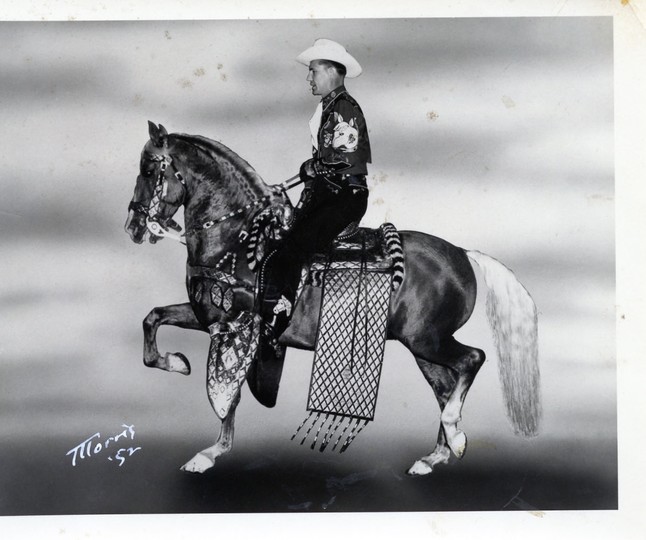
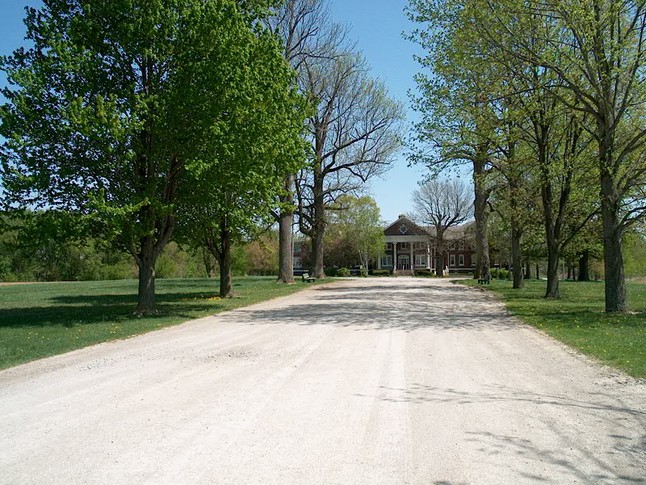
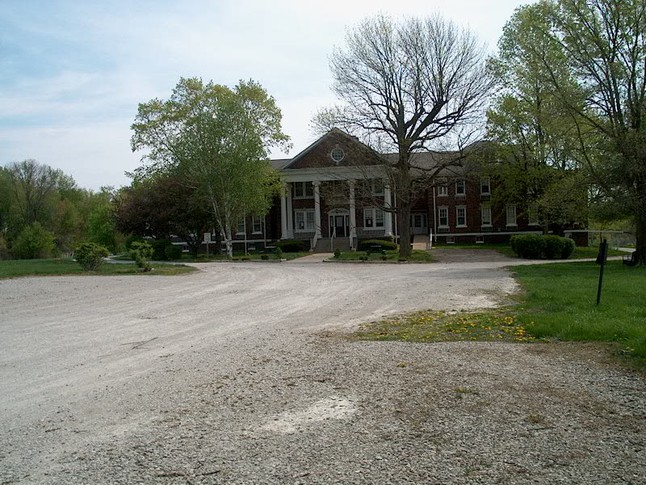
.jpg)
.jpg)
THE PARKE COUNTY HOME/FARM/ASSYLM WEST OF THE FAIRGROUND WAS BUILT IN 1867 ON 200 ACRES BETWEEN BLOOMINGDALE ROAD AND U.S. 41. IT BECAME A NURSING HOME IN 1958 AND CLOSED AROUND 2009. PARKE COUNTY LEASED GROUND FROM THE HOME FOR THE FAIRGROUNDS AND THE GOLF COURSE.
.jpg)
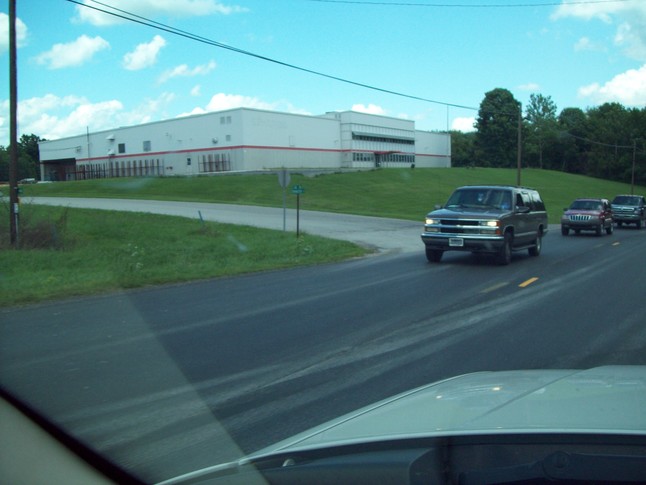
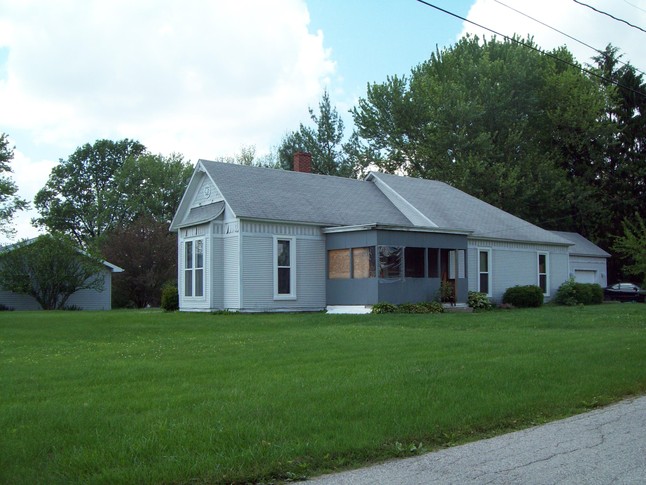
(Left) the Dormeyer Industries Plant on E. Ohio U.S. 36 (Right) Hillcrest Industries on Stark Street.
.jpg)
(Below) Attorney Warren Buchanan was a freshman in 1922 and is 5th from the right, front row in the freshman picture next to John Upp RHS 1926.
.jpg)
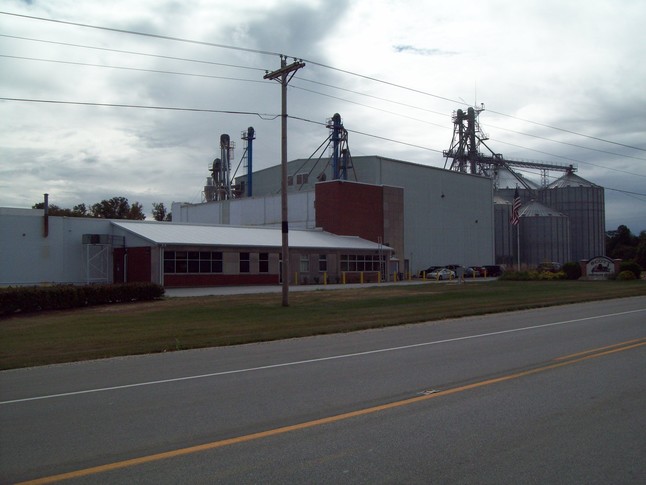
The Funks Seed plant north of Rockville was built and opened in 1955. Bill Sears was the first manager of the facility. Ray Shoemaker was made manager in 1956 and came to Rockville in the early part of 1956 with his family Alta, Janet 64 and Don 66, joining him that summer. The property consists of approximately 14 acres. A farm next to the property was purchased by the company and owned for a few years, but was subsequently sold.
Somewhere around 1974-75 Funk Brothers Seed Company was sold to Corn Products, Inc. The facility and business was again sold 1-2 more times with Ciba/Geigy ending up with the business. (since then, that company I think has been purchased by another pharnaceutical/chemical company??) The Rockville facility was closed and Scott Pet Foods moved in to the Highway #41 property.
The Funk Brothers Seed Corn Company was founded by the Funk Family of Bloomington and Shirley, Illinois. They had plants and facilities in several states as well as international operations in South and Central America. Ray Shoemaker went to work with this company when he was about 16 years old. He was well respected and well liked in the business.
Before mass mechanization of de-tasseling the corn, many youth were hired by Funks during the summer for a 2-4 week intense attack on the hybrid corn fields to remove those tassels. My guess is that during several years, Funks would hire up to 2000 - 2500 extra helpers during that season of de-tasseling. (Information provided by Janet Shoemaker Class of 1964)
.jpg)
THE 2nd ROCKVILLE OPERA HOUSE WAS BUILT IN 1912 ($20,000), LATER BECAME "THE RITZ THEATER" WHERE MOST OF US BUILT UP OUR COURAGE AND HELD HANDS AND PUT OUR ARM AROUND OUR GIRLFRIEND FOR THE FIRST TIME. MARIE MULL PLAYED THE PIANO DURING SILENT MOVIES UNTIL THE THEATRE WAS WIRED FOR SOUND "TALKIES" IN 1929. AFTER EXTENSIVE RENOVATION IN 1937 IT BECAME THE RITZ THEATRE.
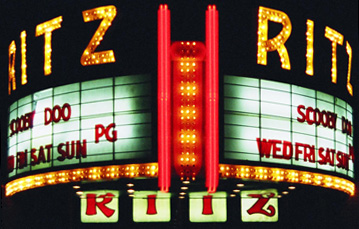
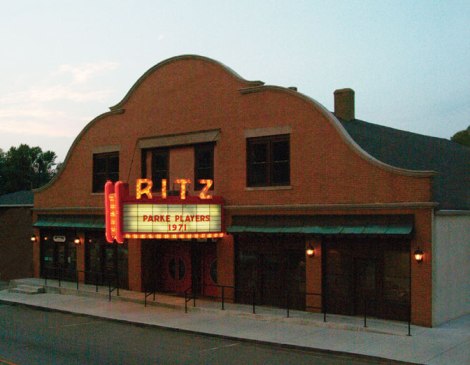
As little boys, movies at the Ritz Theater was our chief outside entertainment. The theater changed features on Sunday/Monday, Tuesday/Wednesday, Thursday, and Friday/Saturday. In other words, there were four different movies each week. On Thursday, at a cost of only ten cents, they usually had a western feature plus a serial which was "continued" for several weeks with each episode ending with the hero's life in great danger (like going over a cliff), but the next week would show how he got out with his life. There was also always a cartoon and a newsreel with the week's major news story shown. I remember the first movie in Technicolor. It was Shirley Temple in "The Little Colonel" in which only the last few minutes of the movie was in color. Very impressive to the audience who stood and applauded at the end of the movie!
Bill & Dick Collings RHS 44 & 46
.jpg)
.jpg)
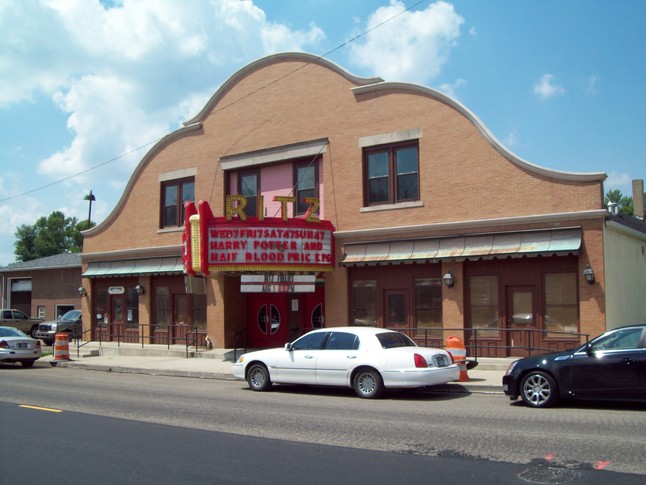
.jpg)
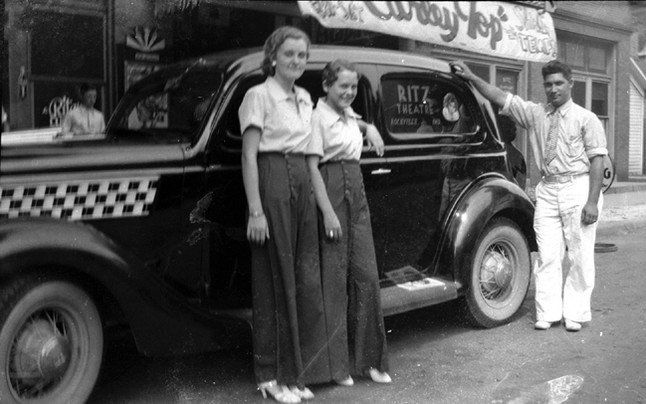
Notice the Shirley Temple poster on the back of Bud's car.
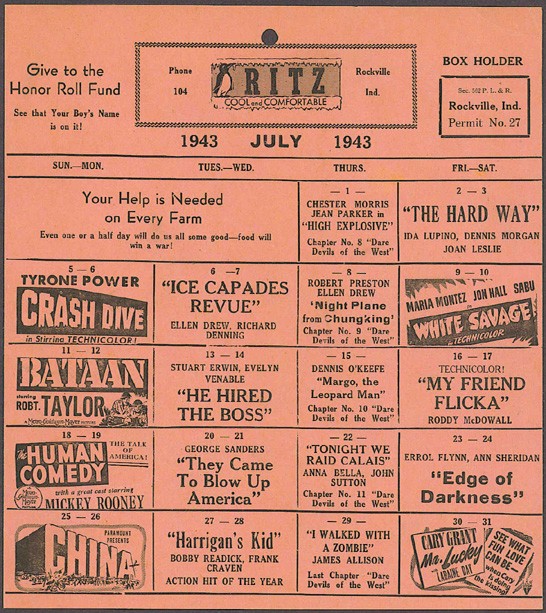
.jpg)
Bud and Lucy Washburn operated the Ritz Theater for years.
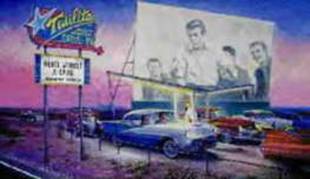
Rockville had a drive-in theater way, way out on north 41. The new IGA now occupies this ground. The drive-in use to shoot off a fireworks display every July 4th. Many of us grew up as little kids going to the Rockville Drive-in with our parents and later taking our girlfriend here on a car date where many wonderful memories were made. Many of us saw Elvis, Lee Marvin, Jerry Lewis, Dean Martin, John Wayne, Rock Hudson, Doris Day and Maw & Pa Kettle at the Drive-In. Do you remember the phrase "Tha, Tha,That's All Folks." The Marietta family ran the Rockville and Clinton Drive-ins during the 60's.
If you have any pictures or know any of the history of the Rockville Drive-in, please share with us.
.jpg)
.jpg)
In 1963 Margie Dell Cox (Leamnson) opened Mardell's Clothing Shop on the SW corner of North College Ave. and Howard Ave. Margie passed in Aug. of 2011.
.jpg)
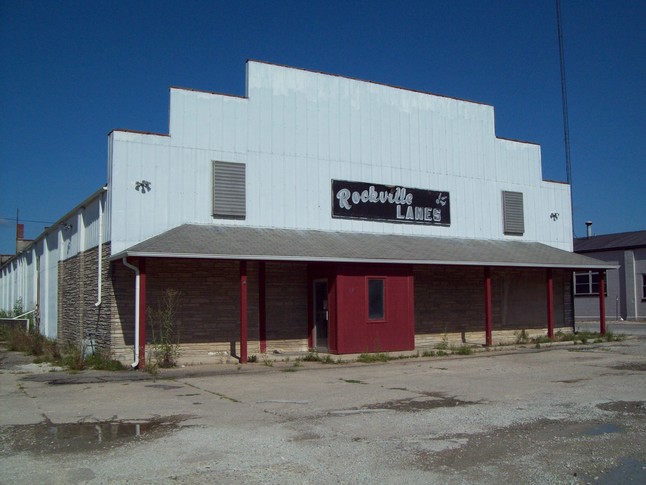
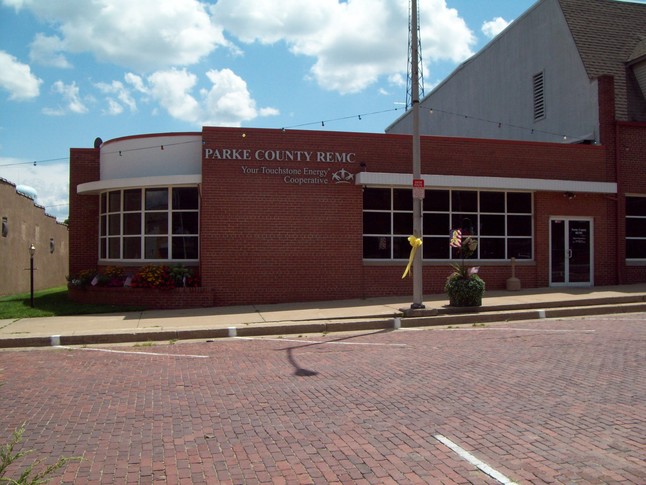
Dr.Harold Koenig and Dr. Hardsted leases the Hinshaw garage to open a bowling alley in the early 1960's. For years, Dr. Koenig led the local parades with his golden palomino adorn with a beautiful silver laden saddle.
.jpg)
.jpg)
.jpg)
Ernie Hill started climbing utility poles for the REMC in 1952. He died in 2004.
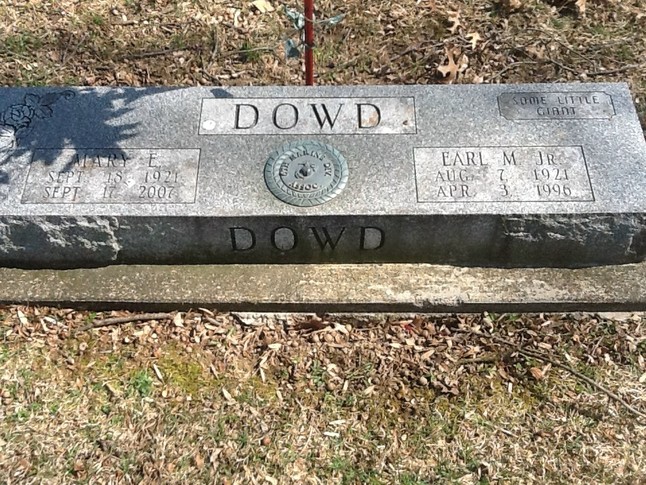
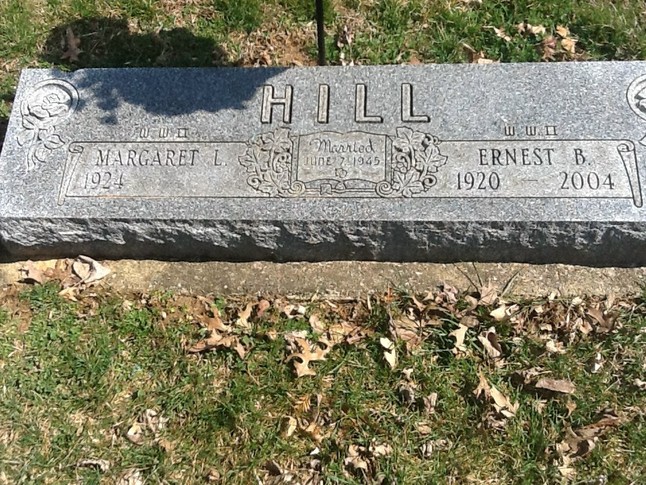
Earl and Marrietta Dowd Jr. and Ernest Hill are buried in Memory Gardens.
SOME OF ROCKVILLE'S MOVERS AND SHAKERS
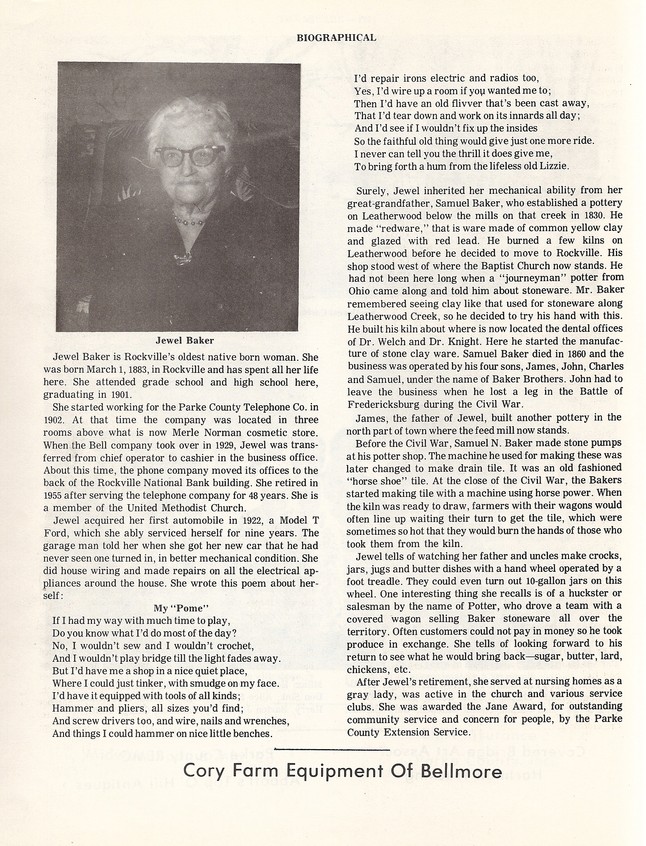
JEWEL'S GREAT GRANDFATHER, SAM BAKER HAD THE BAKER POTTERY STORE AND FACTORY LOCATED ON THE NORTH SIDE OF YORK ST. ACROSS THE STREET FROM JACKS AND JACKS MOTORS. HIS KILN WAS LOCATED ONE BLOCK EAST WHERE THE BAPTIST CHURCH AND DDS. BUCK WELCH, MARY RUTH WELCH STAADT NOW STAND. JEWELL'S FATHER, JAMES BAKER, BUILT ANOTHER POTTERY ON THE NORTH SIDE OF TOWN WHERE THE OLD MILL STOOD.
.jpg)
MARION MARTIN AND HIS WIFE, ETHEL CARVER MARTIN WERE ONCE WAS A PARTNER IN THE FERGUSON LUMBER CO.
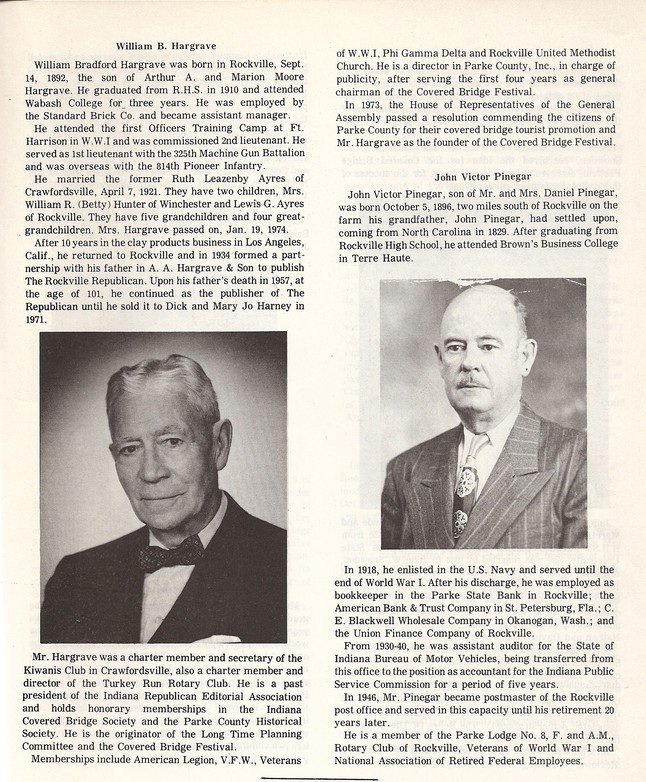
.jpg)
.jpg)
.jpg)
Marcia Strouse Ott was married to Claude Ott pictured above.
Marcia Strouse Ott's mother, Juliett Strauss/Strouse (grandmother to Juliet Ott Snowden) was a principle fund raiser for the funds used to purchase the Capt. Lusk Estate for the Turkey Run State Park. (See Parke County History/Turkey Run State Park- 1916)
(Below) The statue below stands in Turkey Run State Park The plaque says:
"Erected by the Women of the Press of Indiana
In Tribute to Juliet V. Strauss (Strouse)
The Country Contributor
Turkey Run--Playground of her youth and Later years
1863-1918
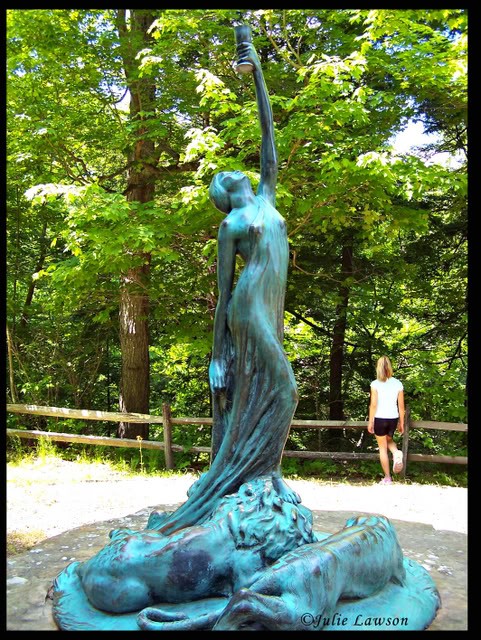
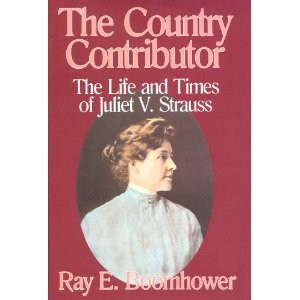
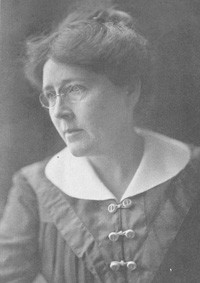
|
||||||||||||||||||||||||
|
||||||||||||||||||||||||
.jpg)
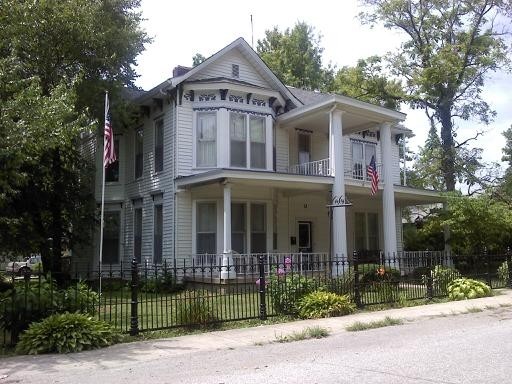
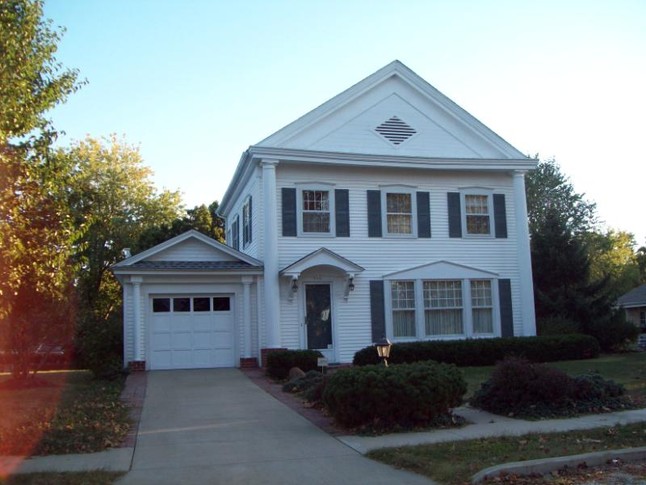
(Left) Juliet Strause and husband Isaac Strouse lived in this home on N. College Ave. Later occupants included Jane (59) Stephanie (62) Cummings and later the Tom and Bev (51) Lewis Stein and alumni children.
(Right) The home of Pharmicist and Drug Store owner Paul "Pim" Ensley Class of 1946 on the corner of West High St. and College Ave.
.jpg)
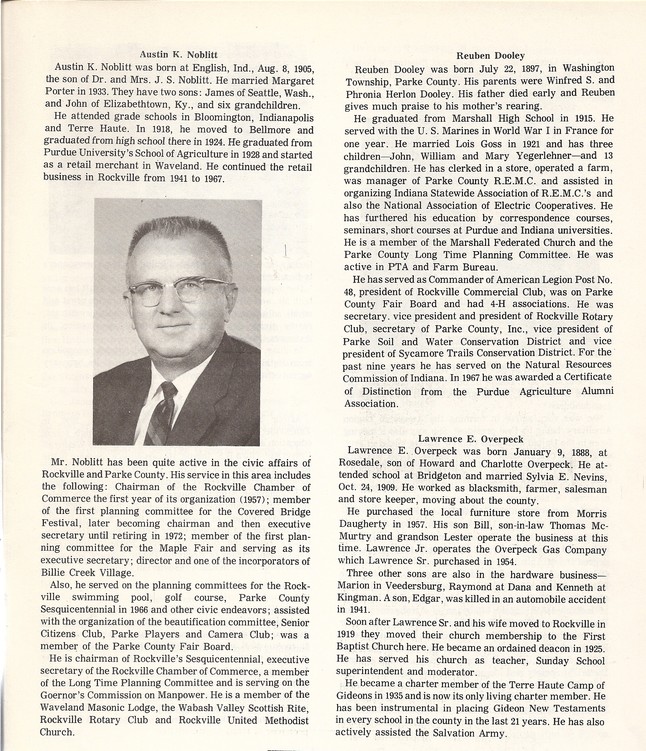
.jpg)
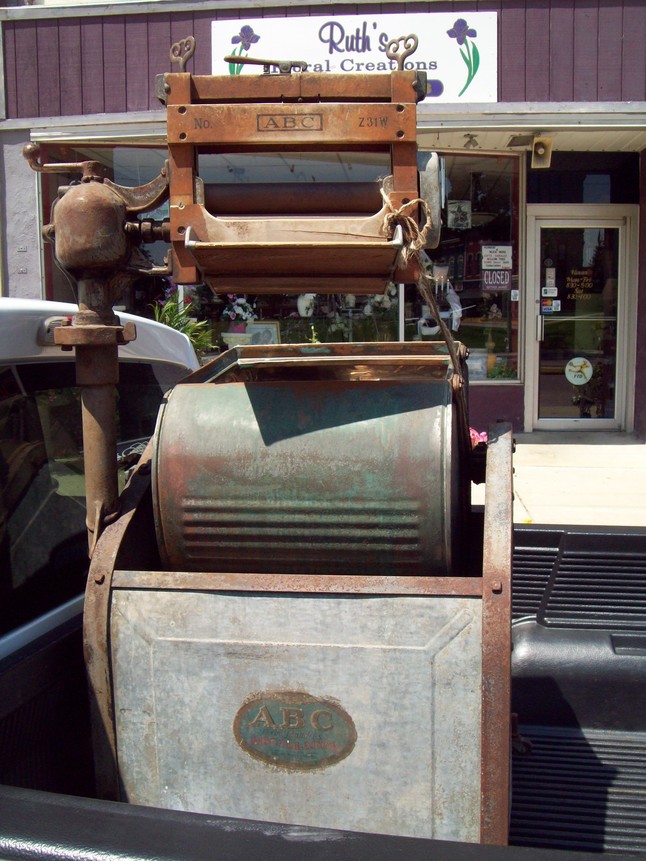
Lawrence Overpeck Sr. acquired the Maytag franchise for this area in 1928. He mounted a machine on a platform in the trunk space of his Essex automobile. He would then travel throughout Parke county demonstrating the machine. Later he expanded his operation by purchasing a pickup truck and was able to carry at least two or more machines at one time. After selling a washer, he would go to Indianapolis to get another . In those days he would trade for horses, cows, hogs, anything to make a sale. A man's word was his bond and all records were kept in their heads. Selling during the depression was not easy.
He moved his stock from the back of his truck into the basement of the Thomas Grocery Building on the northeast corner of the square. Later he moved across to the west side of Jefferson Street to the Masonic Building where he expanded into wood, coal, and bottled gas cooking stoves.
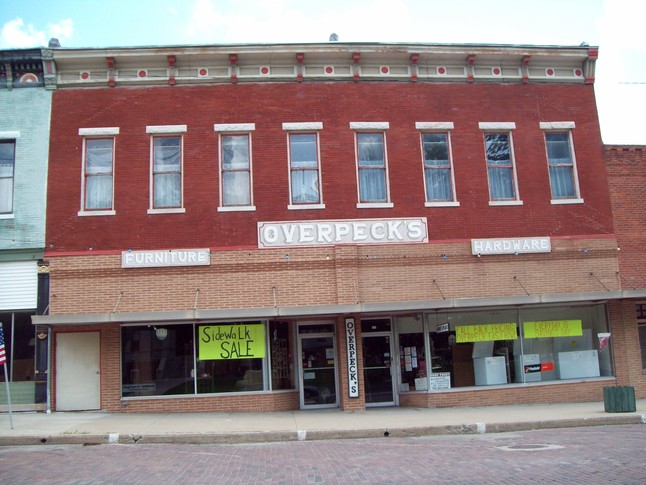
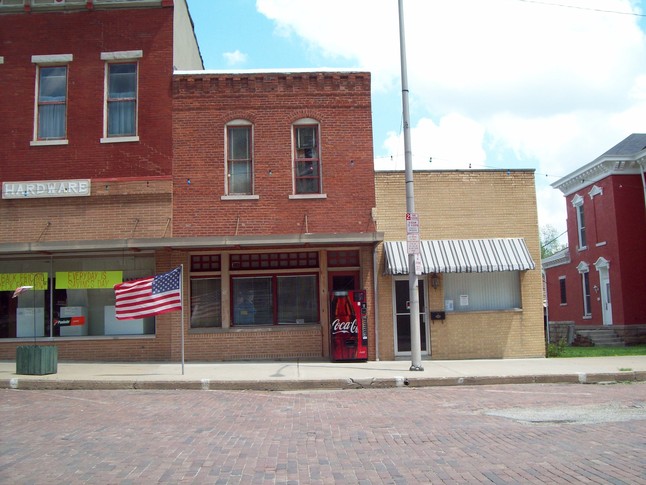
In 1936 the large space on the east side of the square became available and he moved in, which is the present location. Eventually he purchased the stock from the Charles Whitesell Hardware Store. Then several months later he purchased the stock of the Charles Brown Hardware. As his children graduated, they bought or started hardware businesses in neighboring towns including Dana, Kingman, Veedersburg and Attica.
A furniture business next door to the hardware business was purchased in 1957 to add furniture to their operations. Then in 1977 the John Upp Photo Studio next door was purchased to expand the appliances and electronics department.
Jr. Overpeck RHS 1942 joined his father in the Rockville business. Bill Overpeck RHS 1946 joined the firm in 1946 and Inez Overpeck McMurtry RHS 1949 (the only daughter) and her husband Tom McMurtry RHS 1953 joined in 1959. The other brothers had all ventured out to other nearby towns with their own hardware stores, Edgar Overpeck in Attica, Kenneth in Kingman, Marion in Veedersburg and Jr.'s son Cy Overpeck RHS 65 in Dana. Prior to his death, Cy later joined in father back at the Rockville store.In 1995 the Albright Furniture Business was purchased to expand the furniture business.
Jr. Overpeck RHS 1942 and older brother Kenneth Overpeck RHS 1934 bought and started expanding a bottled gas business in the late 50's. Jr.'s oldest son Dan Overpeck joined his father in the bottled gas business and now owns and operates the bottled gas business which has multiple locations and tanker semi's.
Two of Bill and Waneta Overpecks sons, Ashley Overpeck RHS 1977 and Gary Overpeck RHS 1982 are now managing the Rockville Overpecks Hardware business of three generations.
ONLY IN AMERICA AND WITH GOD'S GUIDANCE COULD ONE WASHING MACHINE BLOSSOM INTO A FLURISHING SET OF BUSINESSES.Per Bill and Waneta Martin Overpeck RHS 1949
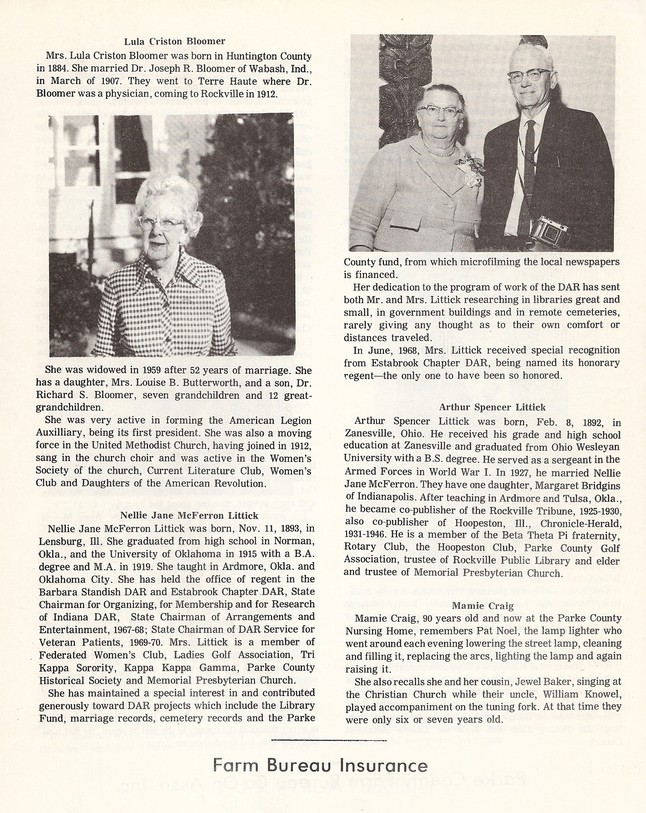
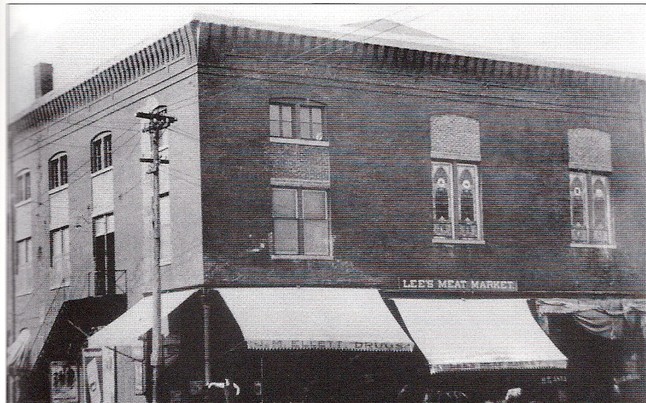
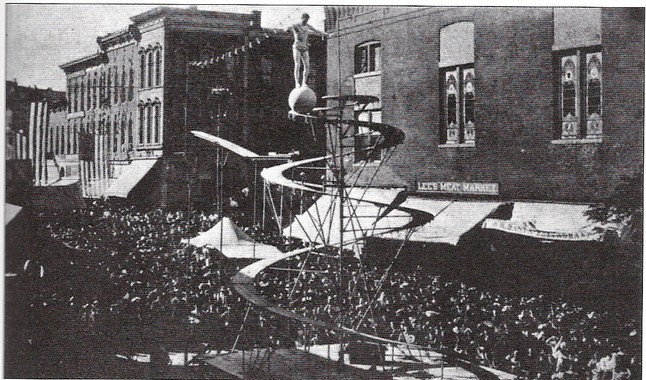
(Above) Rockville's first Opera House was built in 1893 and operated until 1907 above Lee's Meat Market on the northeast corner of Ohio and Jefferson.
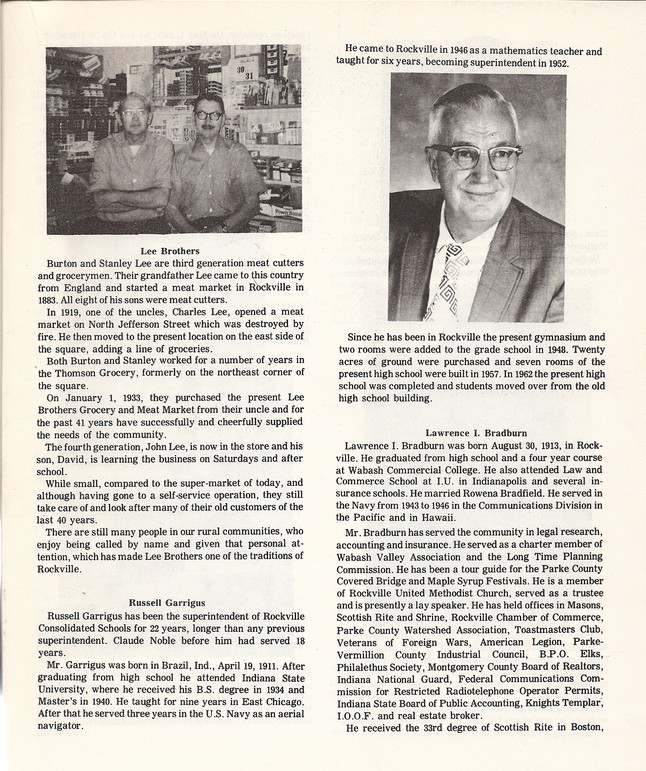
.jpg)
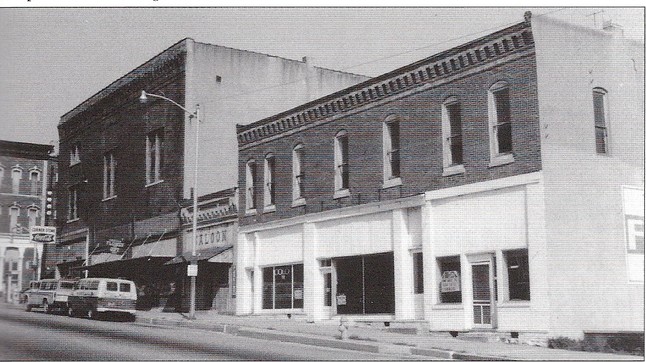
.jpg)
.jpg)
(Above) East Ohio St. between Jefferson St. and Virginia St. The T. F. Gaebler Building, once home to The Gaebler Marble and Monument business, was moved to Billy Creek Village in 1982.
.jpg)
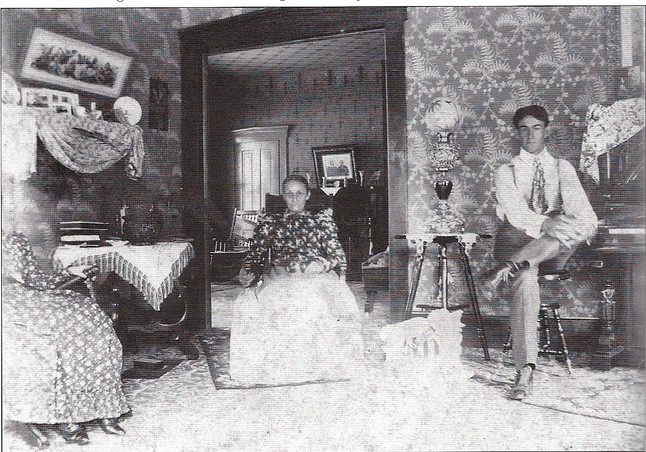
.jpg)
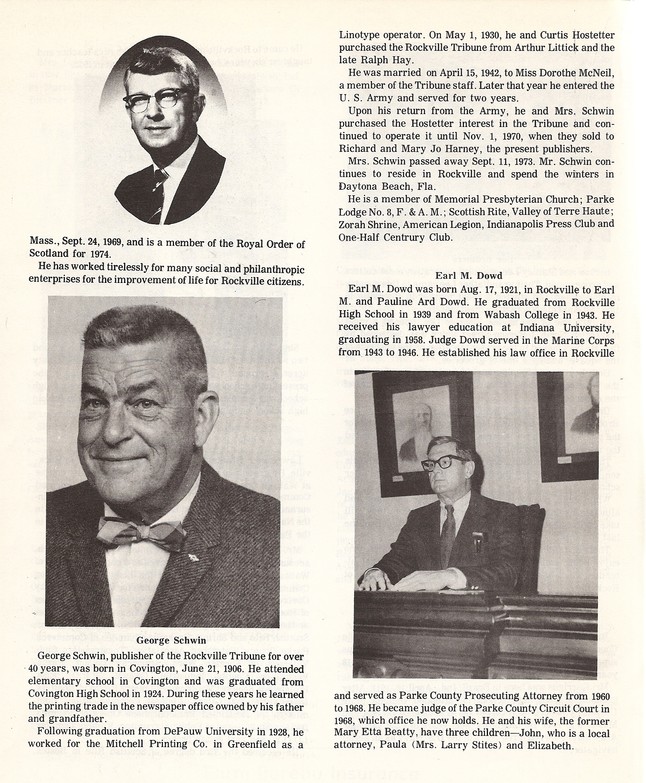
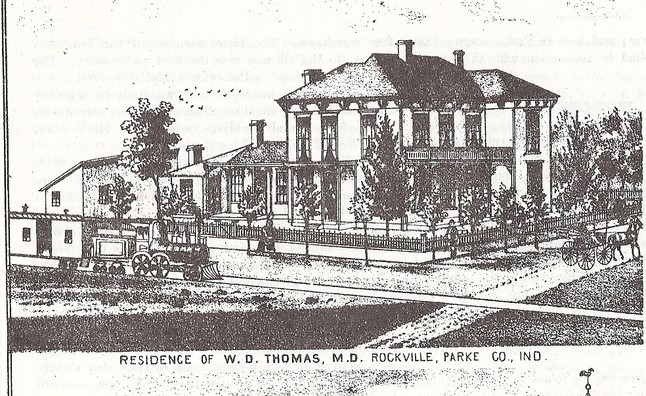
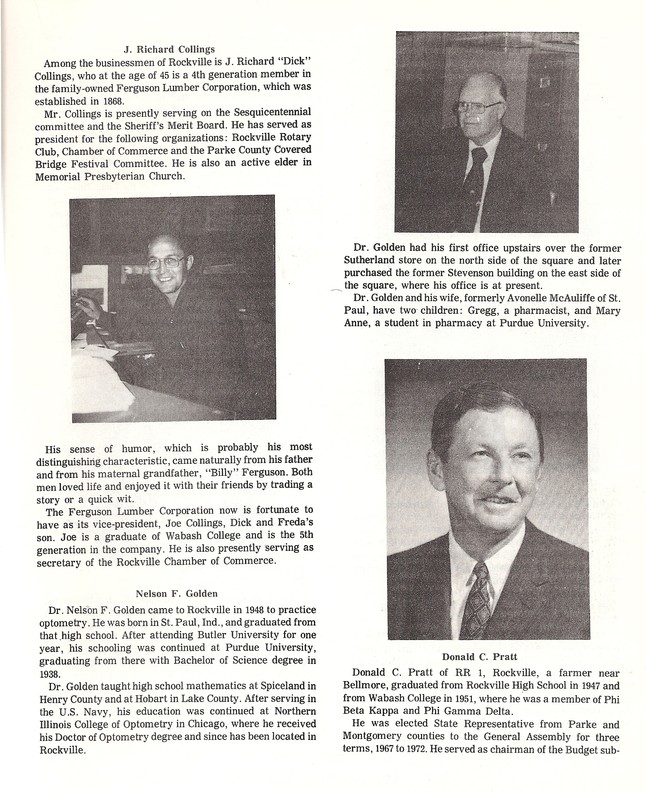
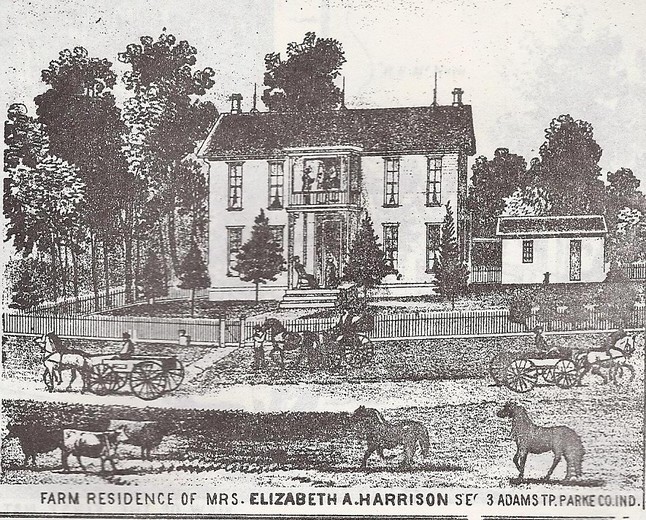
.jpg)
.jpg)
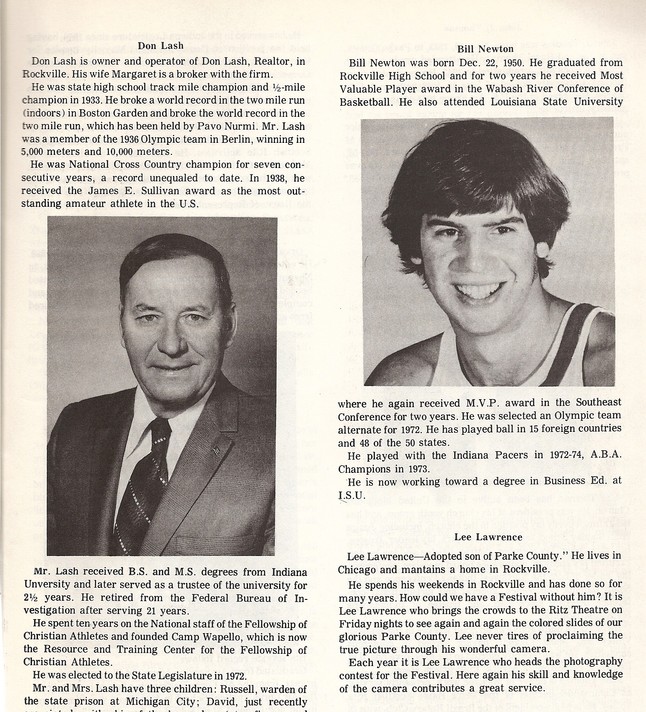
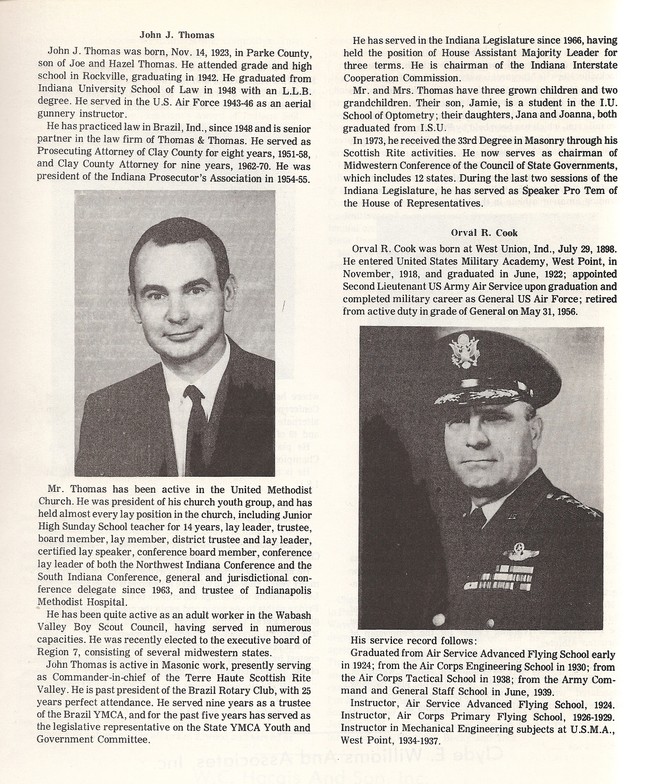
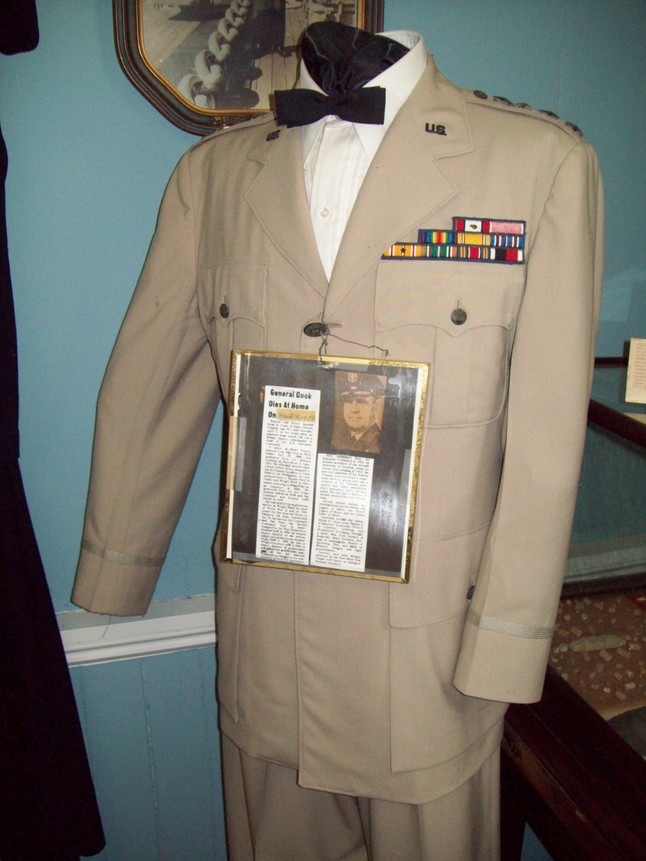
(Above) General Orval Cook's Uniform in the Parke County Museum
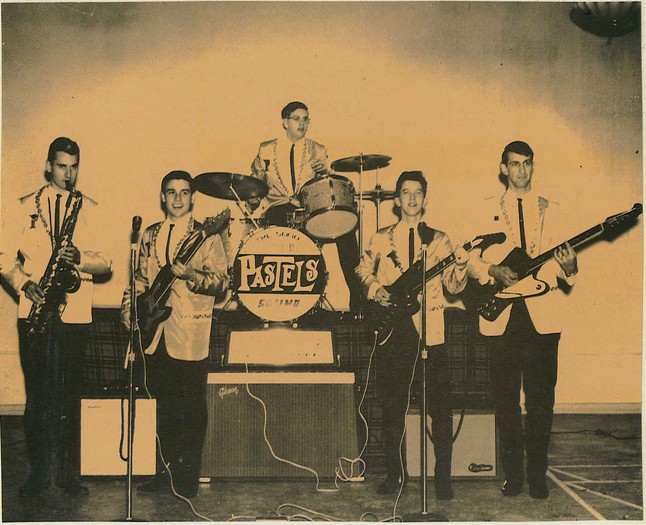
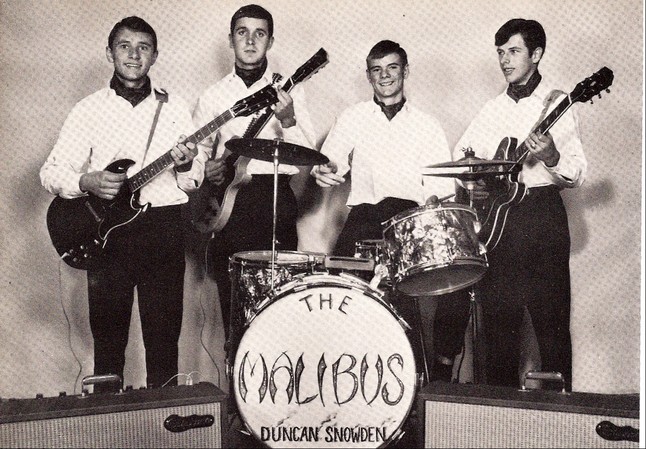
The Pastels (1964) and the Malubus (1966)
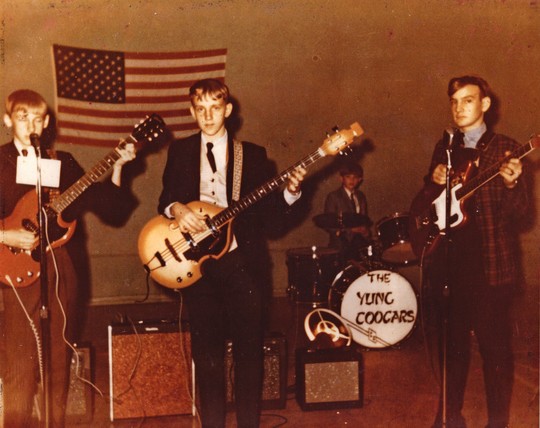
The Yung Coogars (1969)
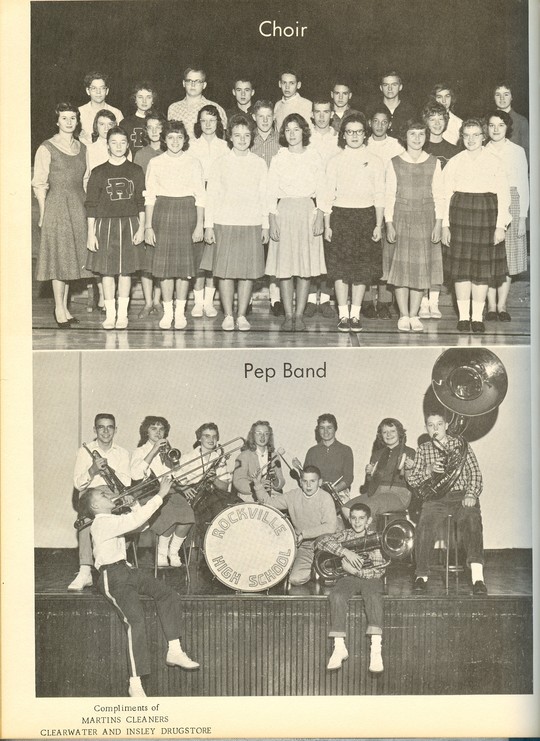
Choir and Pep Band in the early 1960's
.jpg)
.jpg)
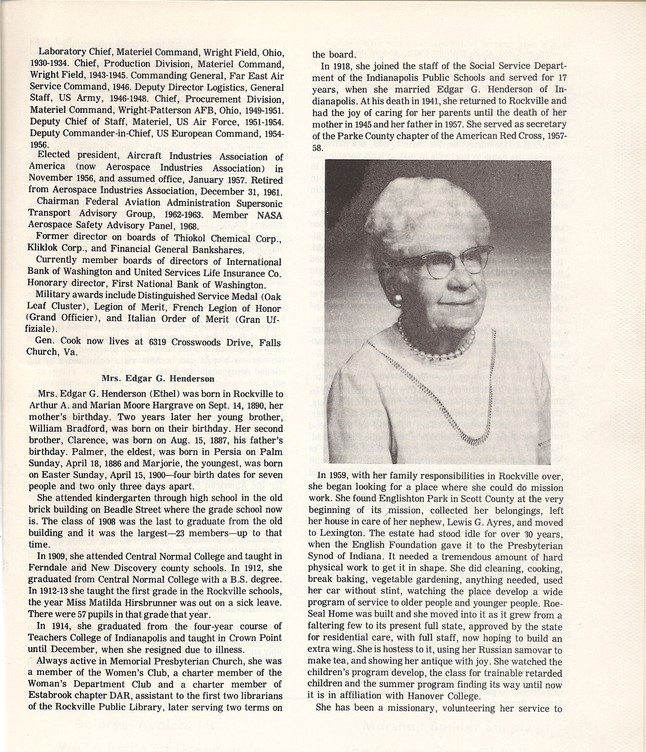
.jpg)
.jpg)
This was the home of General Tilghman Howard on Howard Ave. Note the high school property is behind this home.
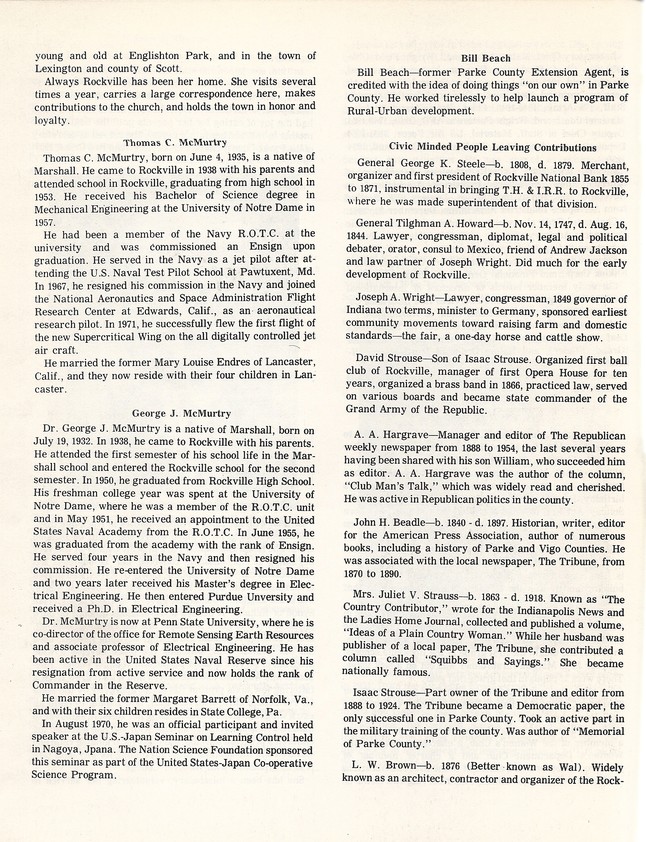
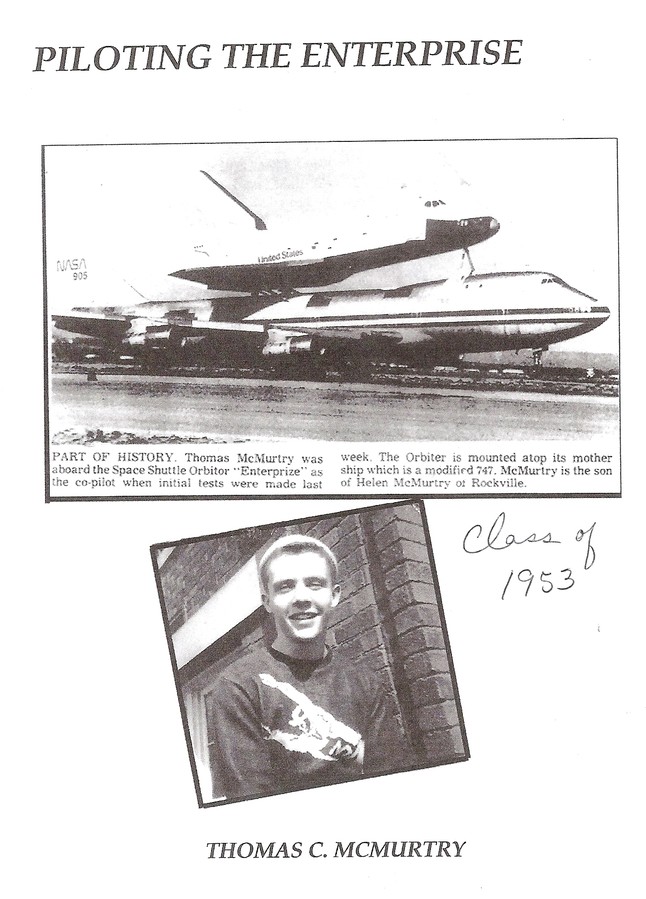
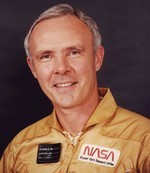
.jpg)
.jpg)
.jpg)
.jpg)
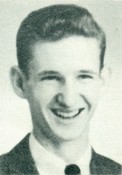
.jpg)
.jpg)
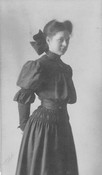
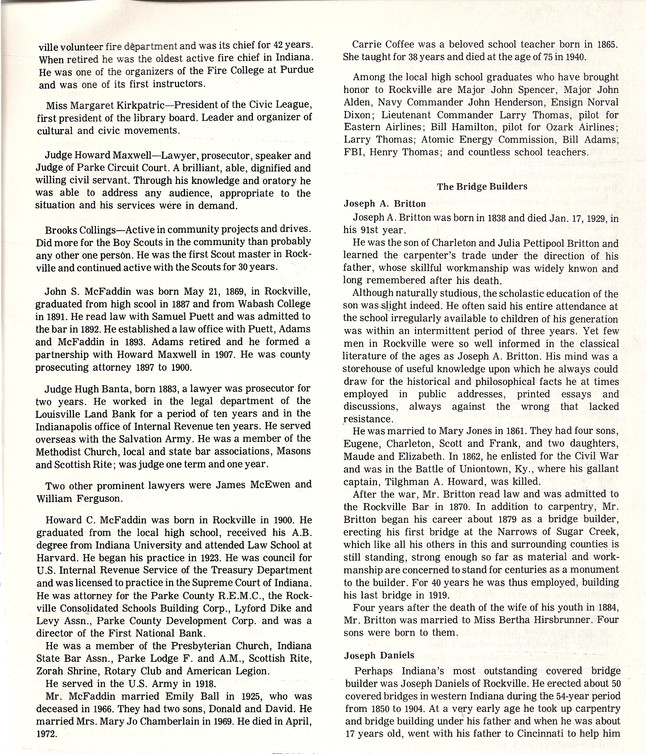
.jpg)
.jpg)
.jpg)
.jpg)
.jpg)
.jpg)
(Above) Lawyers pictures hanging in the Court Room, including Duncan Puett, J. Sebastian McFaddin Class of 1887, John McFaddin Class of 40, and Earl Dowd. Jr. Class of 39.
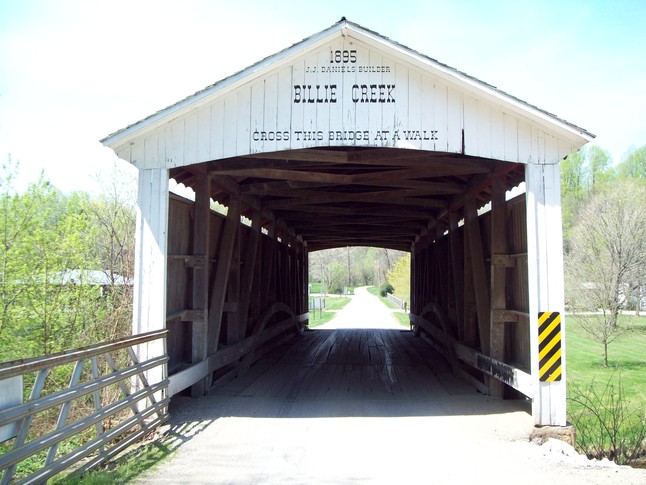
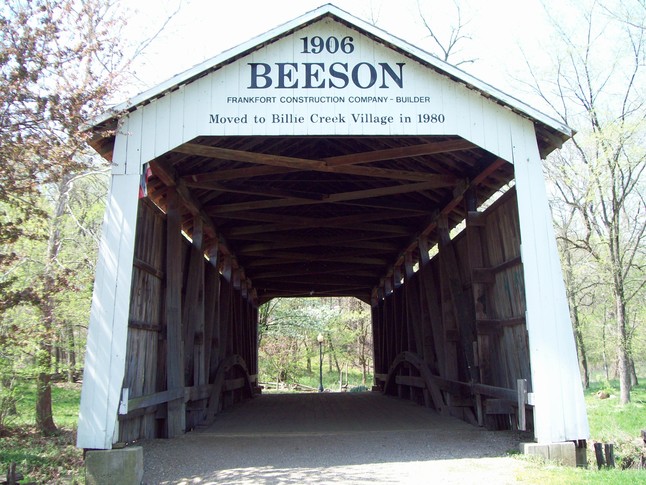
These two bridges built by Joseph Daniels (left) and Beeson (right) cross Williams Creek at Billie Creek Village.
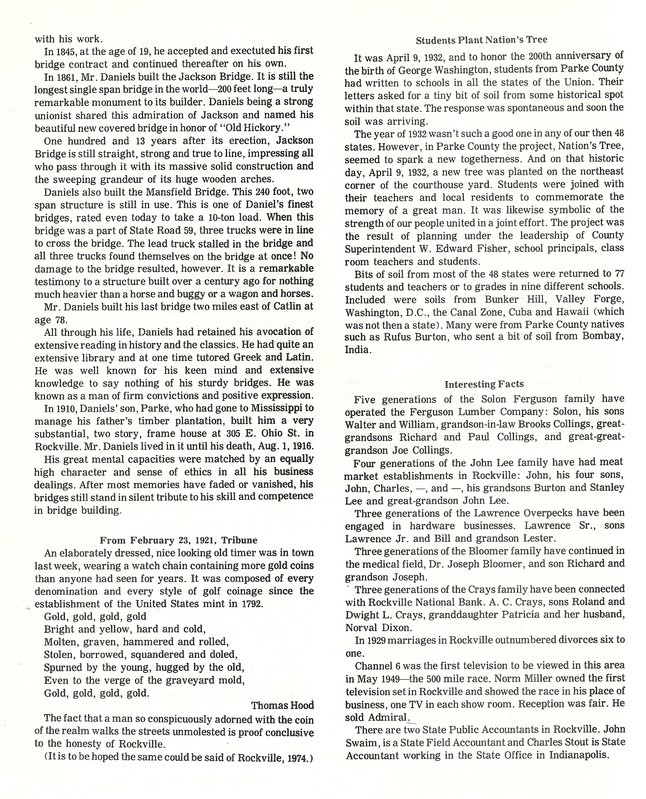
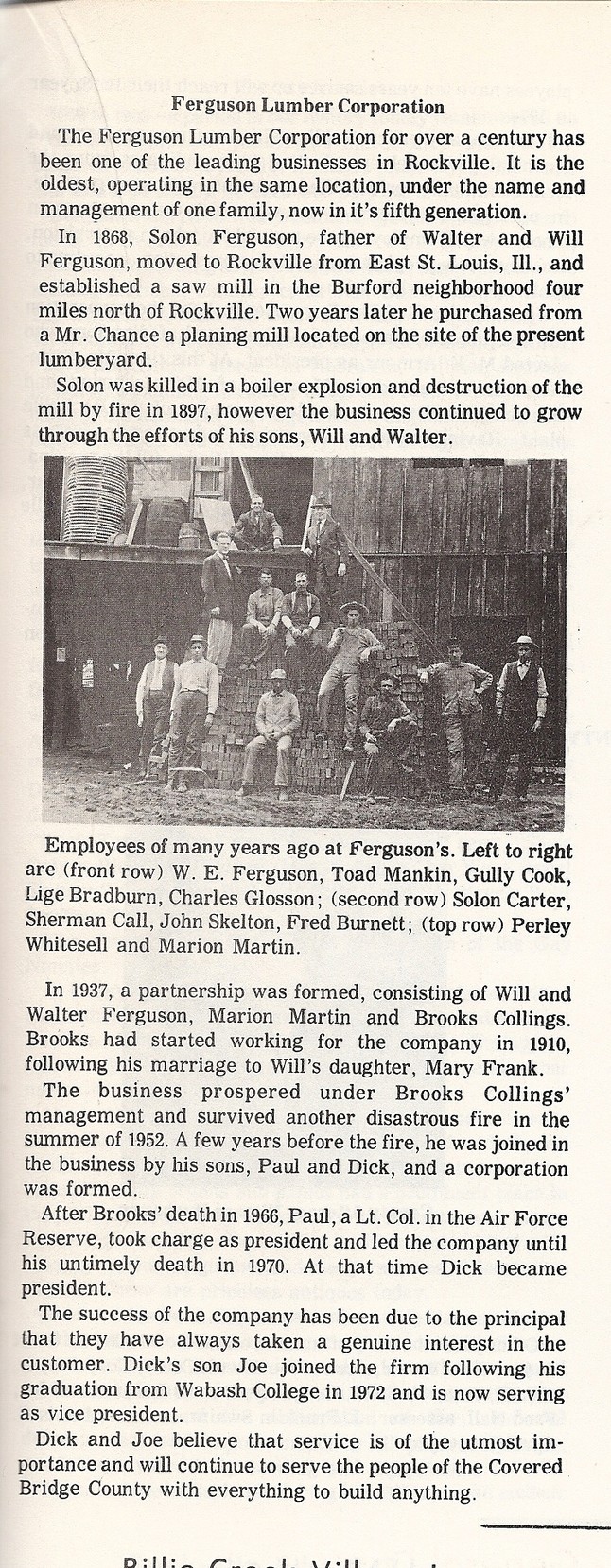
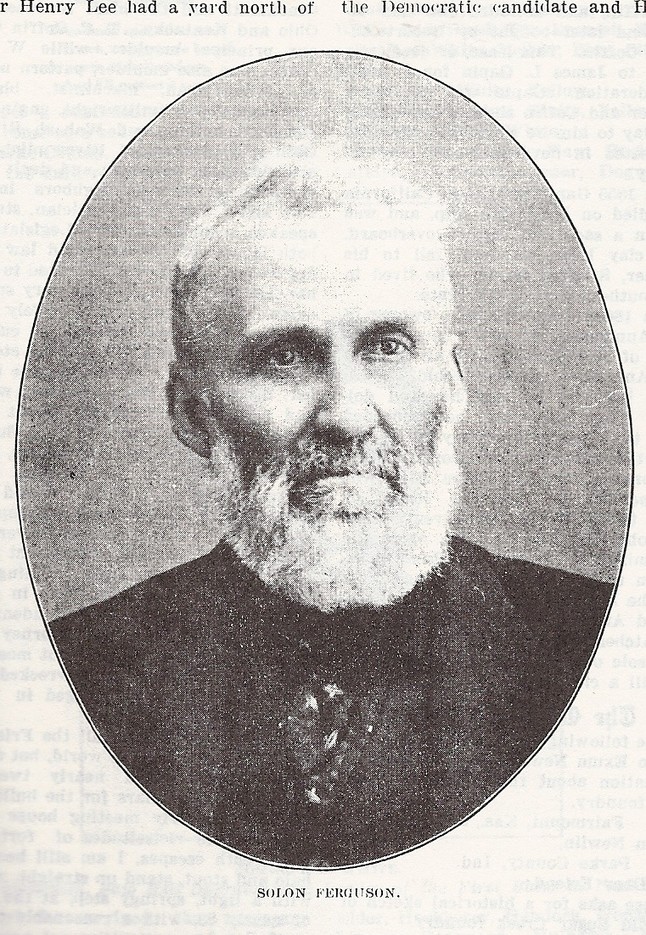
.jpg)
.jpg)
Mr. Solon Ferguson and an employee died when his boiler exploded in 1897. The resulting fire destroyed the mill. It was rebuilt by his two son's, Walter S. and Will E. Ferguson.
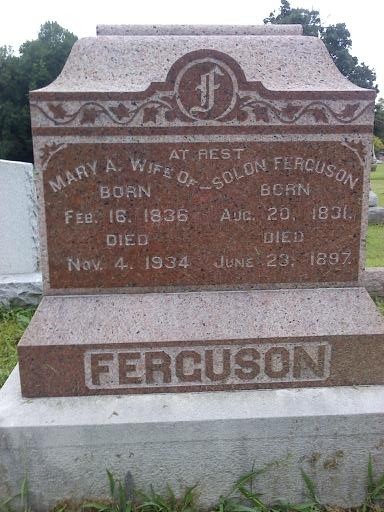
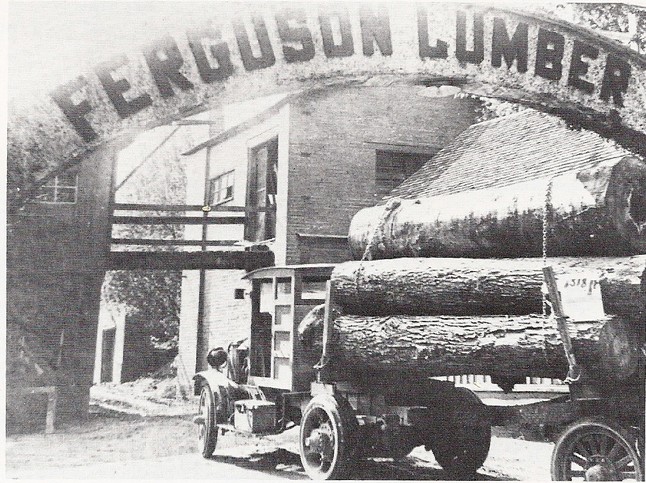
Solon and Mary A. are buried in the Old Rockville Cemetary. Solon and Mary A. Ferguson had six children, four children before they moved to Rockville in 1868 and had two more after they moved to Rockville.The four children born prior to moving to Rockville were Cora (born in 1857), Alice (born in 1859), Walter (born in 1860), and William (born in 1864). Belle was born in 1869 and Laura was born in 1874, and were both born in Rockville.
.jpg)
.jpg)
.jpg)
Will E. Ferguson, Class of 1882, and his wife, Sara Carver Ferguson
.jpg)
.jpg)
Brooks Collings, Class of 1909 and his wife, Mary Frank Ferguson
Collings, Class of 1911.
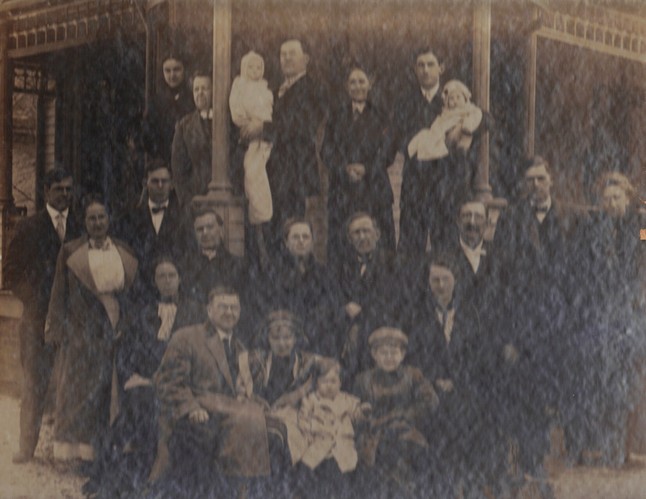
The Carver Family Photo
Row 1: Will Ferguson, Margaret Carver, Jimmy Wood, Bill Carver
Row 2: Ether Carver, Mary Frank Ferguson
Row 3: Cleo Wood, Oscar Carver, Sarah Ferguson, Clay Carver, Jim Carver
Row 4: Brooks Collings, Everett Carver, Edgar Carver
On Porch: Pebbie Carver, Annie Carver, Elizabeth Martin, Marion Martin,
Lydia Carver, Frank Wood, Arthur Wood.
COMMERCE
During the last ten or fifteen years Rockville, and, indeed, the whole of Parke county, has improved rapidly. The manufacturing and commercial interest of the former are now full of promise, while the agricultural prospects of the latter are a source of material comfort to the farmers. The railroad facilities of Rockville have done considerable to promote its commercial enterprise, and have been largely instrumental in placing it on a solid footing.
.jpg)
.jpg)
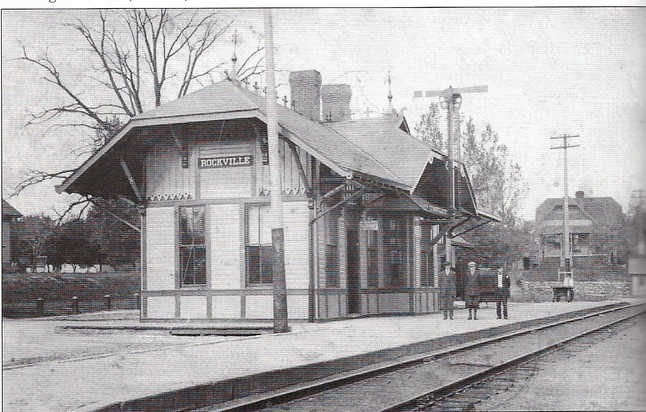
.jpg)
.jpg)
.jpg)
.jpg)
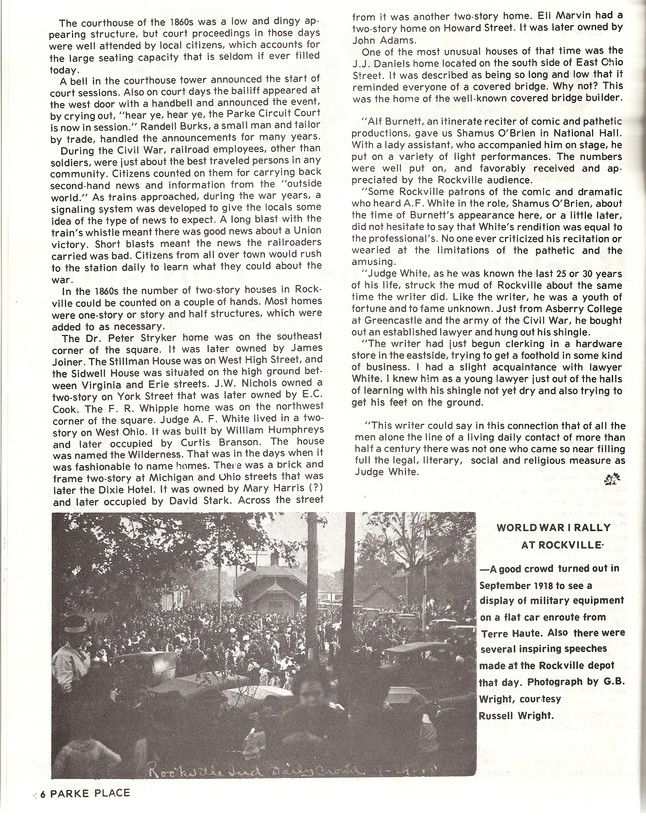
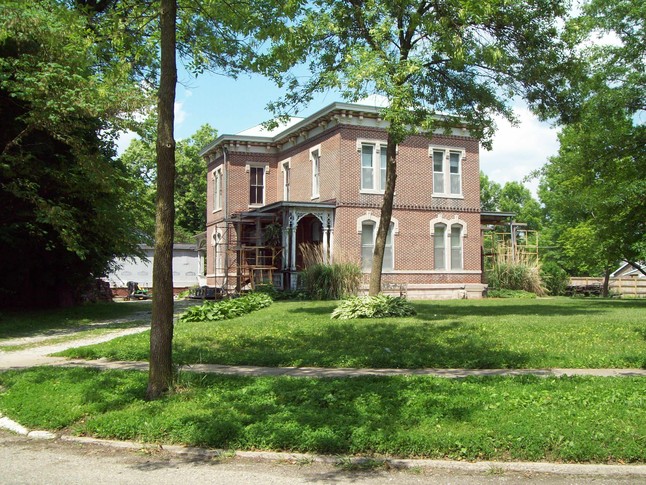
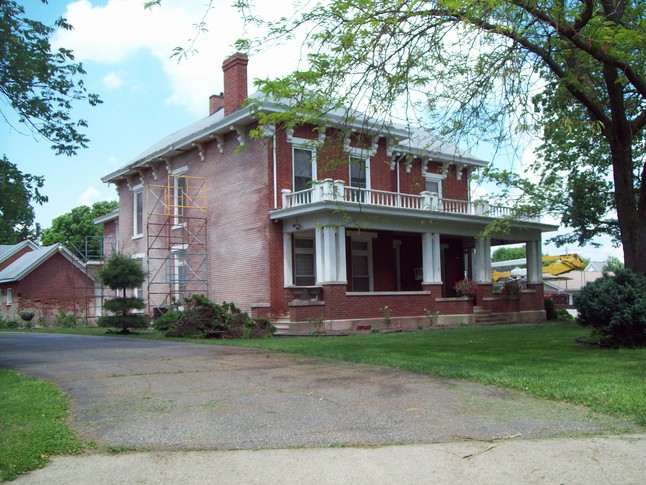
Home on Howard Ave.
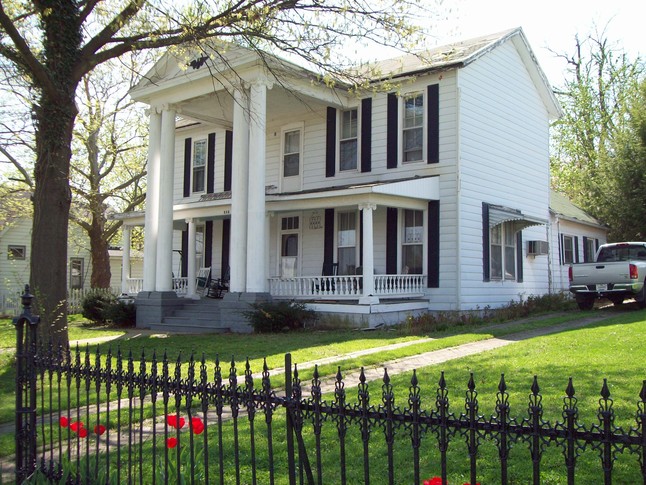
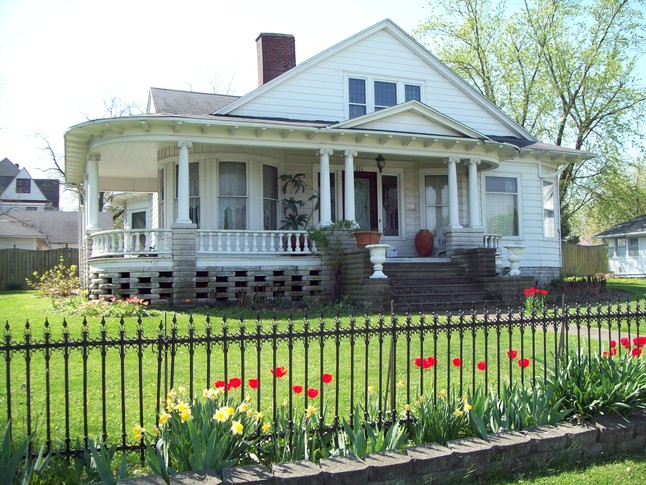
Homes on W. Ohio (U.S. 36)
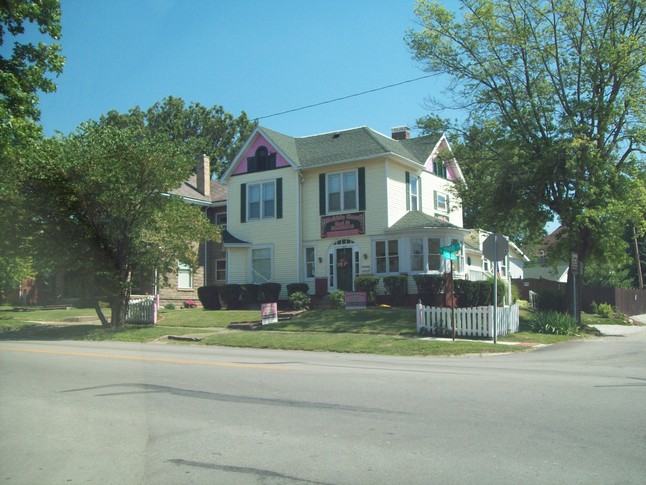
.jpg)
(Above left) Home on W. Ohio U.S. 36 & College
(Above right) Home on W. High St.
.jpg)
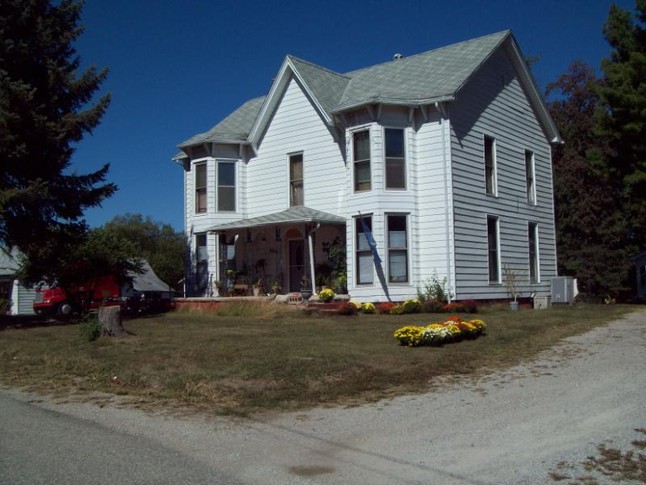
The Lee home then and now, on East Indiana Street. The Lee linage were meat cutters. John Lee's (RHS 58) Great grandparents lived here.
.jpg)
.jpg)
(Above Left) This home is on Howard Ave.
(Above Right) Home of Wm. Hargraves (1910), later his stepson Lewis (1936) & Ruth (1936) Welch Ayers, and their children Tom (1967) and Bill (1963) and Emily (1979) at York and Shadeland.
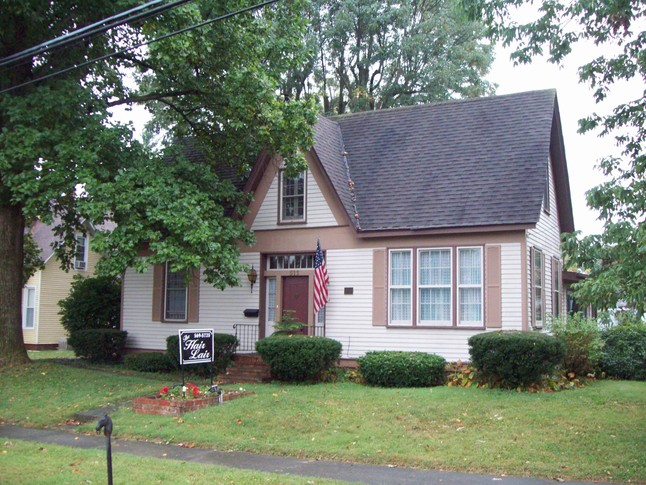
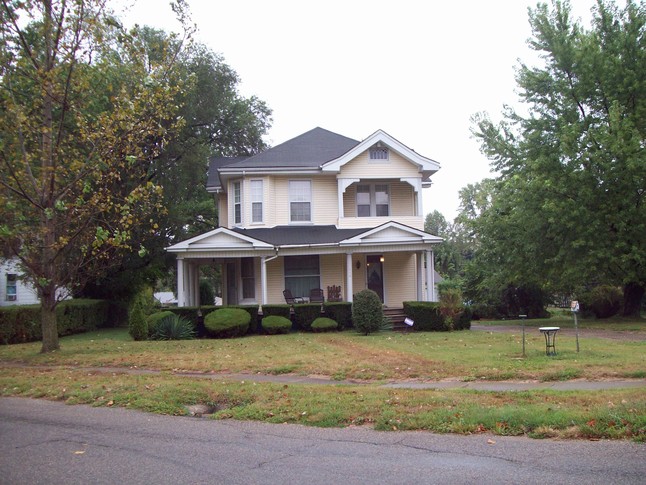
These two homes above sit on Howard Ave.
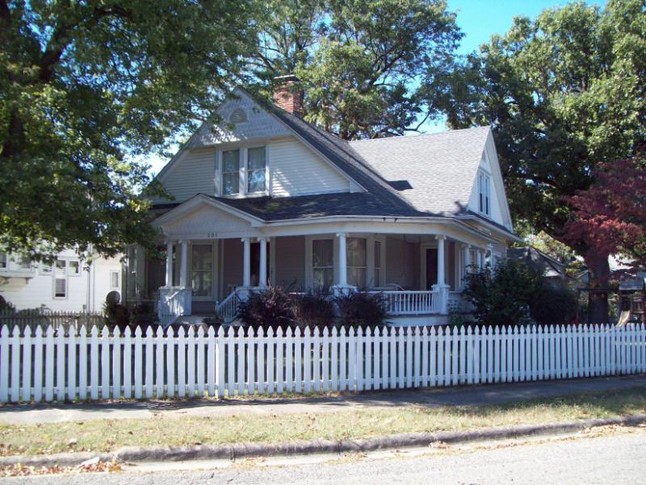
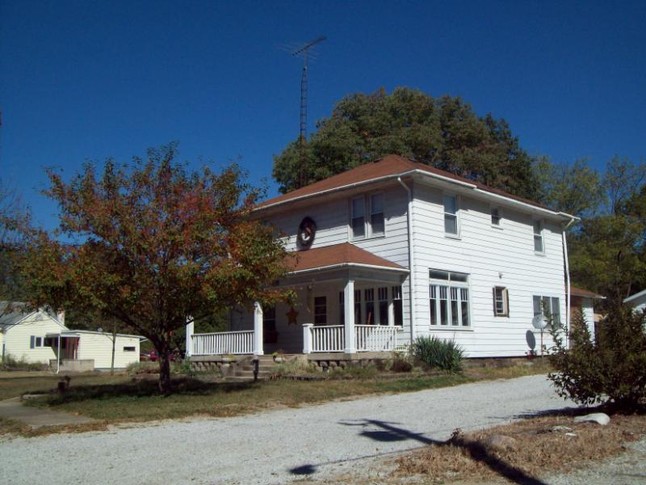
These two homes above sit on Market Street
.jpg)
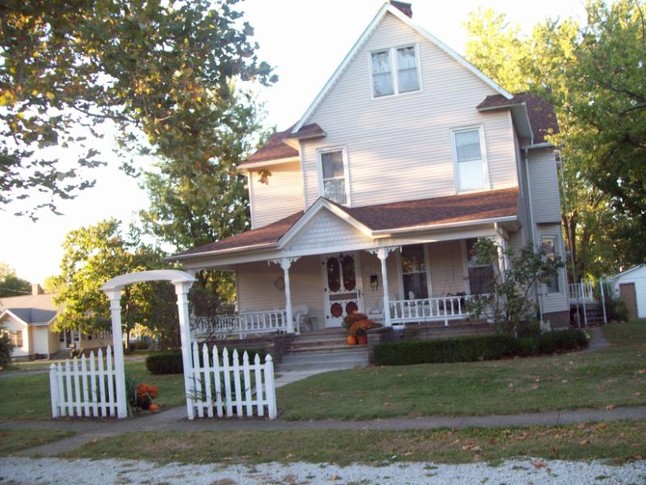
The Wirt home above on W. High then and now
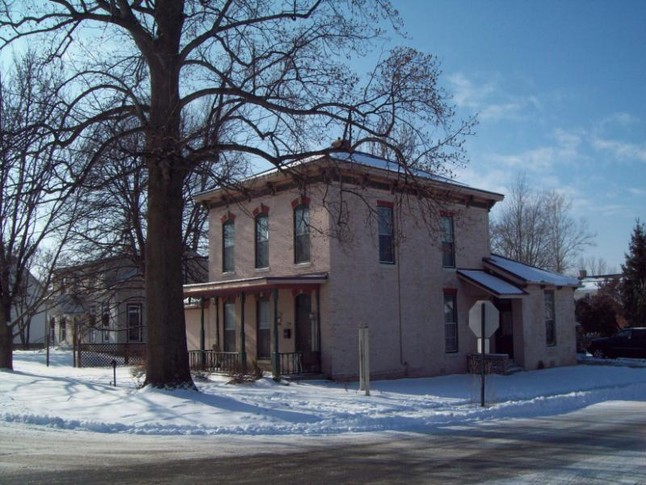
(Left) Home at Jefferson and Howard Street.
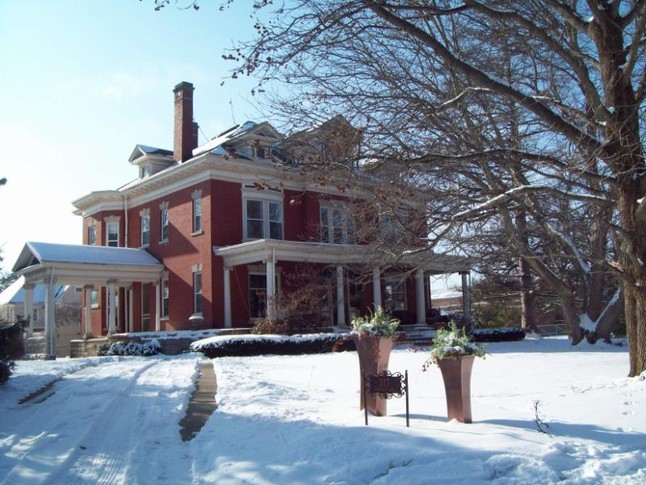
.jpg)
Home at Howard Ave. and Beadle St. across from the gradeschool. This was the home of Parke State Bank President John and Marge Hays after they retired from the bank. It is presently the home of DDS.Mary Ruth Welch Staadt, Class of 1975.
.jpg)
Rockville's first graduation, May 15, 1876 had three graduates.
.jpg)
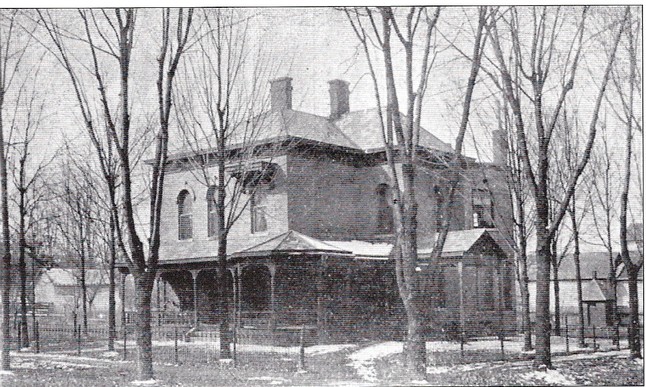
The home of Duncan Puett stood on the southwest corner of Ohio and College Ave.
.jpg)
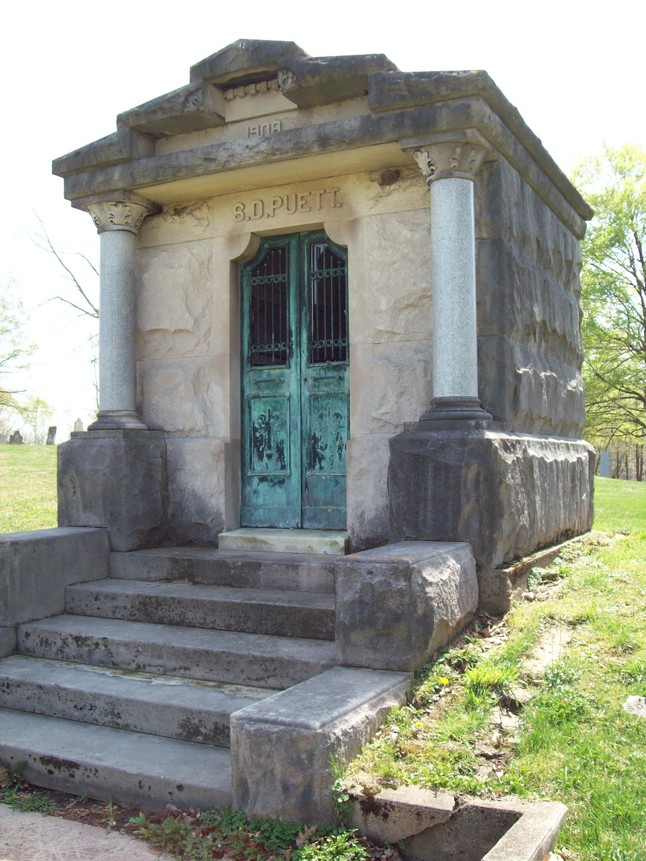
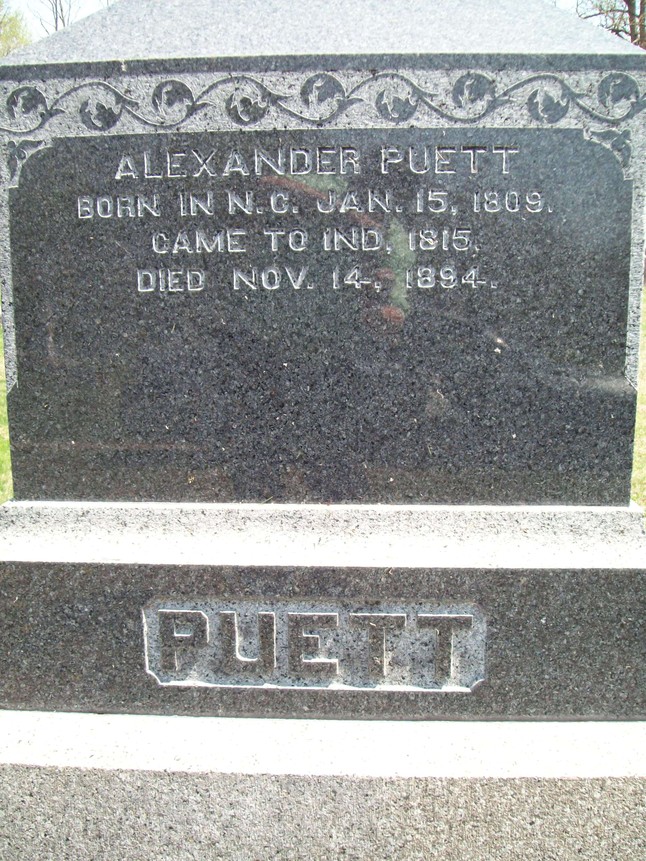
(Left) The final resting place of Madge Ott Puett and Duncan Puett in the Old cemetery on East High Street.The "Old" cemetery is literally a "Who's Who" of Rockville History.
(Right) The headstone marks the final resting place of Alexander Puett who in the early 1800's donated the 5 acres for the Old Cemetery on East High where he is buried. The city added two more acres. Alexander Puett also owned land west of town north of 36 and west of 41 most likely on which was located a horse track and the county fairs. The county fair later moved to the court house square until the middle 50's when land was leased from the County Home a mile north of town on US 41.
.jpg)
.jpg)
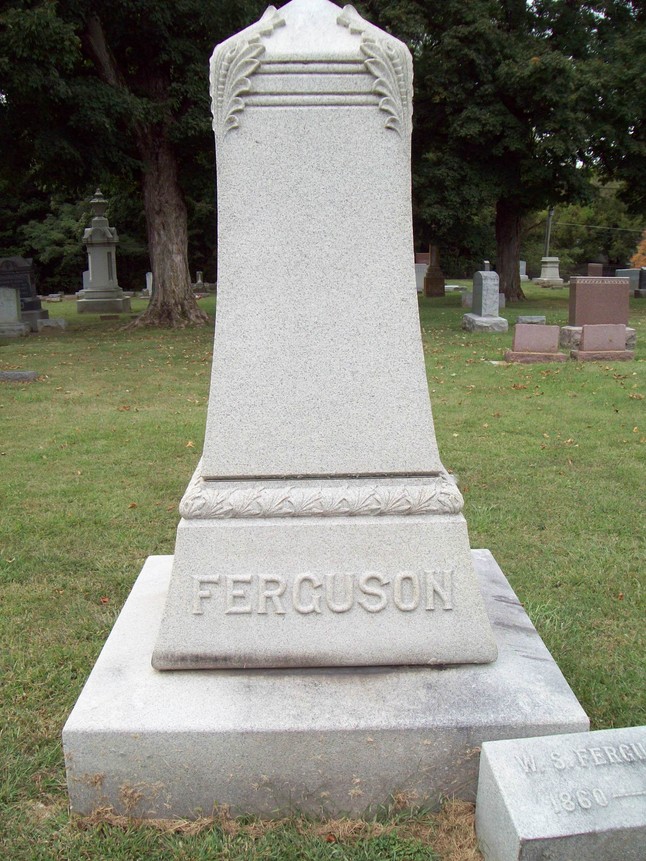
.jpg)
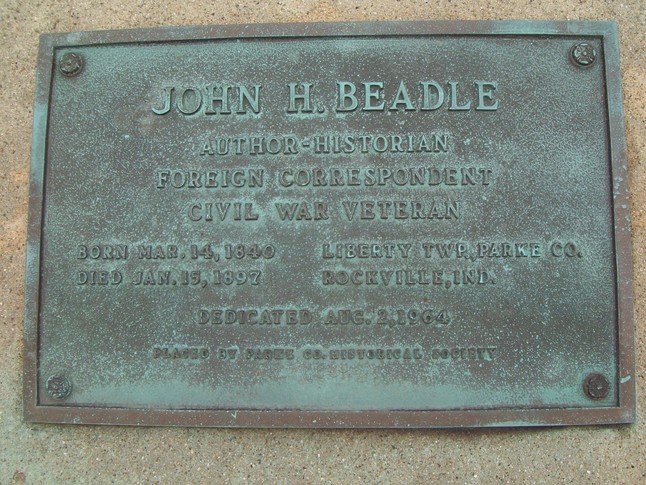
.jpg)
.jpg)
.jpg)
.jpg)
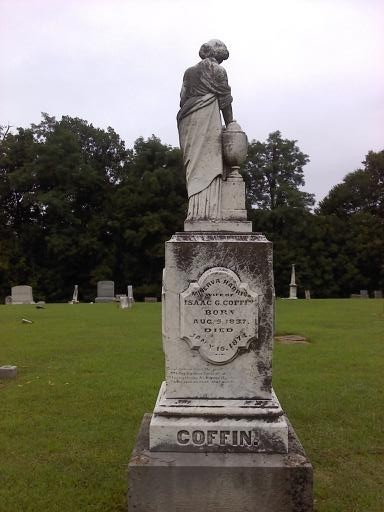
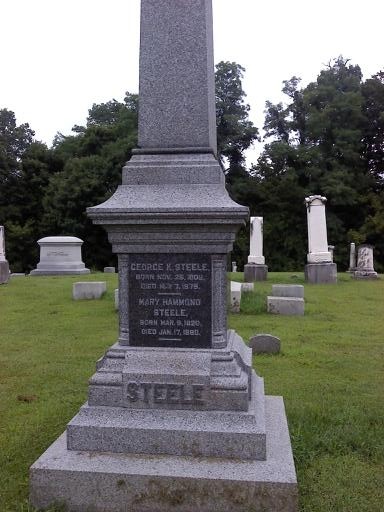
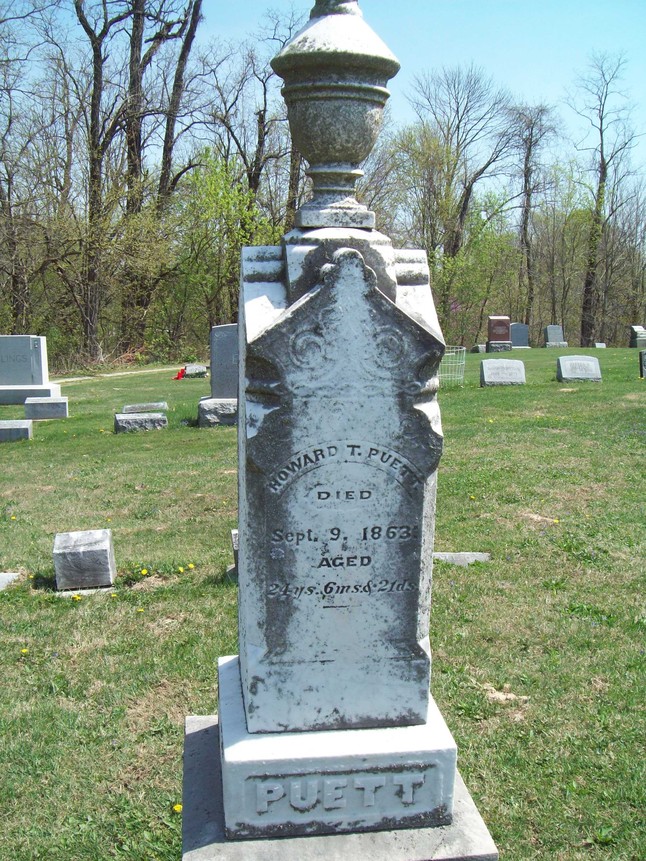
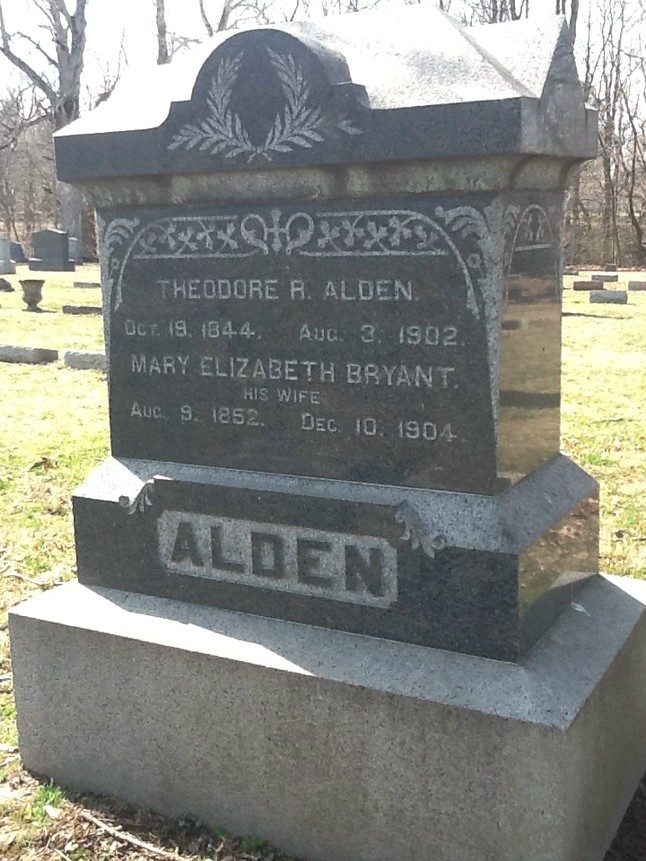
(Below) Memory Garden cemetery opened on north U.S. 41 in 1937
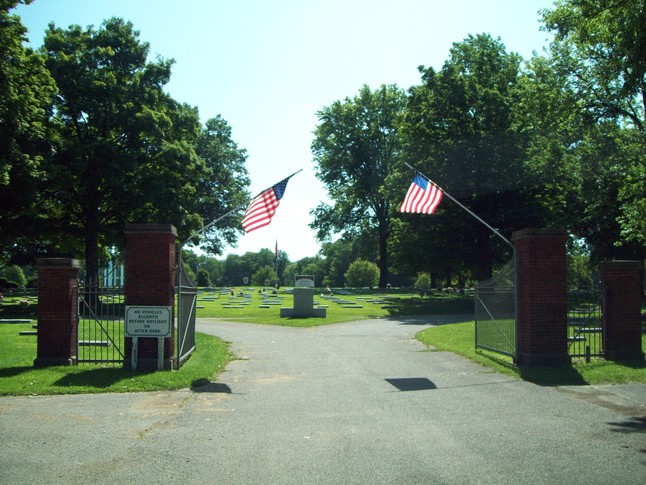
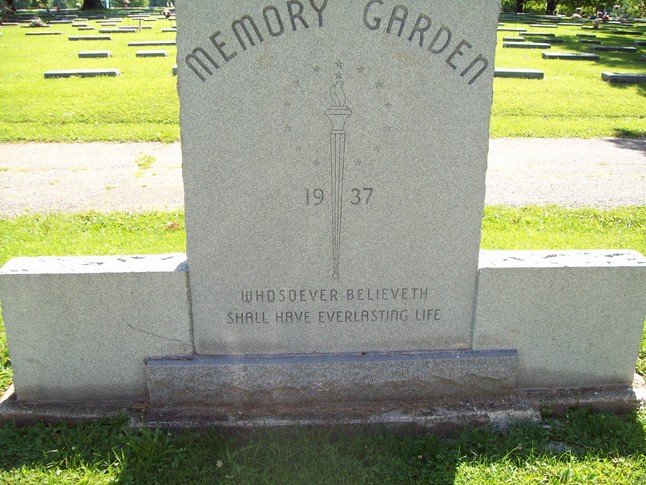
(Below) Beacon Hill cemetery opened south of town on U.S. 41 in the 2000's.
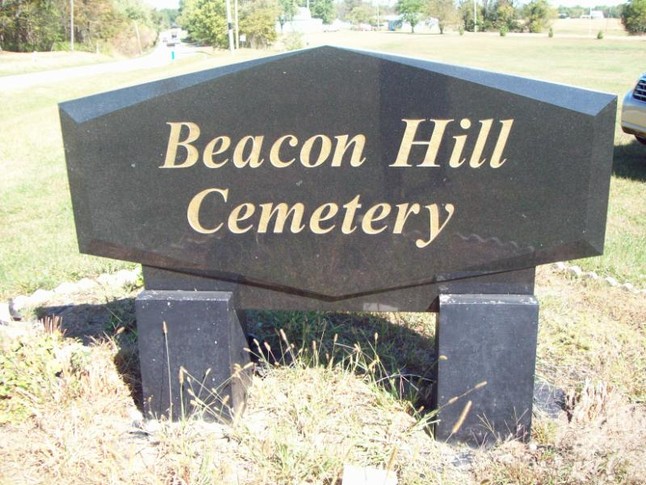
STATE FINAL GAME, ALMOST STATE CHAMPIONS
.jpg)
The educational facilities of Rockville are second to no other town of equal population in the State. A new public school house was begun in the fall of 1872, and finished in January , 1874, at a cost, including grounds, of $36,000 at Elm and Beadle (Shadeland) where the Grade School and Gym now stands.
.jpg)
.jpg)
It is a fine three story brick, containing ten rooms, besides the large, or lecture room, and is arranged to accommodate five hundred pupils. Rockville is a pleasant place to reside. The people are intelligent, sociable, and sensible; and the same remark holds good wherever you go in Parke county. (See Grade School History section).
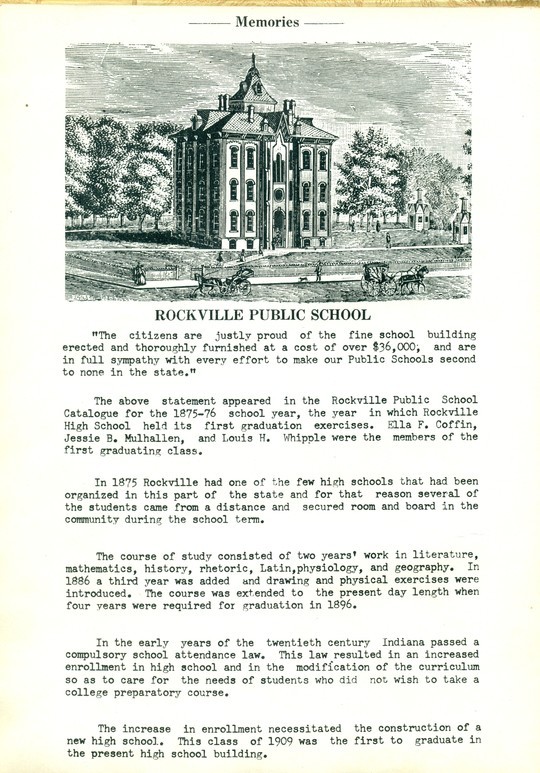
A new attendance law of the early 1900's necessitated a new, larger building just for high school students..jpg)
.jpg)
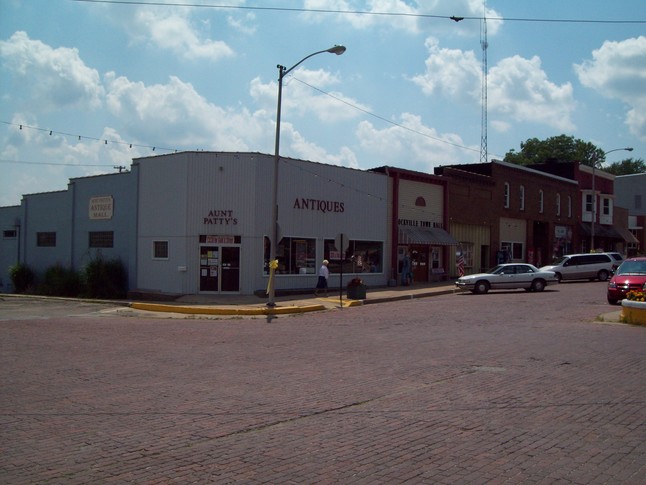
.jpg)
Coleman's garage was located in the building with the upper bowed windows. Aldens was just to the left.
Guy and Sidwell Alden owned a Buick agency across from the Ritz. Guy Alden and his wife Mary Smith Alden (RHS 1906) and his brother, Sidwell Alden along with Frank Adams also owned the Ford Dealership since 1914. Frank Adams eventually sold his interest to Joe Hoopengarner. Guy's son, John Alden Sr. RHS 1932, purchased the dealership in 1939 at the age of 25 and ran it until 1987 when he retired at the age of 73. The dealership was located on the south side of the square until 1969 when it relocated on US 41 between the Avalon Tavern and old Coca Cola Bottling Plant in 1969. In 1987, John Alden RHS 32 sold the dealership to a 2nd cousin , John Alden Ewbank, grandson of Sidwell Alden.
.jpg)
.jpg)
.jpg)
Above, the building that housed Alden Ford Sales on the south side square as it appears on April 1, 2010. Alden Ford moved out on US 41 between the Avalon Tavern and the old Coca Cola Plant. The blue building now houses the NAPA Auto Parts.
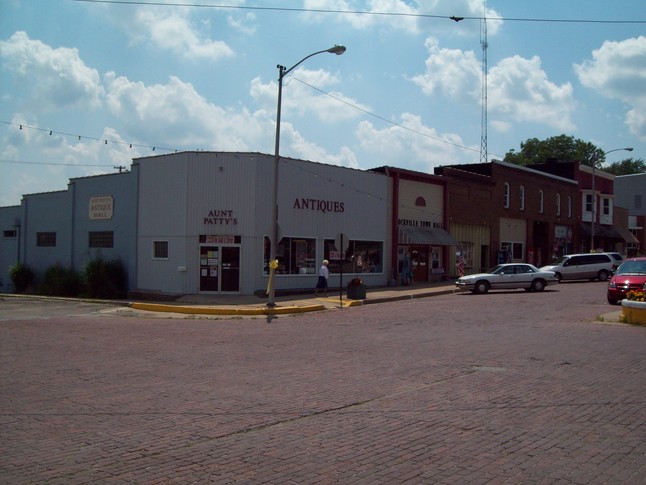
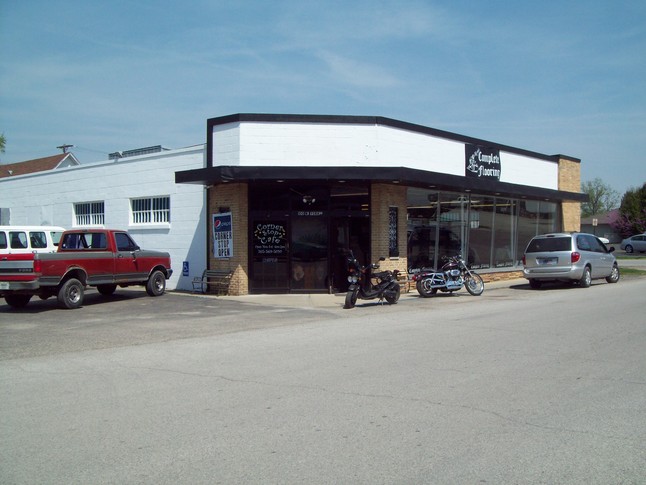
(Left) Harold Richey (died 2009), Maurice Tuttle and Frank Camp (died 2010) started the RTC NAPA Auto Parts in the early 60's next to the Presbyterian Church, moving it soon after to the southeast corner of the square replacing Thompson's grocery store and Jefferies welding shop. The welding shop relocated east behind the Dormeyer Plant on the east side of town.
(Right) The old Grab-It-Here Grocery Store Building at York and Jefferson.A livery stable previously stood in the parking lot and was later the Baker Pottery Shop.
(Below) A Kroger Grocery Store, Lee's Grocery, the Parke State Bank, Dowd and Hanner Law firm, Cut Price Clothing and the Pastime Restaurant, Daughtery Furniture, Overpecks Hardware, John Upp's Photo Studio, A & M Cleaners, Fielding Grocery and the jail once occupied on the east side of the square.
.jpg)
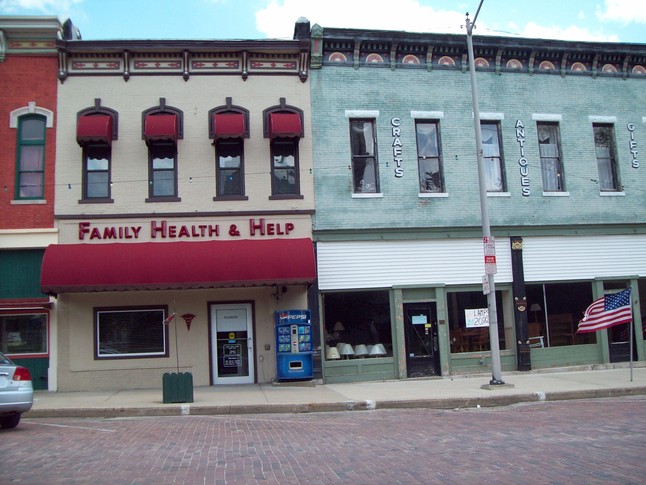
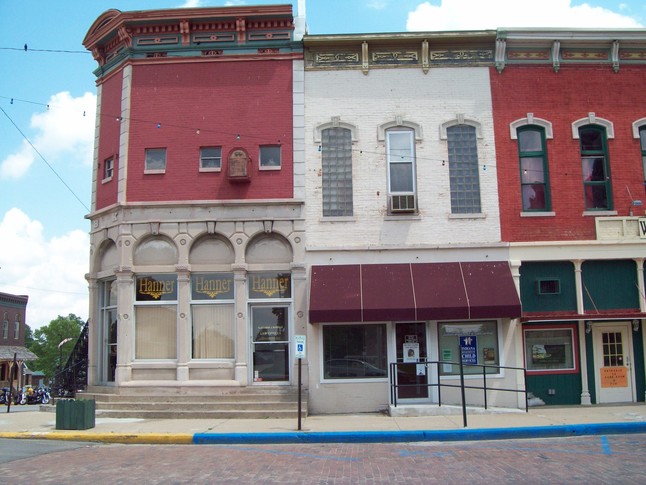
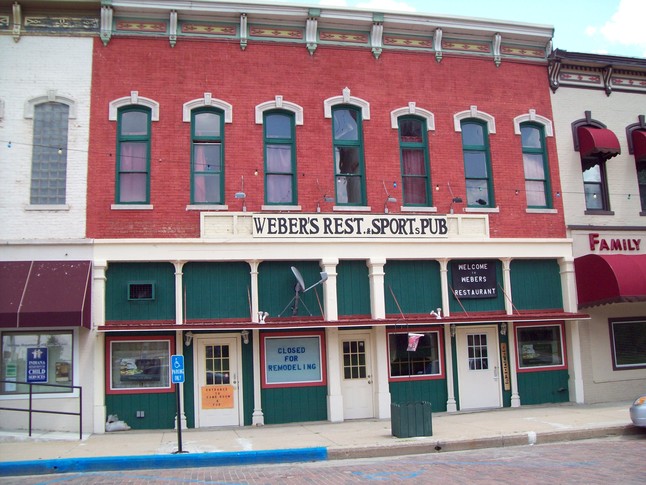
.jpg)
Al Gallo built an IGA in the 1960's way out north on U.S. 41 across the street from the Drive-In Theater. The building now houses the Ace Hardware Store.
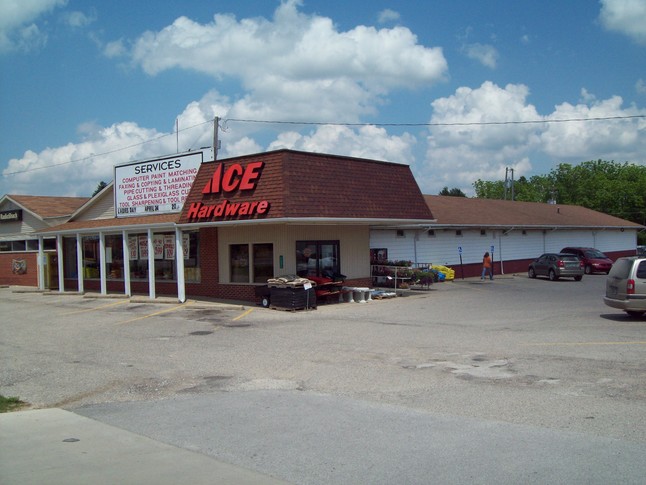
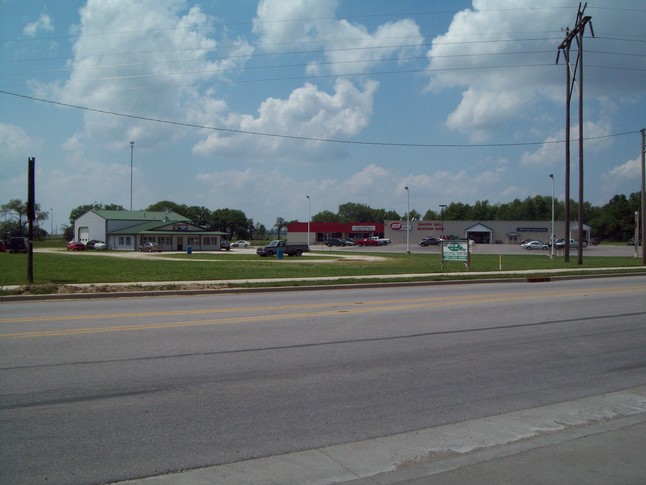
(Above Right) The present IGA and a car wash were built on the grounds of the old Rockville Drive-In Theater. The Drive-in Theater opened in the late 1940's.
Max and Wanda Hartman opened the Dog "N" Suds on U.S. 41 in the early 1960's where Casey's now operates. Owen Loney RHS 1962 was part of the first crew hired.
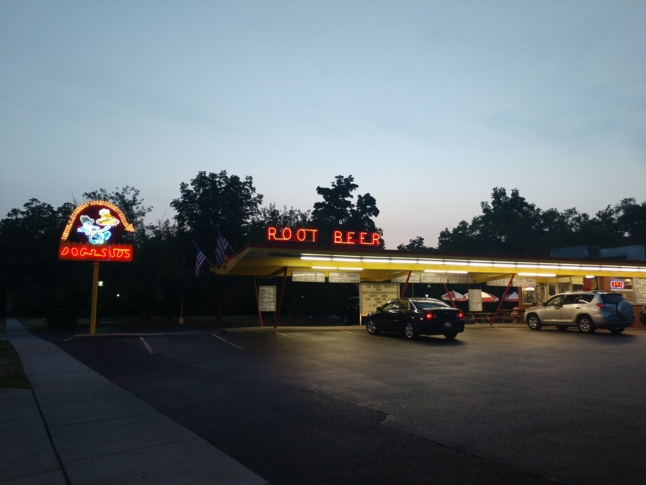
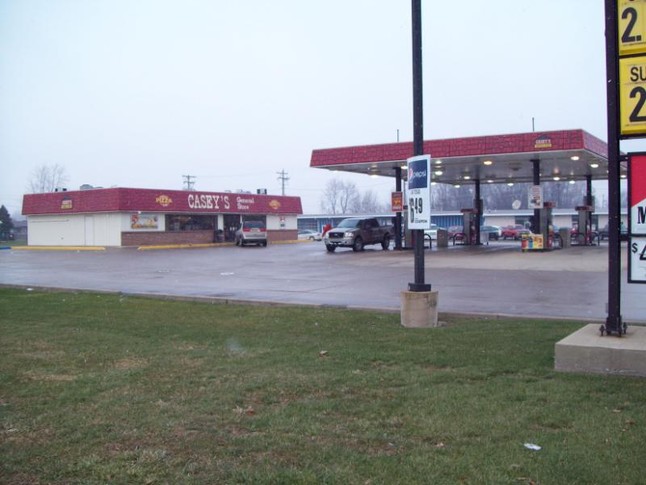
(1).jpg)
Neighborhood grocery stores in the 50's and 60's included Batman's (below left) on N. Virginia and DeVota Bonomo's on N. College Avenue from 1958 thru 1970.
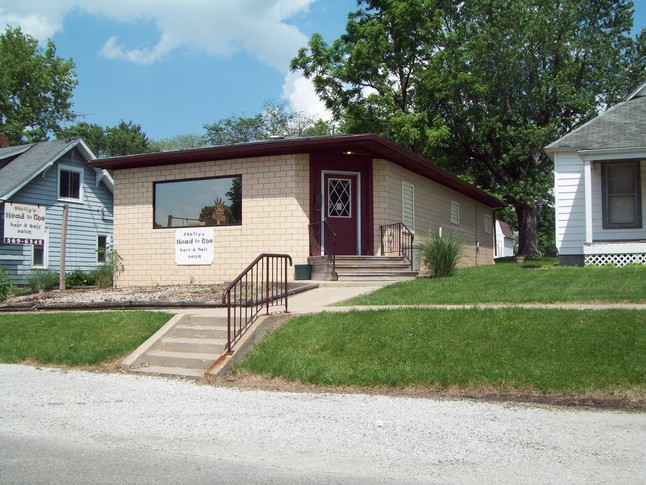
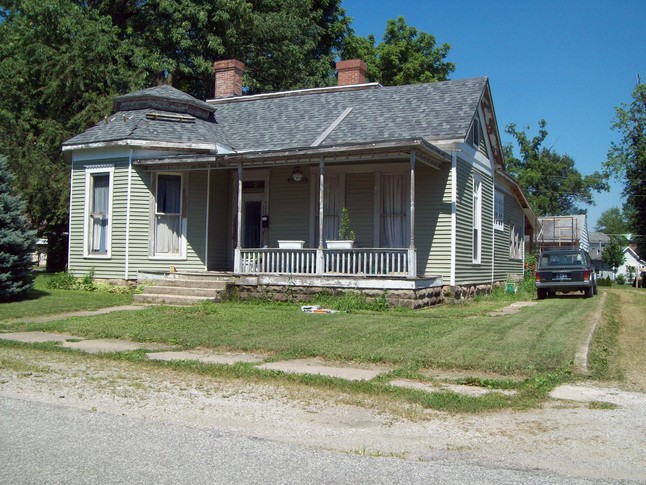
.jpg)
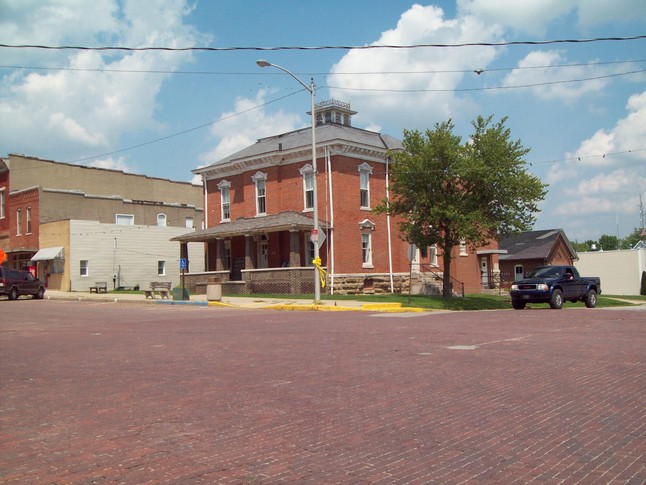
The 1st jail was a "log" jail structure on the northwest corner of High and Virginia across from the Rockville House.
(Left) The 2nd jail was built in 1832 right across the street on the northeast corner of High and Virginia. It later became the Rockville Boarding House when the 3rd jail was built in conjuction with the new court house of 1882. (Right) The 3rd jail (above) was built at Jefferson and High on the Southeast corner of the square.
(Below) The 4th jail complex was built northwest of town on Strawberry Road.
.jpg)
(1).jpg)
ROCKVILLE SCHOOL FIGHT SONG--- 1935
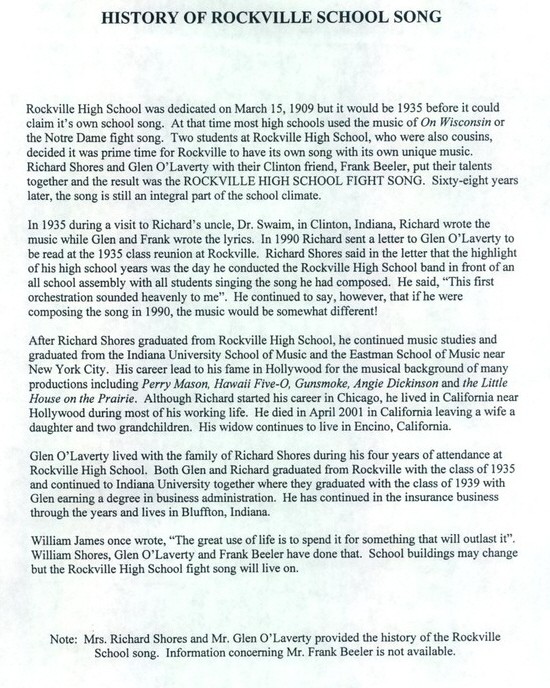
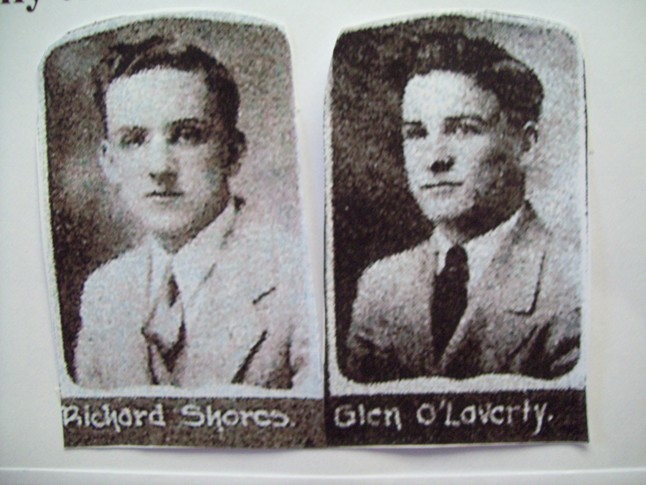

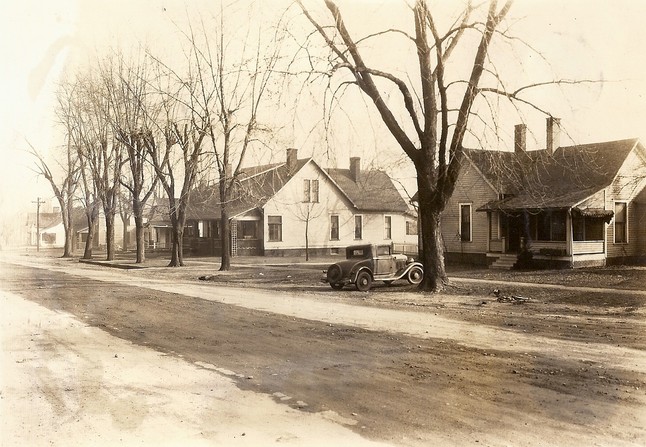
Barnes Funeral Home on East High Street
.jpg)
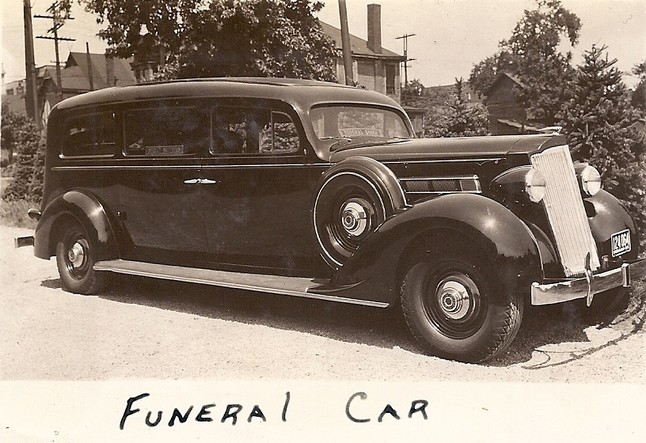
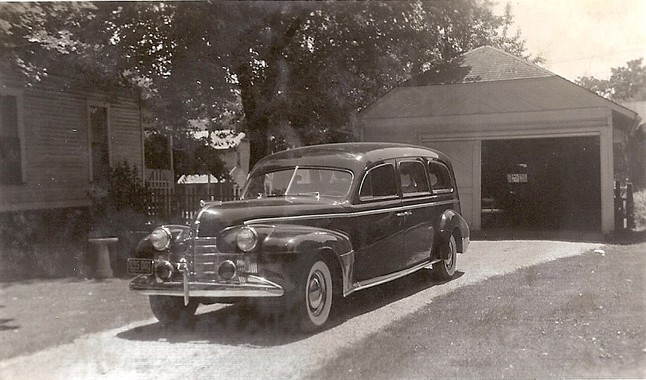
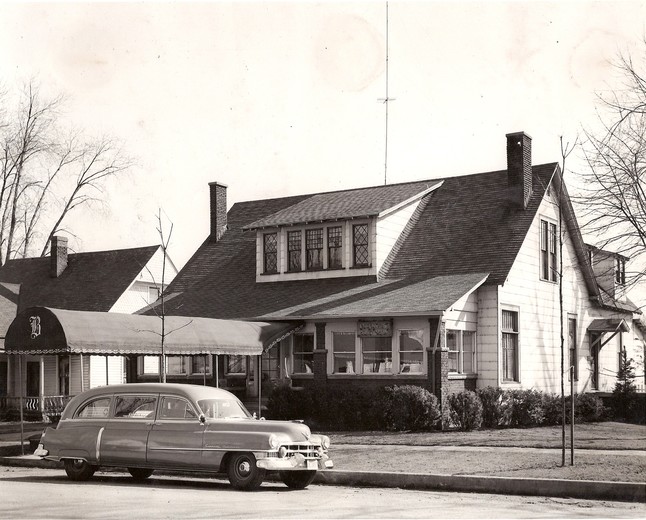
.jpg)
THE BARNES FUNERAL HOME AND AMBULANCES OVER THE YEARS
.jpg)
.jpg)
(LEFT) BUTLER FUNERAL HOME ON COLLEGE AVE. (RIGHT) GOOCH FUNERAL HOME ON HOWARD ST.
SKELTON'S FUNERAL HOME ONCE STOOD WHERE THE POST OFFICE NOW STANDS AND LATER MOVED TO JEFFERSON AND HIGH ON THE SOUTHEAST CORNER OF THE SQUARE.
.jpg)
BIRTH OF THE ROCKVILLE YOUTH CENTER/COMMUNITY CENTER
.jpg)
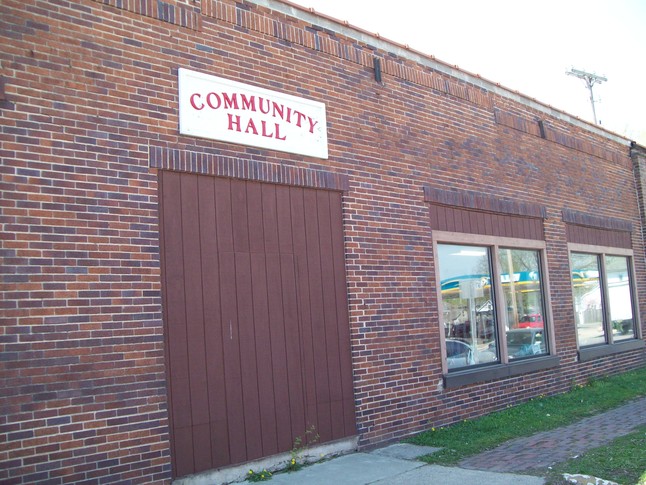
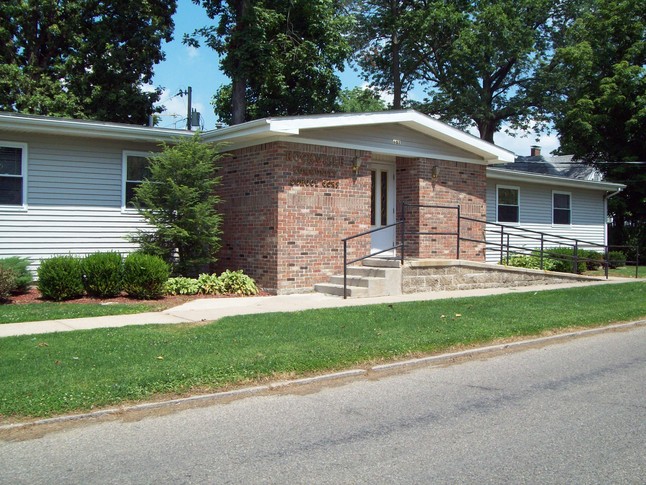
(Left)The Rockville Youth Center on Ohio Street (U.S. 36) established in 1945 once housed a Buick car dealership owned by brothers Guy and Sidwell Alden. The west end of this building once housed The Tourist Center and presently the Don Lash Real Estate Office. There was once a livery stable on this property.
(Right)
The School Administration Location purchased in 1965 on Howard Ave.
.jpg)
The Rockville Gym was built about 1949 on the site of the 1876 school building inside the 1941 Grade School on Elm Street.
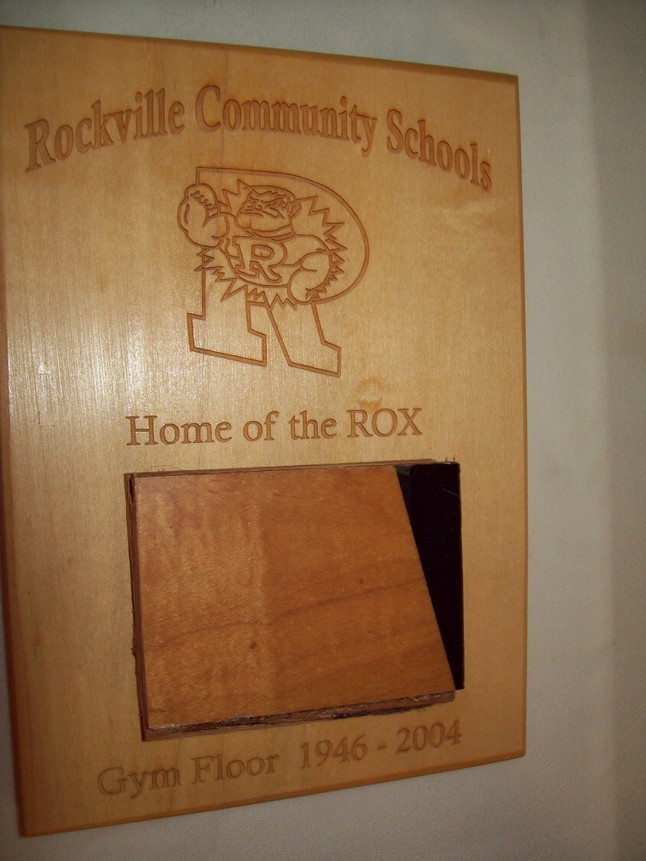
The original gym floor was replaced in 2004
.jpg)
.jpg)
In 1957, 20 acres were purchased on Beadle Street north of Howard Avenue under the guidance of Superintendent Russell Garrigus. The seven room Jr. High wing was constructed in 1958. (shown here to the right side of the doors). The New Consolidated Rockville High School building was added on to the west and opened in the fall of 1962. (shown here on the left side of the door). The football field and baseball diamond were relocated behind the the new 1958 Junior High building on Beadle Street from their old location at Beechwood Park on the southwest side of town. The old ball diamond is now the location of the swimming pool. The Class of 1966 was the first class to attend all 6 years in the new Jr. High and High School building.
.jpg)
.jpg)
The main entrance to Rockville High School. The High School is located on the old Gen. Tilghman Howard property.

Carol Lindsey
Olympian
Class of 1973
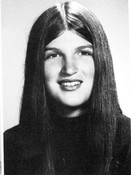
.jpg)
.jpg)
1963 WABASH VALLEY CHAMPIONS
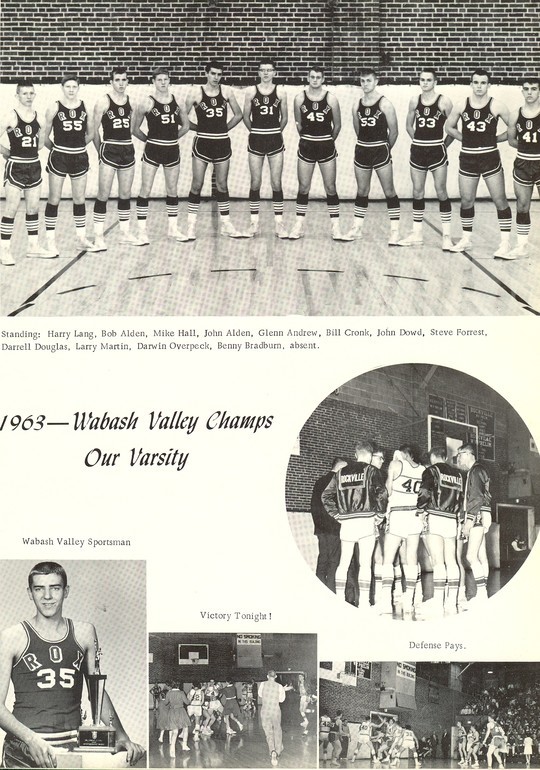
(Above) Glenn Andrew 1963 receives The Wabash Valley Sportsmanship Award. He later played at Indiana State University.
1968 Wabash Valley Finalist & Bi-County Champs
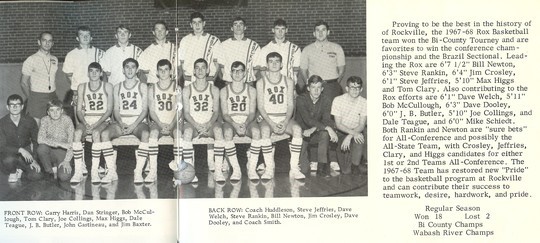
The first church organized in Rockville was by the Baptists. They held their first meeting in the old county court house.
The first Predestinarian Baptist Church in Parke County was organized at Rockville in 1825. Meetings were held at the homes of members and at the log courthouse until 1834, when a brick house was built on lot 44 of the Original Plat of the town on north Erie Street at York Street. This was the only church that this denomination built in Parke County. Early members were Samuel and Matthew Noel, Austin Puett, Mrs. John G. Davis, and Mrs. Patsy (Noel) Puett. The church later united with the Eel River Association. The society proceeded quietly with its activities until doctrinal controversies arose causing a division of the membership. The majority held meetings just north of Rockville and the minority soon ceased holding services, and the house on lot 44 on north Erie Street was torn down.
Early Parke County Sheriffs
The first Parke County official "appointed" by the Governor in January 1821 when the county was organized was the sheriff -- Andrew Brooks. He held office 7 months until August when Henry Anderson was "elected" the 1st Sheriff of the County (according to the Parke Co IN Atlas. Chicago: Andreas, 1874). Up to 1840, the sheriff was the Assessor and Collector of the taxes of the county, as well.
Written by: Randy Wright -- "A Brief History of Parke Co. Indiana Sheriffs, 1821-1997" (Randy said he got the information from several old newspaper articles).
Captain Andrew Brooks was Parke County's first sheriff. He was appointed sheriff of Parke and Vermillion Counties on Jan 9, 1821, to serve until an election could be held. On the first Monday in August, 1821, Henry Anderson was elected sheriff. He served four years. Including Capt. Brooks, there have been at least 46 men serve as Sheriff. This includes those who were elected or appointed. The first sheriff who died in office was John Davis. He was commissioned on March 12, 1833. He served one month and ten days. Austin Puett then served from April 22, 1833 until August 18, 1833 when William Kilgore was commissioned. Sheriff Kilgore served two terms. The term of office changed from two years to four year since 1950. Earl Dowd, Jr. was the first sheriff to be elected to the new four year term, in 1950. He served two terms, and later was elected Prosecutor and then Circuit Court Judge in Parke Co. Some of the closest elections for Sheriff include those of Jacob P. Smith (Dem) who won in 1926 by 16 votes. Also, Fred Botts (Rep) who gained office by 122 votes in 1948. William D. Mull was the first sheriff killed in the line of duty. The Sheriff and deputy died in front of the National Bank Building on the Square in Rockville, April 25, 1896. He and Deputy William Sweem were shotgunned by Alfred "Pete" Egbert. Egbert had evidently become "insane" and he also killed his neighbors (a woman and two children) on Erie Street. He then committed suicide at the old fairgrounds west of town.
PARKE COUNTY SHERIFFS & THE ELECTION YEAR
1821 - 1821 -- Andrew Brooks (appointed)
1821 - 1825 -- Henry Anderson
1825 - 1827 -- Isaac J. Sillman
1827 - 1829 -- William C. Noel
1830 - 1833 -- Austin M. Puett
1833 - 1837 -- William Kilgore
1837 - 1841 -- Aaron Hart
1841 - 1845 -- Jesse R. Youmans
1845 - 1849 -- Gabriel Houghman
1849 - 1853 -- James W. Beadle
1853 - 1857 -- David Kirkpatrick
1857 - 1861 -- Abram Darroch
1861 - 1865 -- George B. Inge
1865 - 1867 -- James Phelon (died in office, Feb 1867)
1867 - 1867 -- Jesse Bartlow (served after Phelon died for a few weeks)
1867 - 1872 -- Norval W. Cummings
1872 - 1874 -- Christian Steinbaugh
1874 - 1876 -- George B. Chapman
1878 - 1882 -- Zimri D. Maris
1882 - 1886 -- John R. Musser was Sheriff during the hanging of Buck Stout from Crawfordsville in 1886. The hanging took place in the alley behind the court house boiler building behind the courthouse jail. The alley was fenced off for privacy. Four reporters standing on the ground were allowed to witness the event. The boiler building still stands.
.jpg)
1886 - 1890 -- Edward Nicholas
1890 - 1894 -- George S. Jones
1894 - 1896 -- William D. Mull (pictured below) and his deputy William Sween were murdered while in office in front of the Rockville National Bank. His killer, Pete Egbert had just killed his neighbor woman her two children, then the two Deputies and then committed suicide when cornered in a horse barn on the west side of Yankee Road, U.S. 41. Sheriff Mull was succeeded by Hiram E. Newlin, Coroner until the next election.
_1_.jpg)
1896 - 1898 -- Cornelius R. Hanger
1898 - 1901 -- Perry Benson (sources vary on when he served)
Nov 6, 1900 -- Perry B. Benson, served two terms (R)
Nov 4, 1902 -- T.E. Aydelotte, served one term (R)
Nov 8, 1904 -- Edwin M. Carter, two terms (R)
Nov 6, 1906 -- Edwin M. Carter
Nov 3, 1908 -- Robert J. Finney, two terms (R)
Nov 8, 1910 -- Robert J. Finney
Nov. 5, 1912 --Edward R. Nicholas, two terms (R)
Nov 3, 1914 -- Edward R. Nicholas
Nov 7, 1916 -- Charles A. Thompson, two terms (R)
Nov 5, 1918 -- Charles A. Thompson
Nov. 2, 1920 -- William J. Peare, served one term (R)
Nov. 7, 1922 -- Jacob P. Smith, served one term (D)
Nov 4, 1924 -- Homer Mitchell, served one term (D)
Nov 2, 1926 -- Jacob P. Smith, served one term (D) (see above)
Nov. 6, 1928 -- Claude Robison, served one term (R)
Nov. 4, 1930 -- William Moore, served two terms (D)
Nov. 8, 1932 -- William Moore
Nov. 6, 1934 -- Lawrence Smith, served two terms (D)
Nov. 3, 1936 -- Lawrence Smith (see above)
Nov. 8, 1938 -- Froman Clouse, served two terms (D)
Nov. 5, 1940 -- Froman Clouse
Nov. 3, 1942 -- Osmer Chaney, served two terms (R)
Nov. 7, 1944 -- Osmer Chaney
Nov. 5, 1946 -- Fred Botts, served two terms (R)
Nov. 2, 1948 -- Fred Botts
Nov. 7, 1950 thru 1958-- Earl M. Dowd, Jr. RHS 1939
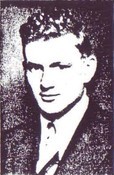
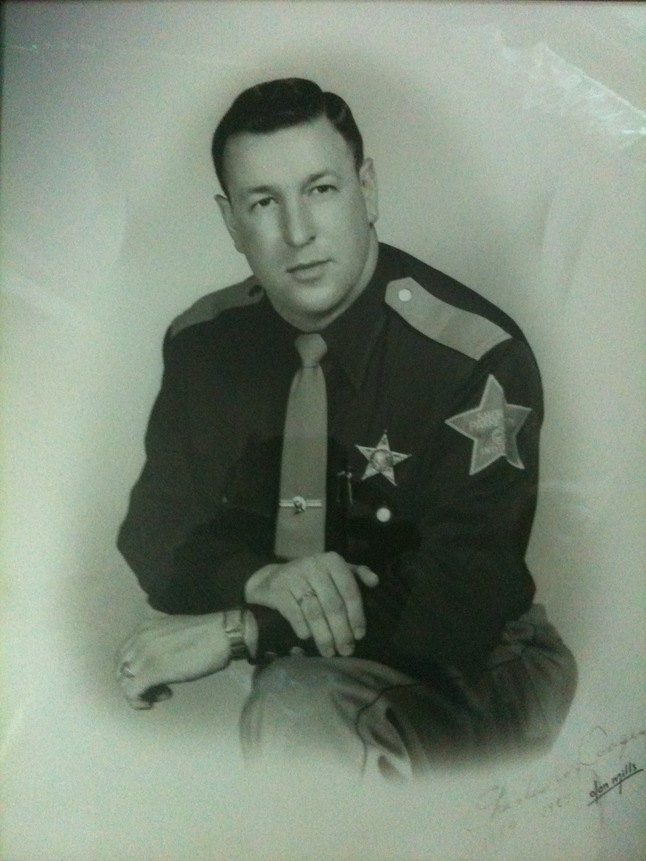
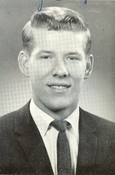
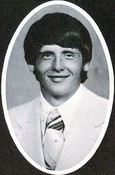
Earl Dowd, Charles Cooper, Gary Cooper, Mark Bridge
Nov. 4, 1958 thru 1966 -- Charles A. Cooper RHS 1949
Nov. 8, 1966 thru 1970 Max Webb
Nov. 3, 1970 thru 1978Gary Cooper RHS 1962
Nov. 7, 1978 thru 1986 -- Dennis "Mike" Eslinger
Nov 4, 1986 thru 1989Gene Hardman
Nov 6, 1989 thru 1998 -- Mark Bridge RHS 1978
Nov 1998 thru 2006 Chas. Bolinger
Nov 2006-- Dennis "Mike" Eslinger
Thanks to Alberta Butler, Randy Wright and Karen Zach for the Sheriff's data
For additional local history, visit our "Parke County History", "Grade School History", "School Buildings", "Rockville Landmarks", "Killed in Action", "Links & Tributes" sections.
IF YOU HAVE ANY OLD PICTURES OR INFORMATIONTHAT WOULD ENHANCE THIS SECTION, PLEASE CONTACT THE WEBSITE COMMITTEE.
BUSINESSES
MORE DETAILS OF THE FERGUSON LUMBER COMPANY
Solon Ferguson, born on Aug. 30, 1831, came to Rockville in 1886 with his wife Mary from Brighton, Illinois near East St. Louis and opened a mill four miles north of Rockville. Two years later he purchased a planing mill in 1888 at the age of 37 from Mr. Chance located at the present site on South Market Street. Solon's two son's Walter and Will grew up working around the mill. Walter (born in 1860 and died in 1941)) and William E.(known as Will or Billy who was born on Feb. 29, 1864 and died in 1943) worked at the sawmill from the time they were youngsters. When Walter was fifteen and Will was eleven, the two boys bought a team of horses (named Mike and Belle) and began hauling timber to the planing mill in Rockville. They got $0.25 per 100 board feet and made $2.50 to $3.50 per day ... the two boys making the equal of one man's pay. And with their earnings they bought their own clothes and paid for their board at home.
.jpg)
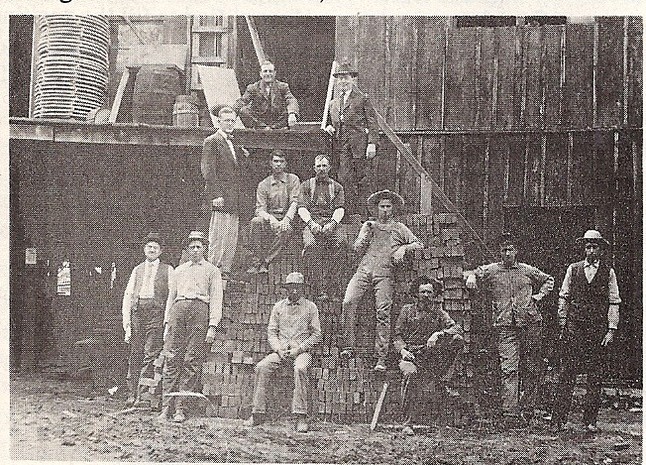
Brooks T Collings came from a large and successful farming family north west of Rockville out on Strawberry Road. Brooks graduated from Rockville High School in 1909 and turned down a football athletic scholarship to Wabash College in Crawfordsville, Indiana so he could go to work at the Ferguson Lumber Company and marry the boss's (Will Ferguson's) daughter, Mary.
In 1937, Walter & Will Ferguson and his son-in-law, Brooks Collings, and Marion Martin formed a new partnership. Brooks Collings and Mary Ferguson had four children: Mary Louise Collings McMillin Ryer (1915-1994 and class of 1932), Paul Benjamin Collings (1917-1970), William Collings (1926-2009), and John Richard "Dick" Collings(1928-2000). At one time, almost every home on South Market Street was occupied by a member of a Ferguson or Collings family. The company survived another disastrous fire in 1952.
After graduation,two of Brooks sons, Paul Collings and Dick Collings both went to work at the Lumber Company,Mary Ferguson Collings (nicknamed Mary Frank) died on May 1, 1963 at the age of 74 and their father, Brooks Collings died three years later on May 25, 1966 at the age of 79.
Rockville Air Force Station was one of twenty-eight stations built as part of the second segment of the Air Defense Command permanent radar network. Prompted by the start of the Korean War, on July 11, 1950, the Secretary of the Air Force asked the Secretary of Defense for approval to expedite construction of the permanent network. Receiving the Defense Secretary's approval on July 21, the Air Force directed the Corps of Engineers to proceed with construction.
Opened in 1951, the 782d Aircraft Control and Warning Squadron was activated on 16 April. It began operating a pair of AN/FPS-10 radars at Rockville in May 1952, and initially the station functioned as a Ground-Control Intercept (GCI) and warning station. As a GCI station, the squadron's role was to guide interceptor aircraft toward unidentified intruders picked up on the unit's radar scopes. In the mid / late 1950s, an AN/CPS-6B search radar was in use, according to one veteran.
During 1959 Rockville AFS joined the Semi Automatic Ground Environment (
In addition to the main facility, Rockville operated an AN/FPS-18 Gap Filler site:
- Neoga, IL (P-53A) 39°20′15″N 088°23′48″W? / ?39.33750°N 88.39667°W
Rockville AFS was closed on 2 June 1966 due to budget reductions. It was sold to the state of Indiana and is now the Rockville Correctional Facility. Many former Air Force buildings are still in use.
The following narrative was provided by Joe Stutler, Class of 64
ROCKVILLE WOMENS CORRECTIONAL FACILITY
Rockville Correctional Facility is a state prison located in Adams Township, Parke County, one mile (1.6 km) northwest of Rockville, Indiana. It is the largest state prison for women in Indiana with approximately 1,200 women.[1] Although it is classified as a medium-security prison, it has inmates of all security levels.
|
|
History
The facility was originally the Rockville Air Force Station, a radar base established by the U.S. Air Force in the beginning of the 1950s, only to be deserted ten years later. It was resurrected by the Department of Correction as a juvenile male correctional facility in 1970. The facility went through many changes after that: from a prison for older juveniles, to a co-ed prison for adolescent males and adult females, then finally to a prison for adult females in 1992.[2] Before 1992, Indiana had only one women’s prison, the Indiana Women's Prison, which was located in downtown Indianapolis and, therefore, unable to expand. Thus, the Department of Correction converted Rockville into a women’s prison to serve the growing female population.
Buildings and grounds
In 1995 the Indiana General Assembly approved a plan to rebuild Rockville completely. Following that decision, 23 structures were demolished, five were upgraded, 13 new buildings were built and the entire facility’s infrastructure was replaced. The facility’s campus is located on 52 acres (210,000 m2) and now has 22 buildings and two employee residences. Dorm 1 was constructed in 1985 for juveniles and now houses the CLIFF Unit. The other four dorms are almost identical in size and configuration. Dorm 2 was constructed in 1993 and now serves as the Intake Unit for the Indiana Department of Correction female offenders. The remaining doorms were completed in 1997. The Town of Rockville provides the prison’s water and sewage services.[2]
Programs
Rockville’s on-site school, Parkeview School, has a GED program as well as courses in culinary arts , building trades, computer literacy, horticulture, home maintenance and business technology . Oakland City University, Indiana State University and Ivy Tech all offer university courses for degrees. In addition, Oakland City University offers vocational training in Computer Assisted Drafting.[3]
Rockville has several noteworthy programs for inmates. The Hope Center offers parenting classes for inmate mothers and allows them to practice their skills and establish a positive relationship with their children. The ICAAN Assistance Dog program allows inmates to train pups until they are fifteen months old. The inmates give the pups basic obedience training and teach them to do things such as opening doors, turning off lights, and carrying phones.[3]
Inmate population
Of the 1,205 inmates at Rockville, 67% are white, 29% are black, 2% are Hispanic and the remaining 2% are American Indian, Asian/Pacific and unknown. The average age of the women at intake is 33 and the average current age is 35. Nearly one-third of the women are there for substance abuse. The majority of the women at Rockville are serving sentences of two to ten years with less than 1% indeterminate life or life without parole. Only 5% are in prison for murder.[4]
Famous inmates
Paula Cooper#864800 is Rockville’s most famous inmate [1], who was convicted in 1985 of killing a Sunday school teacher, Ruth Pelke, when Cooper was only fifteen years old. When she received the death penalty, she was the youngest person ever to be put on Indiana’s Death Row.[5] In 1986, while Cooper was on death row at the Indiana Women’s Prison, her case was assigned to a new lawyer, Monica Foster. Foster and others organized a campaign to commute Cooper’s death sentence. Two million people signed petitions to Indiana governor Robert D. Orr, and one million people signed petitions to the United Nations. In 1987, Governor Orr also received a well-publicized appeal from Pope John Paul II. The Indiana Supreme Court heard arguments on this case and on July 13, 1989 overturned the death sentence, giving Cooper a new sentence of 60 years, the maximum allowable prison term.[6] She is now serving her sentence at the Rockville Correctional Facility.
Sarah Jo Pender, who was serving a 110 year sentence for her participation in the murder of two people, managed to escape from Rockville on August 4, 2008. She was helped by correction officer Scott Spitler.[7] She was added to the U.S. Marshals most wanted fugitive list in October 2008 and was then the only woman to be so.[8] She was featured on America Most wanted and was arrested hours after a rerun of the TV-show, in December 2008.[9]
Rockville Correctional Facility was featured on the Oprah Winfrey Network 7 episode mini-series Breaking Down the Bars starting February 15, 2011.[10] Later some of the inmates also appeared on Oprah's Lifeclass Tour, via videolink.[11]
Amber Portwood, from the reality TV series, 16 and Pregnant and Teen Mom, is serving a five-year sentence for failing to complete court ordered drug testing while on probation for two years for domestic violence. Amber is the mother to Leah Leann Shirley.
Infamous Correctional Officer
Mass Murderer Steven Kazmierczak, who shot and killed 5 students while wounding 21 others at Northern Illinois University, worked as a correctional officer at the Rockville Correctional Facility from September 24 to October 9, 2007.[12]
The first legal execution in Parke County was that of Noah Beauchamp, on Friday, February 18, 1843, in the timber southeast of the Old Rockville Cemetery (on east High Street), by Sheriff Jesse Youmans. People came from far and near to this execution, even Illinois and surrounding counties in this state. It was a bitter cold day and several women with babies in their arms were present and drank whiskey freely, with the men, in order to "drive out the cold".
The second execution in the county was that of Buck Stout, on August 8, 1883, by John R. Musser. His was a case transferred from Montgomery County, but was tried in the courts of Parke County. The hanging took place behind the courthouse jail building during Sheriff John Musser's term between 1882 & 1886.
